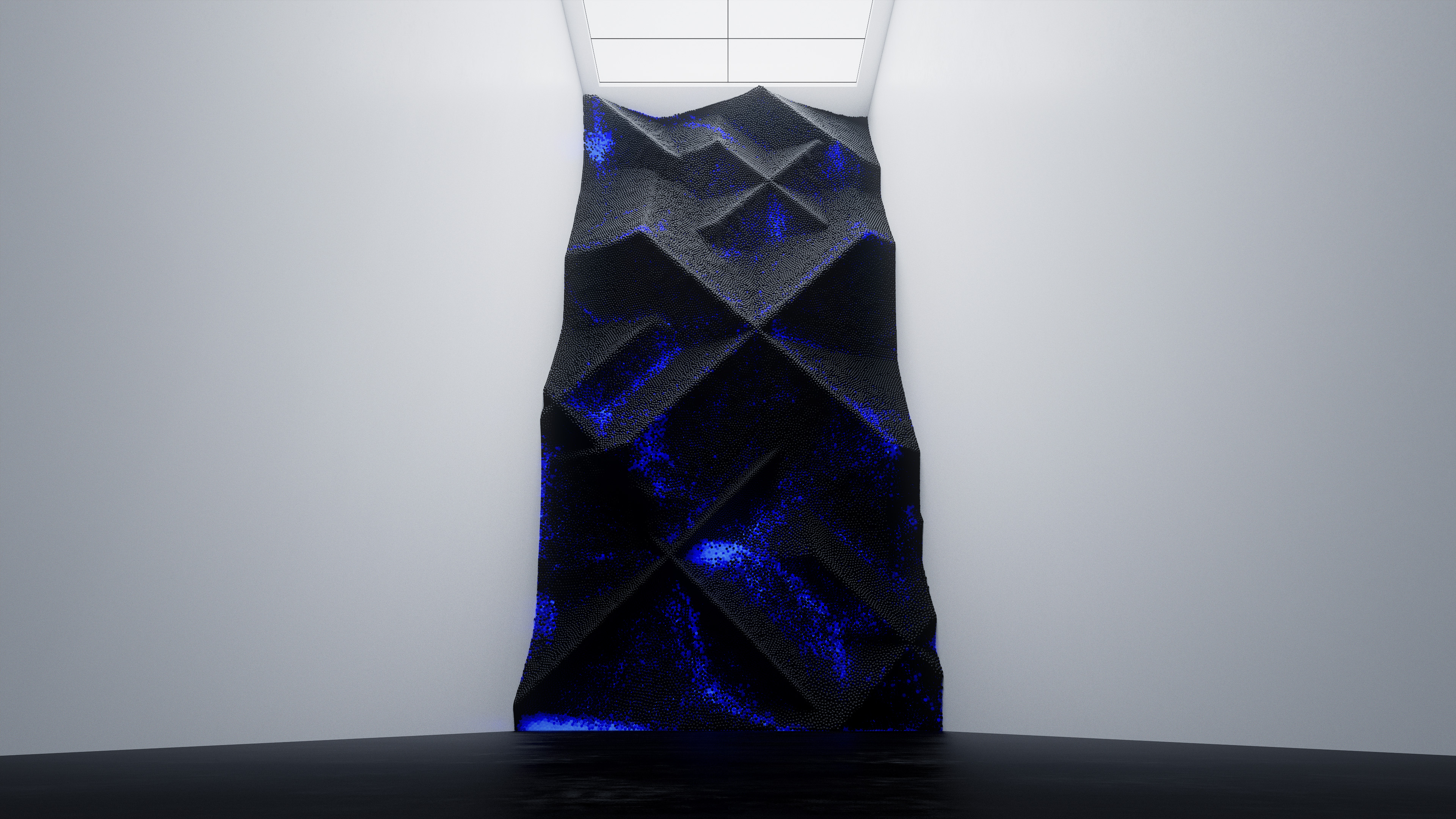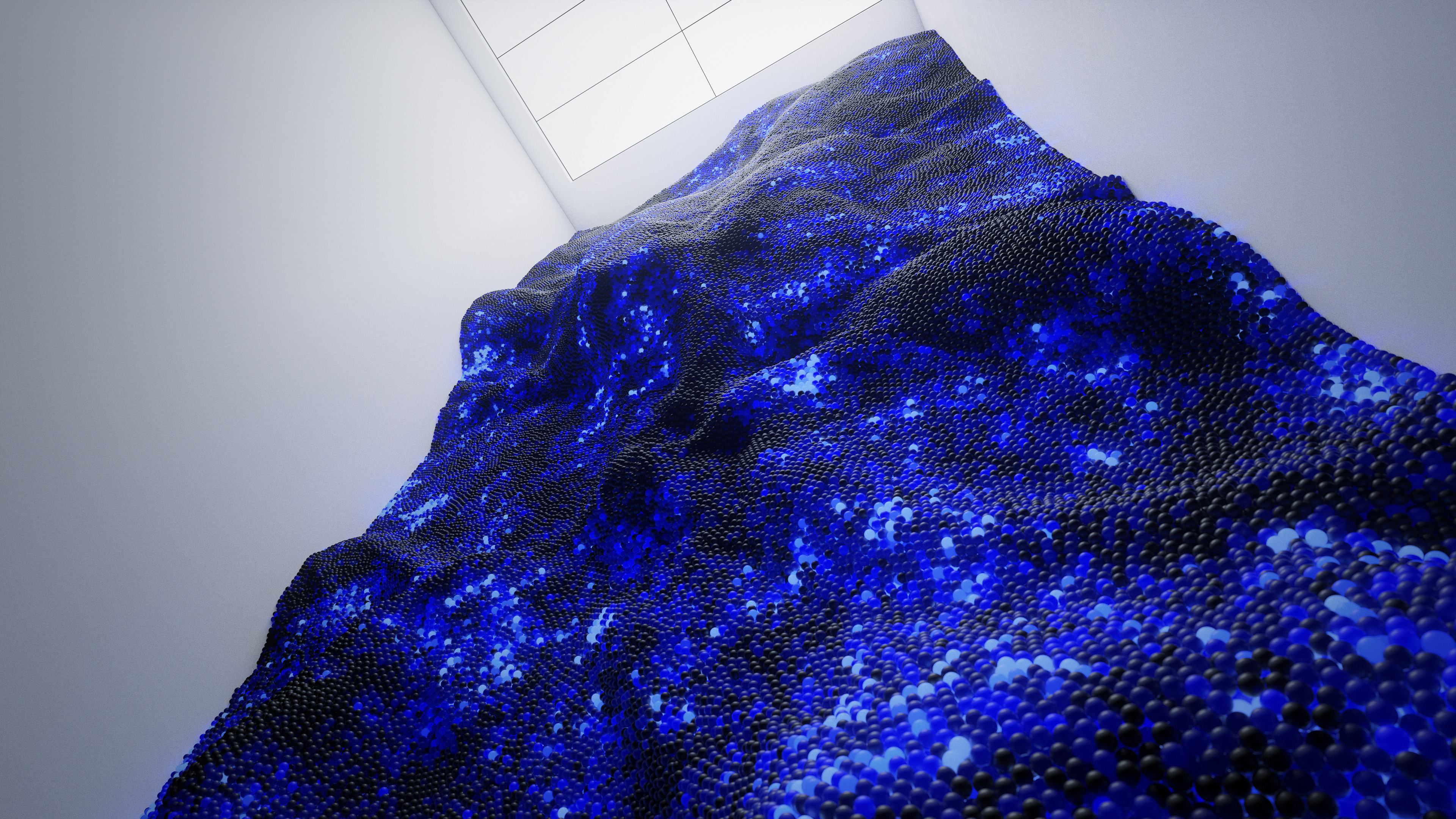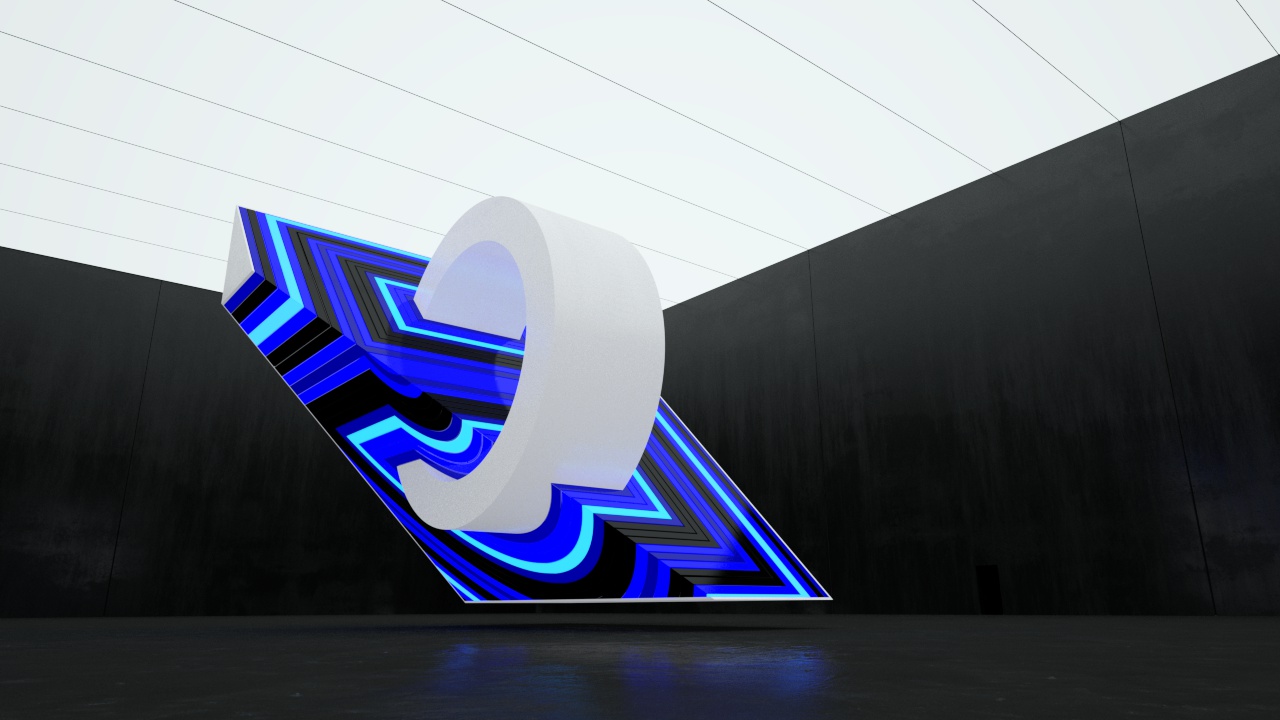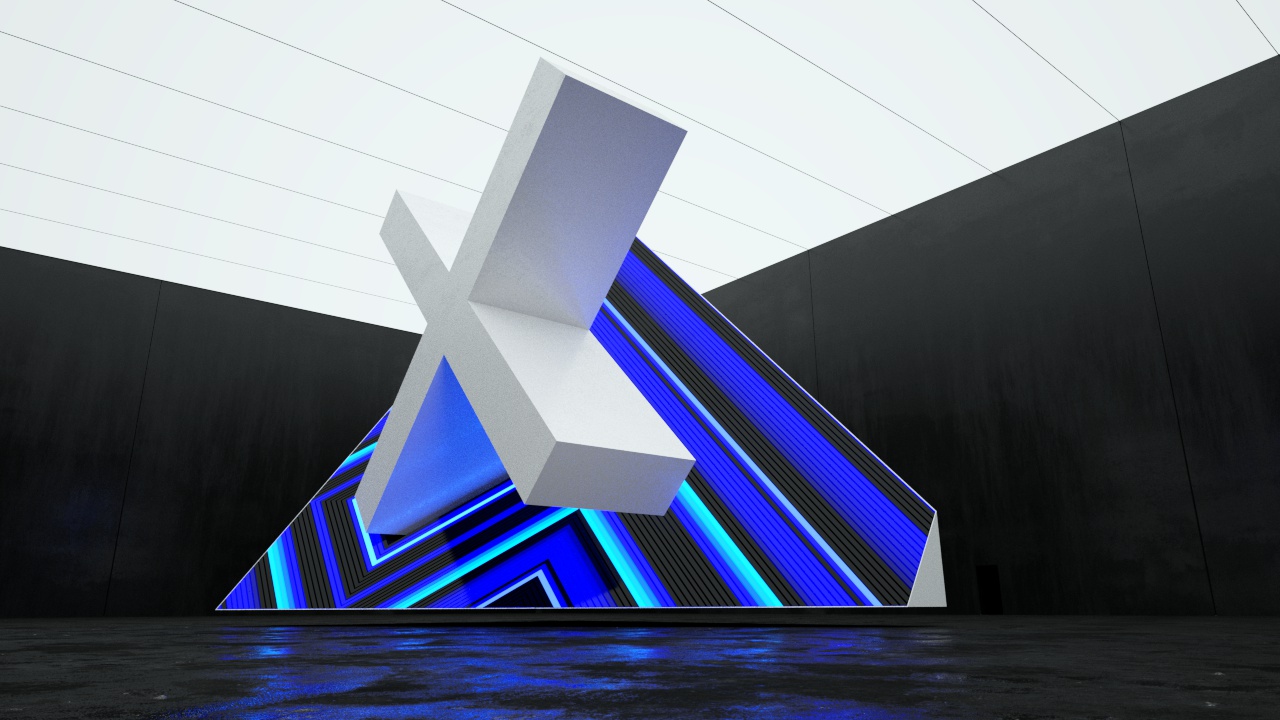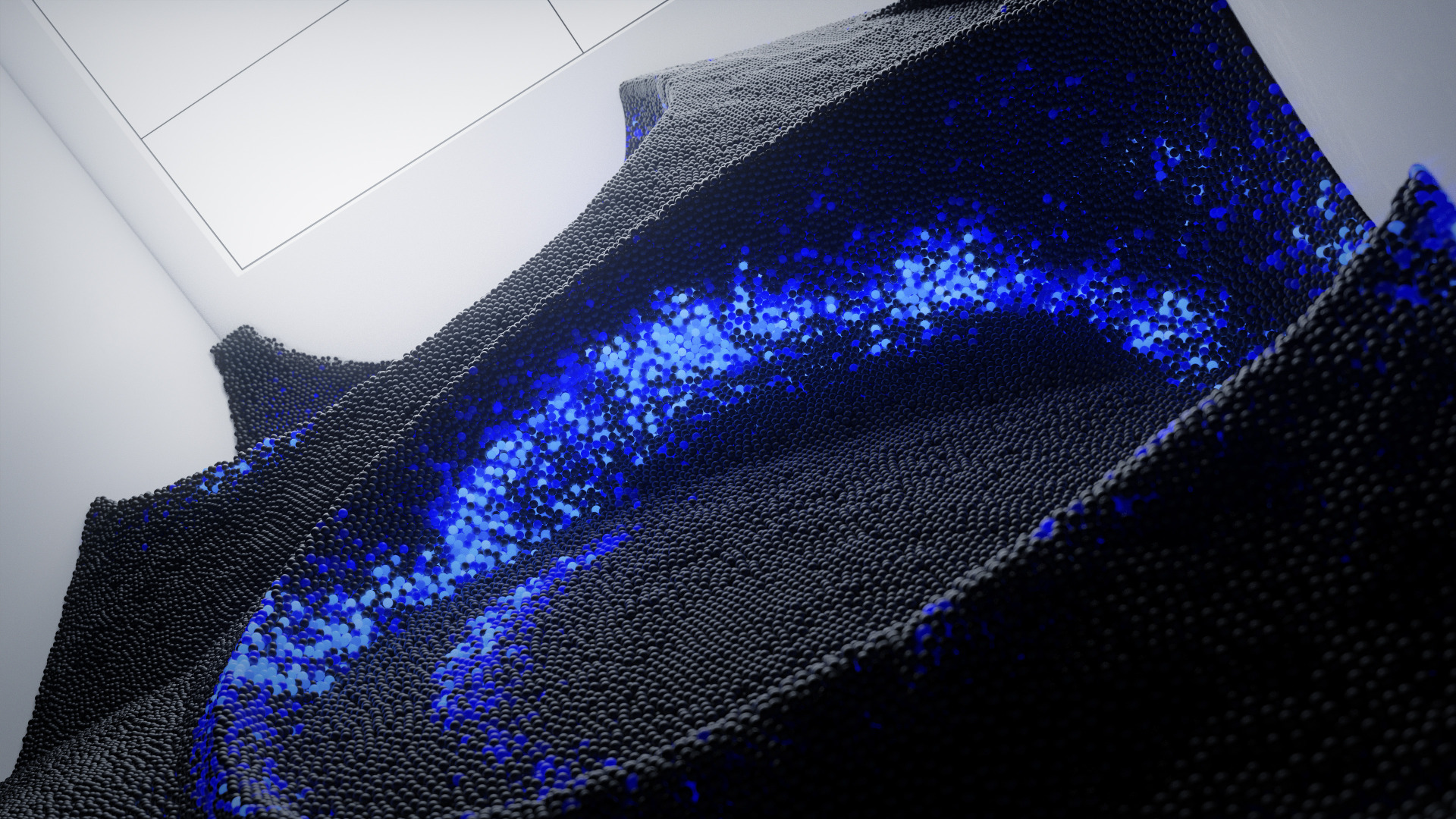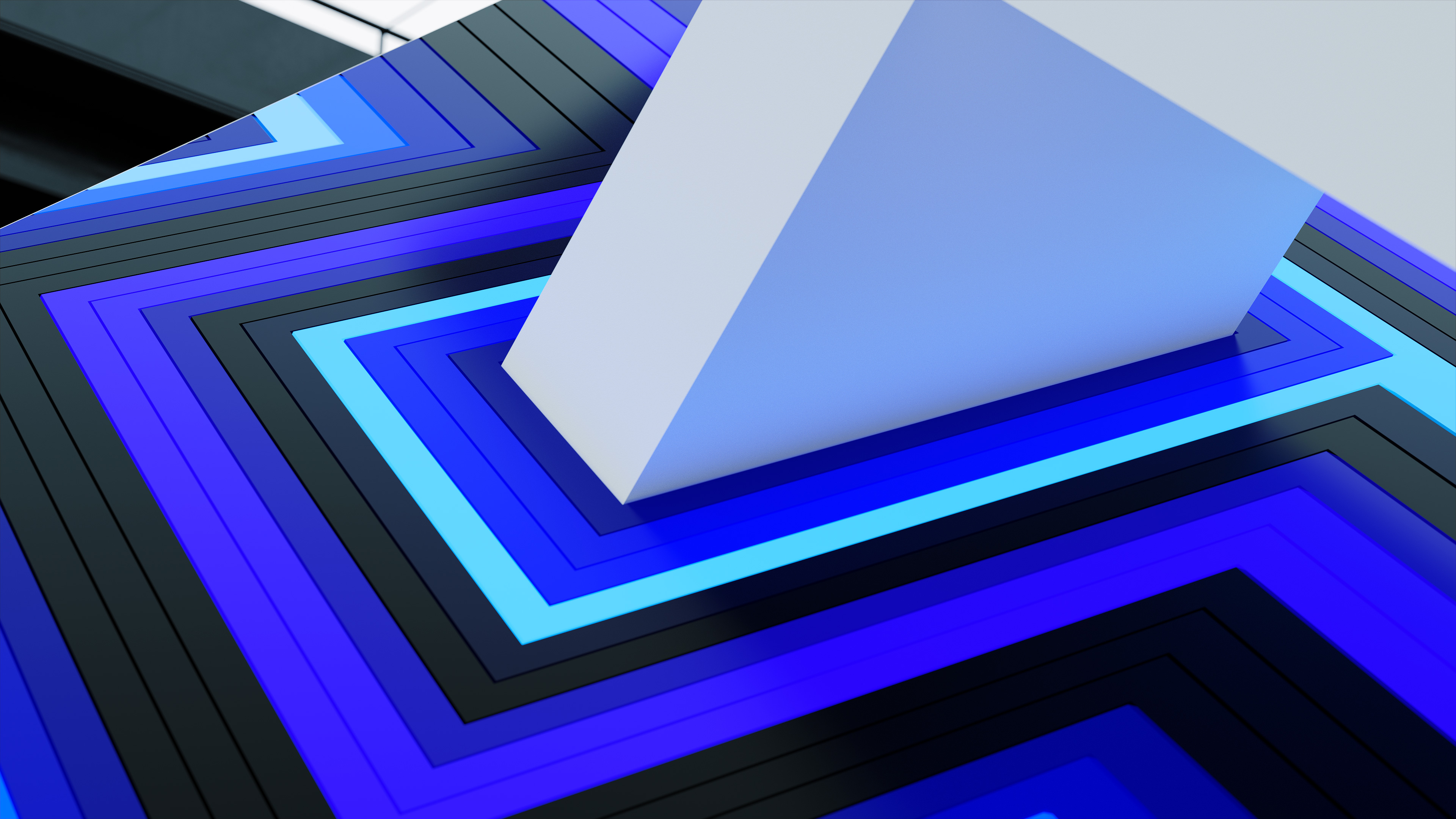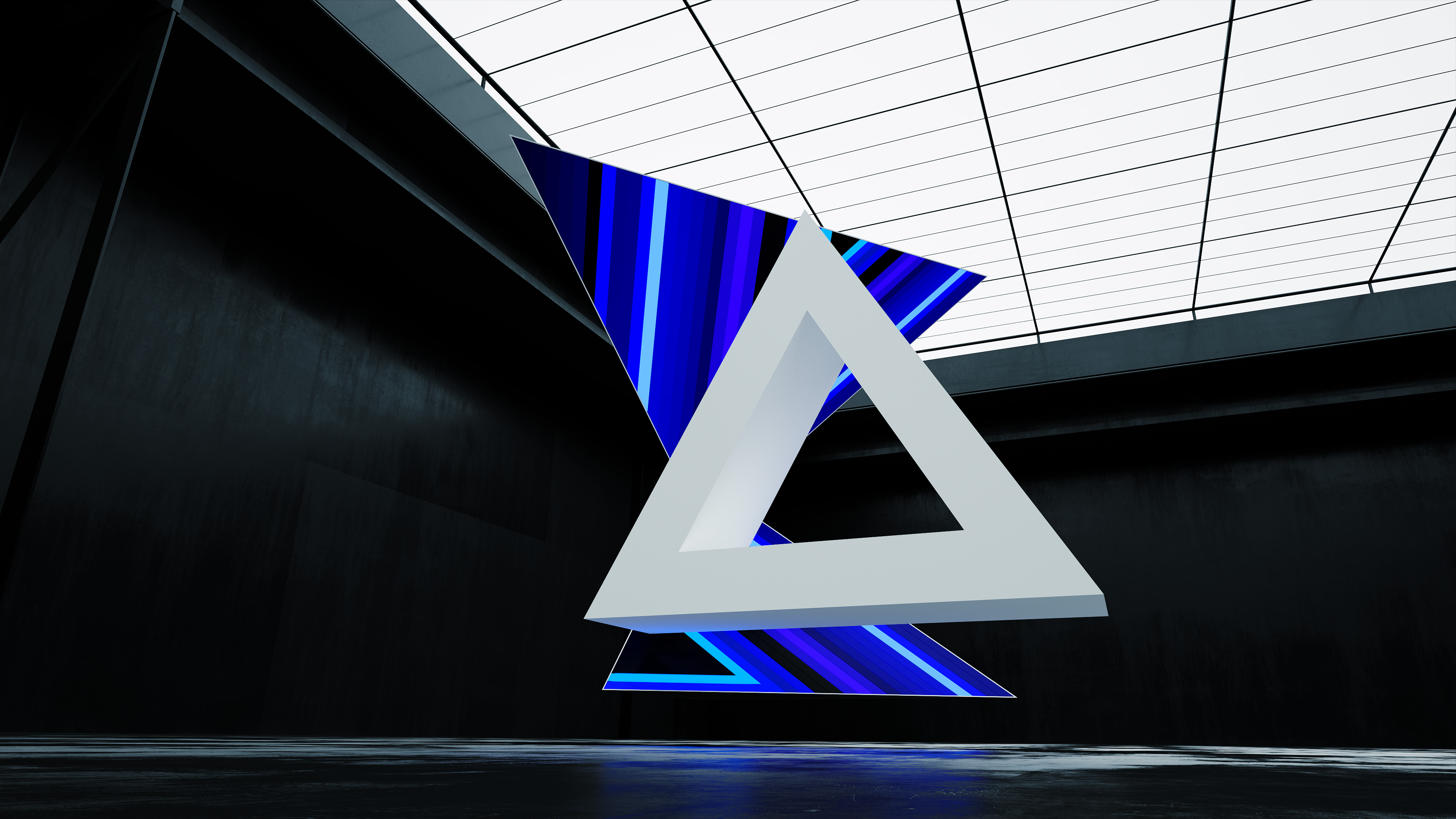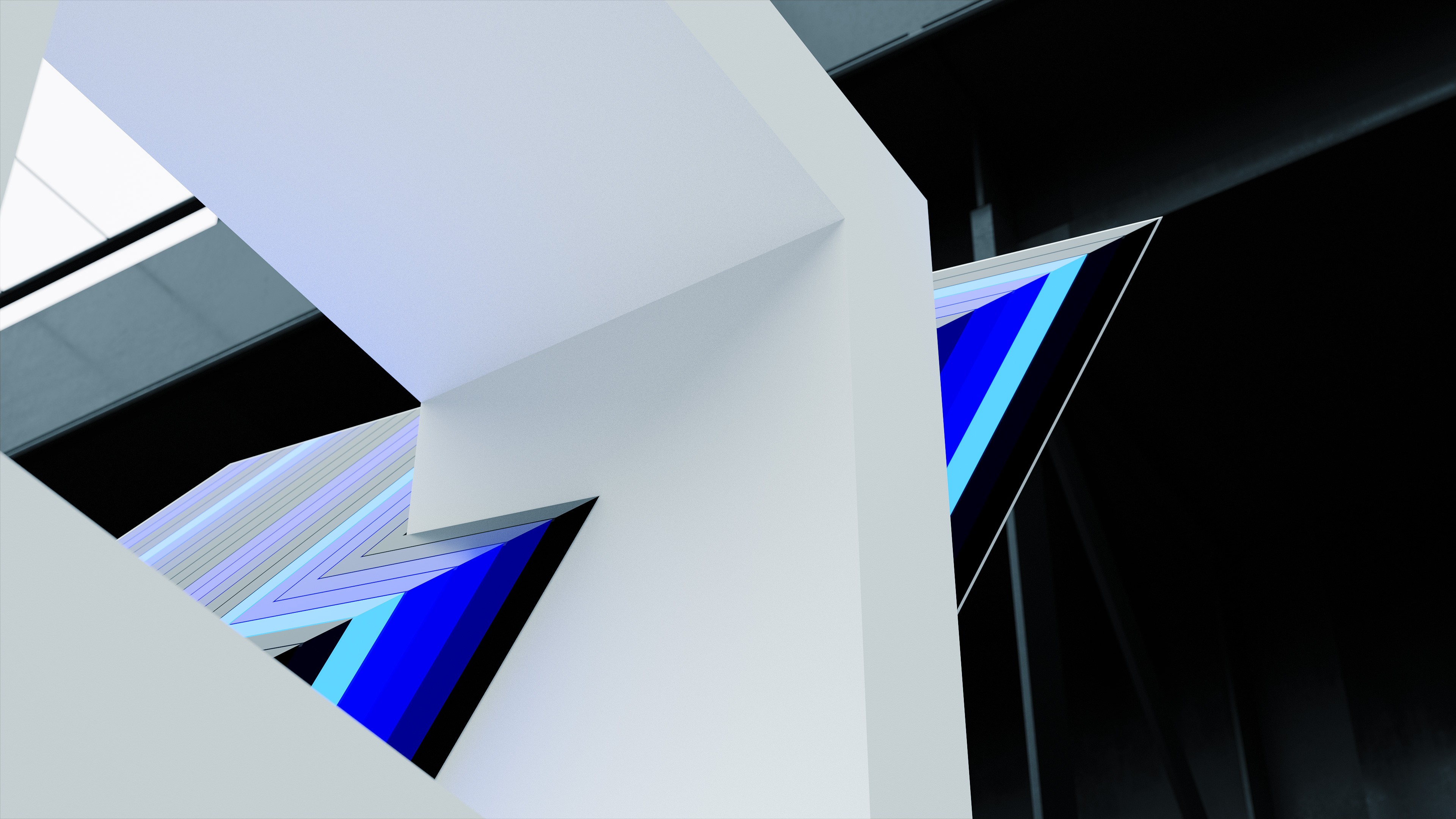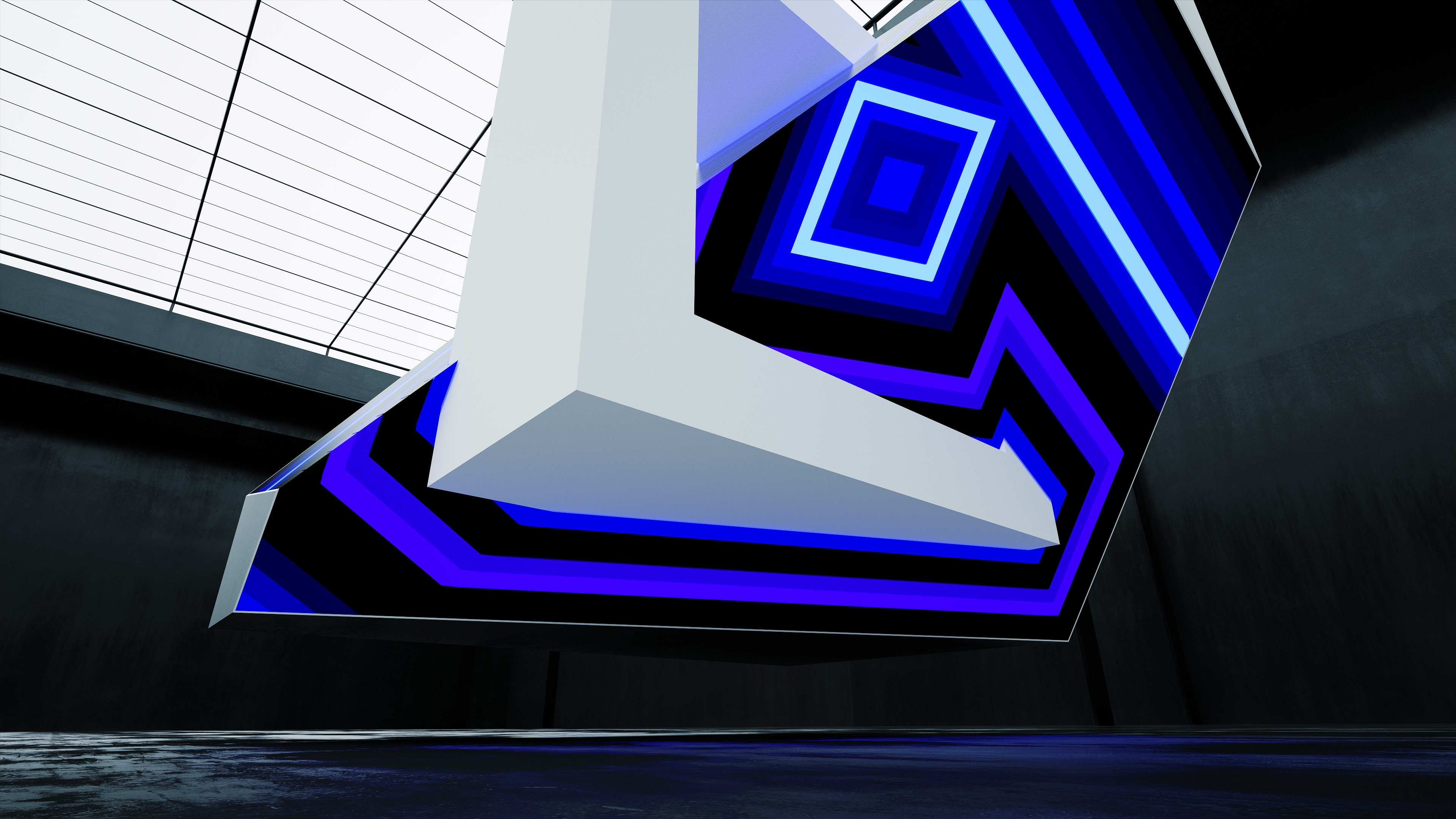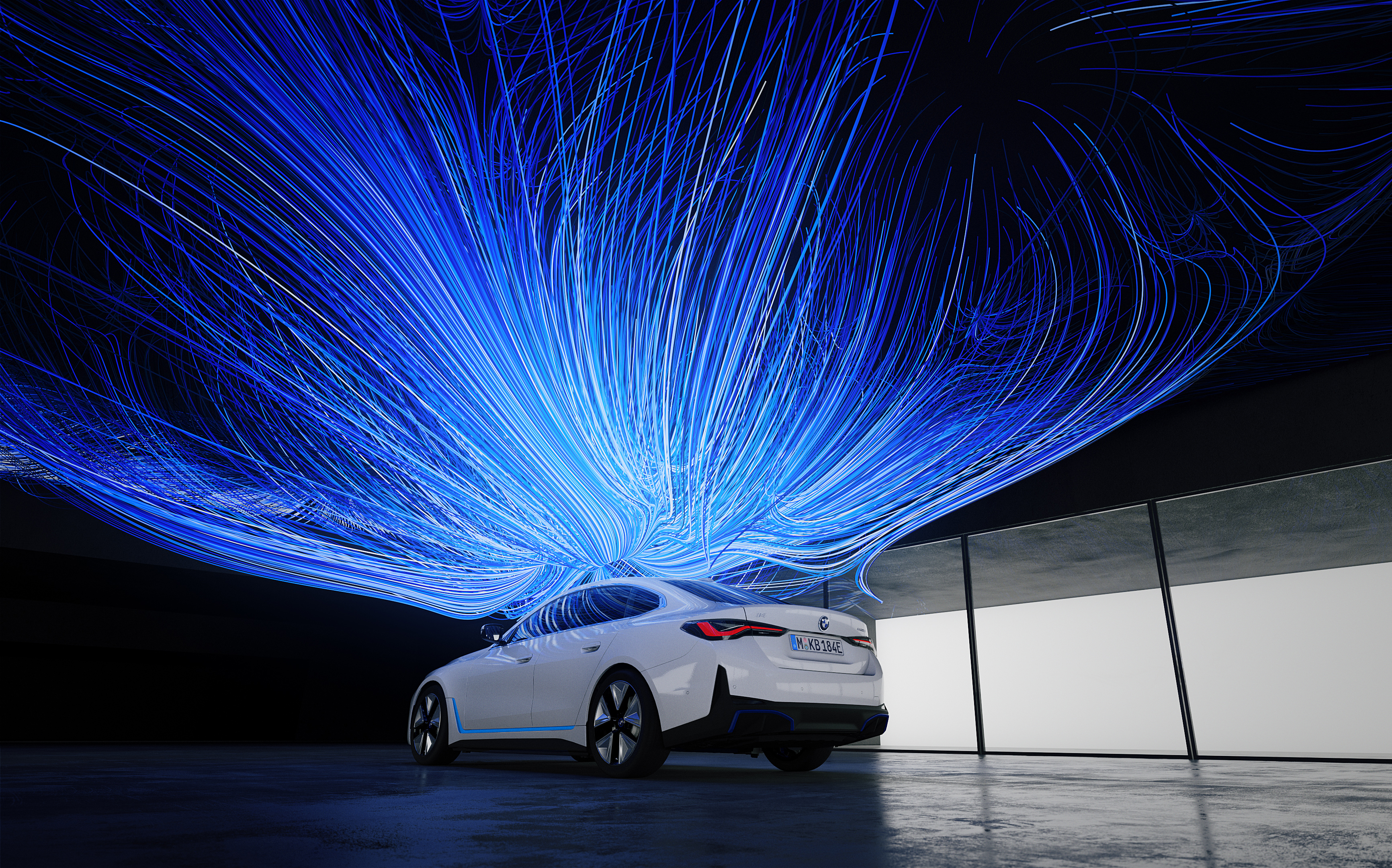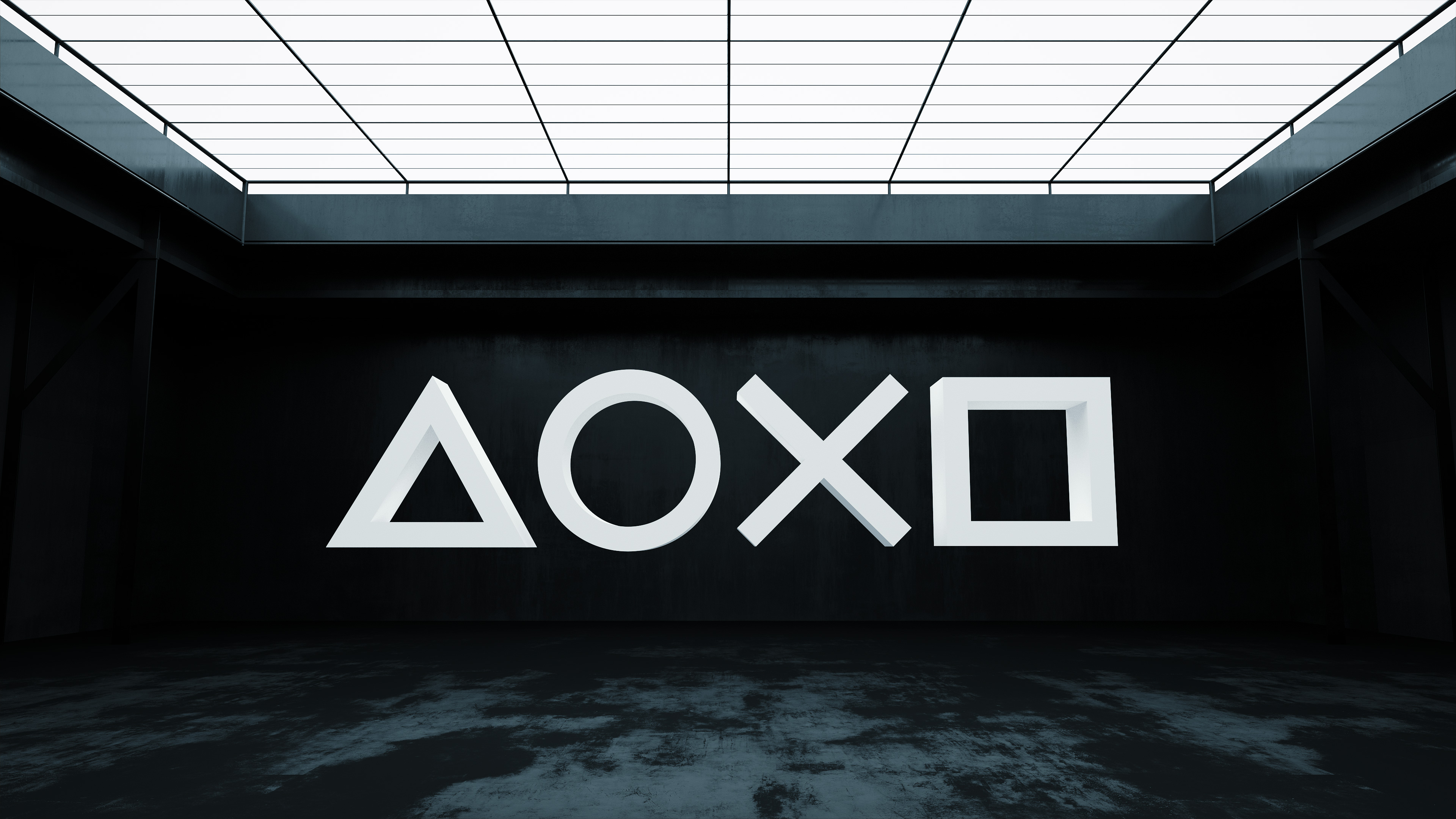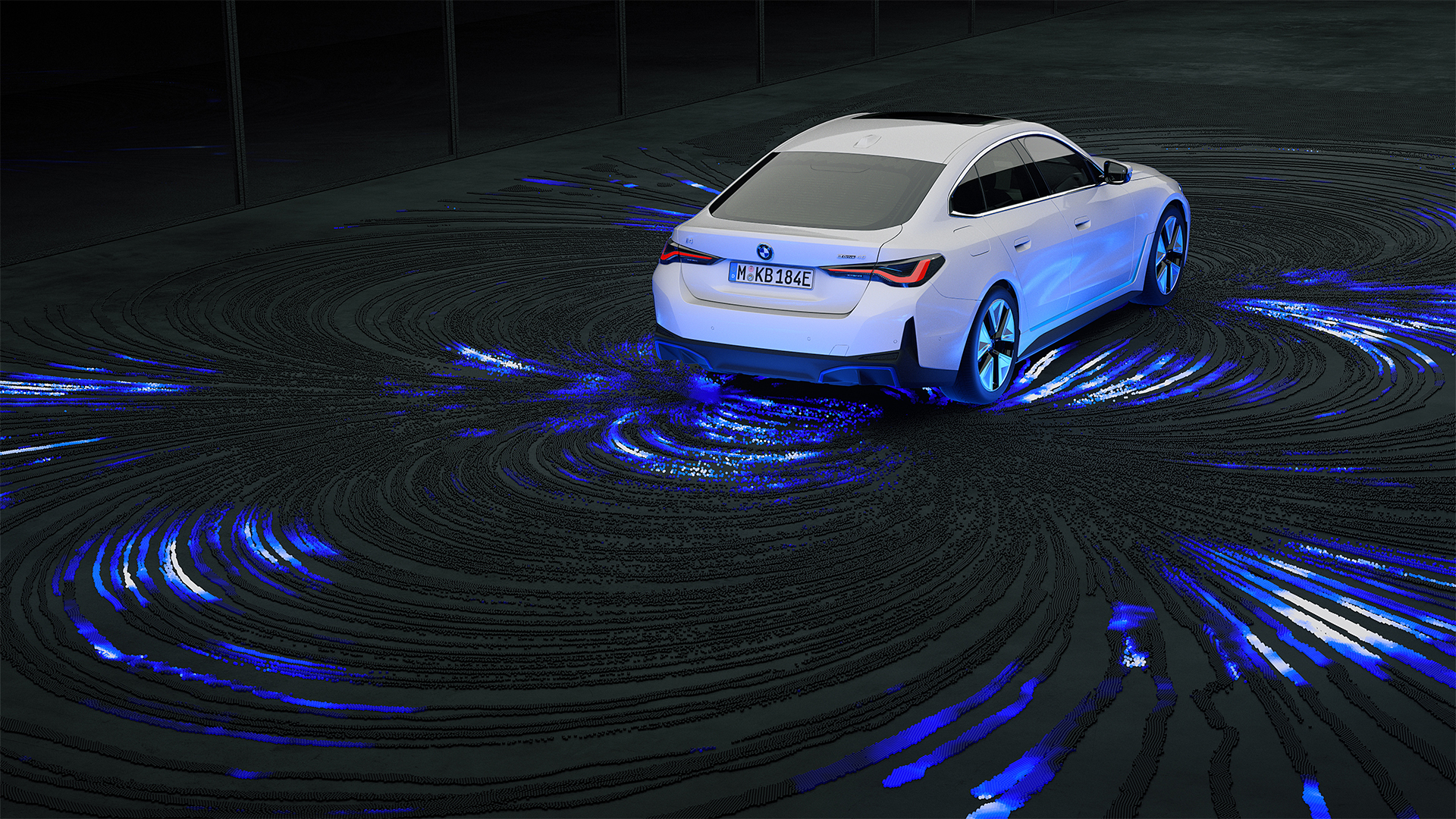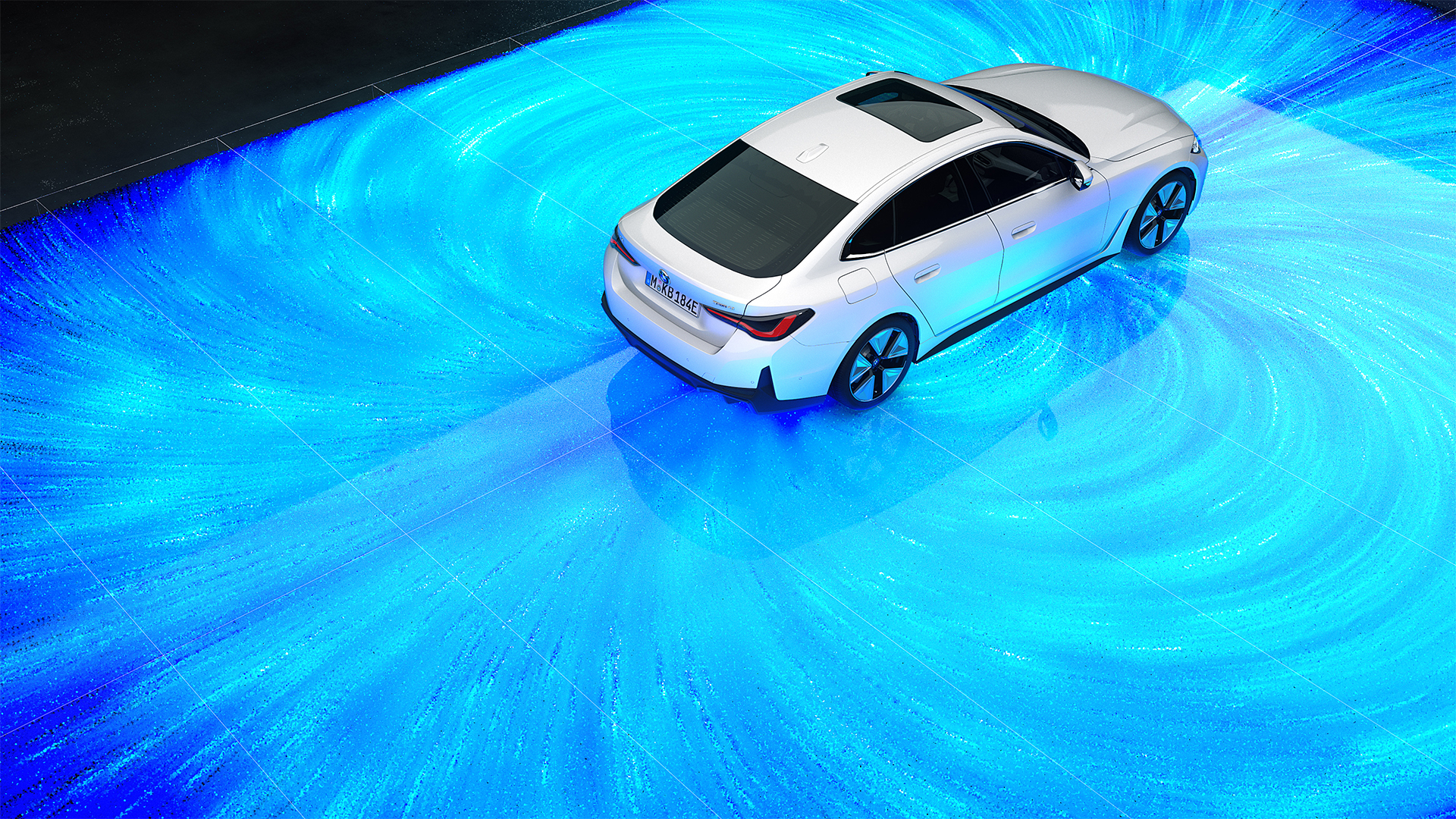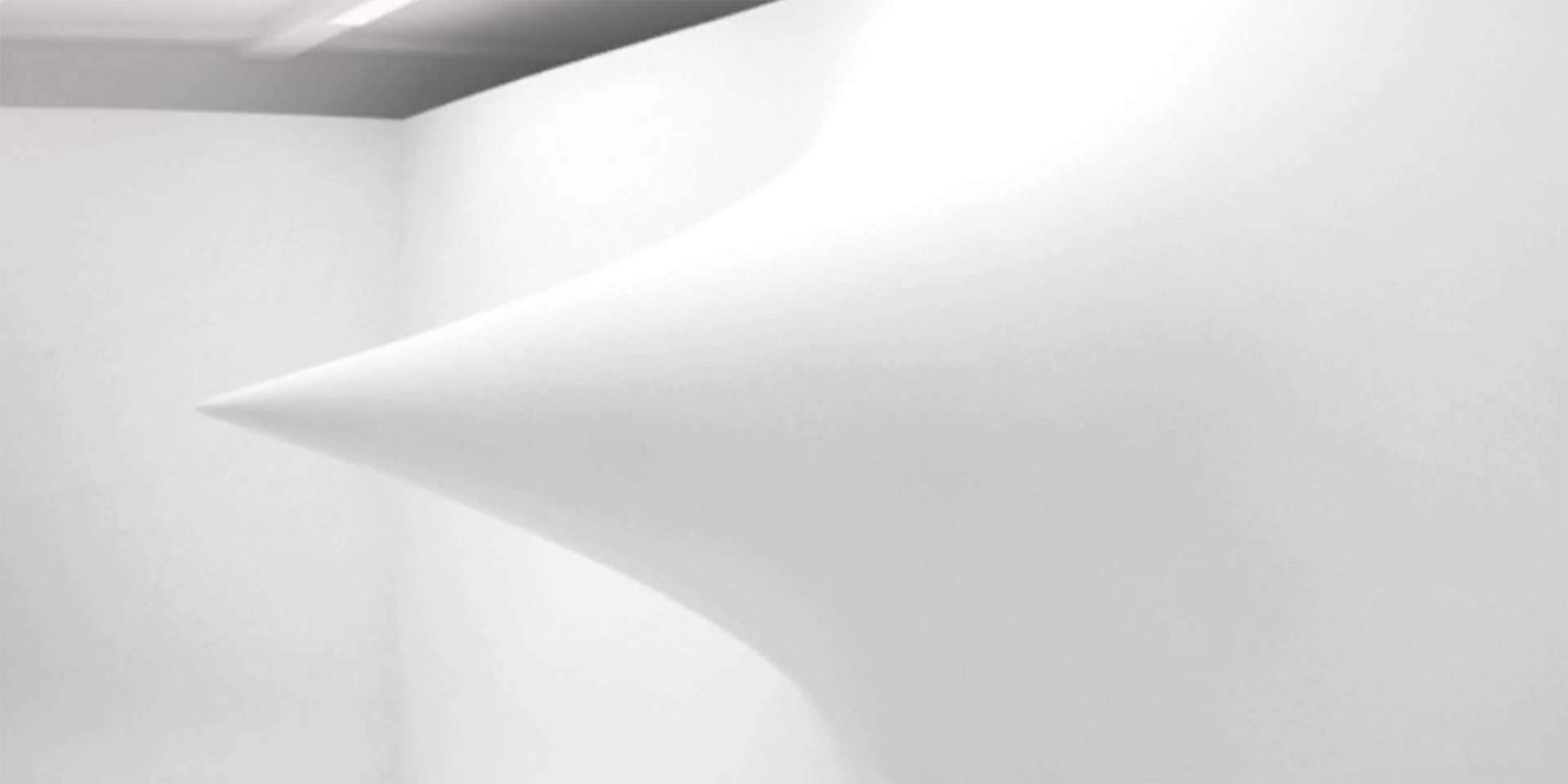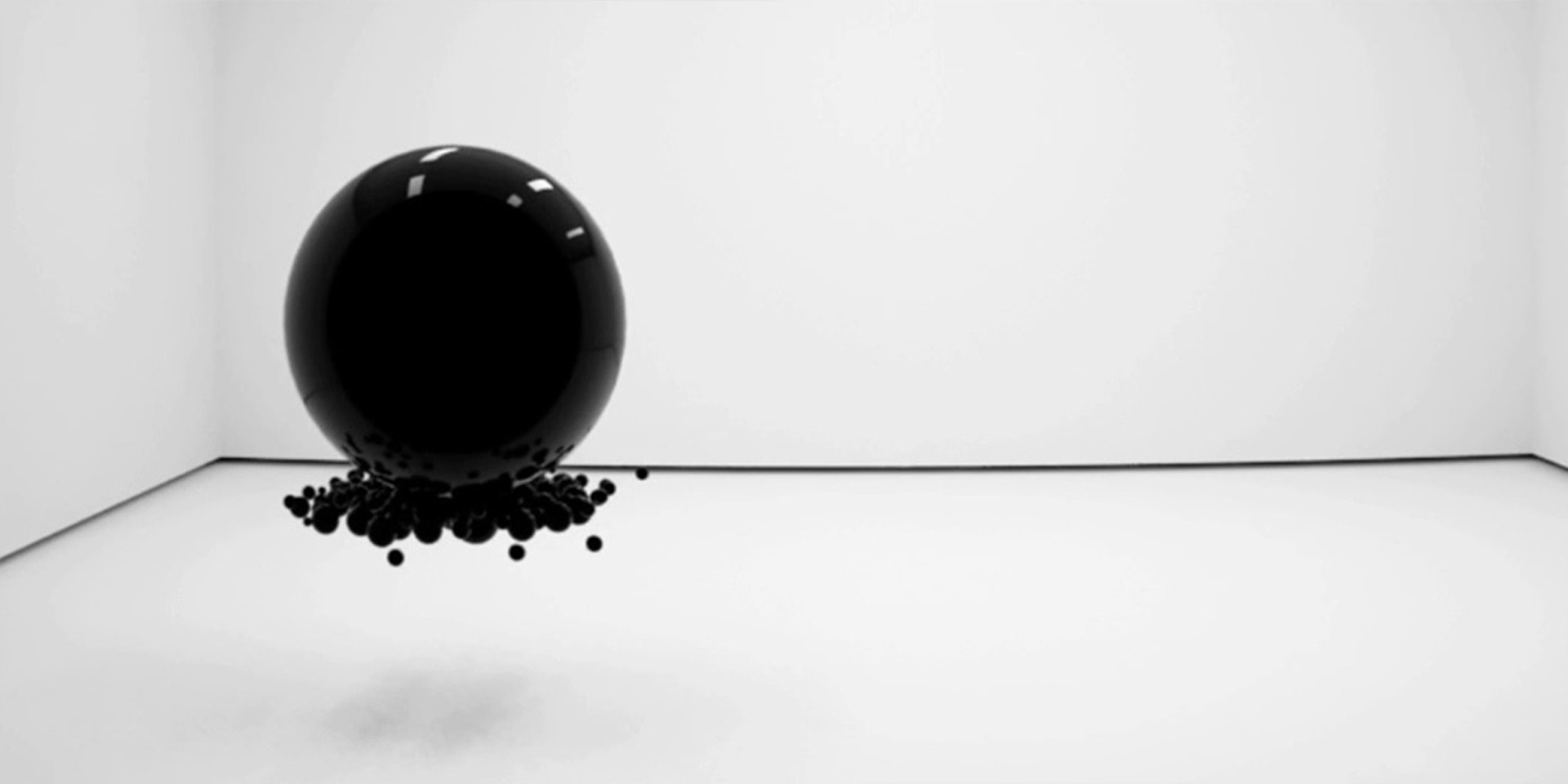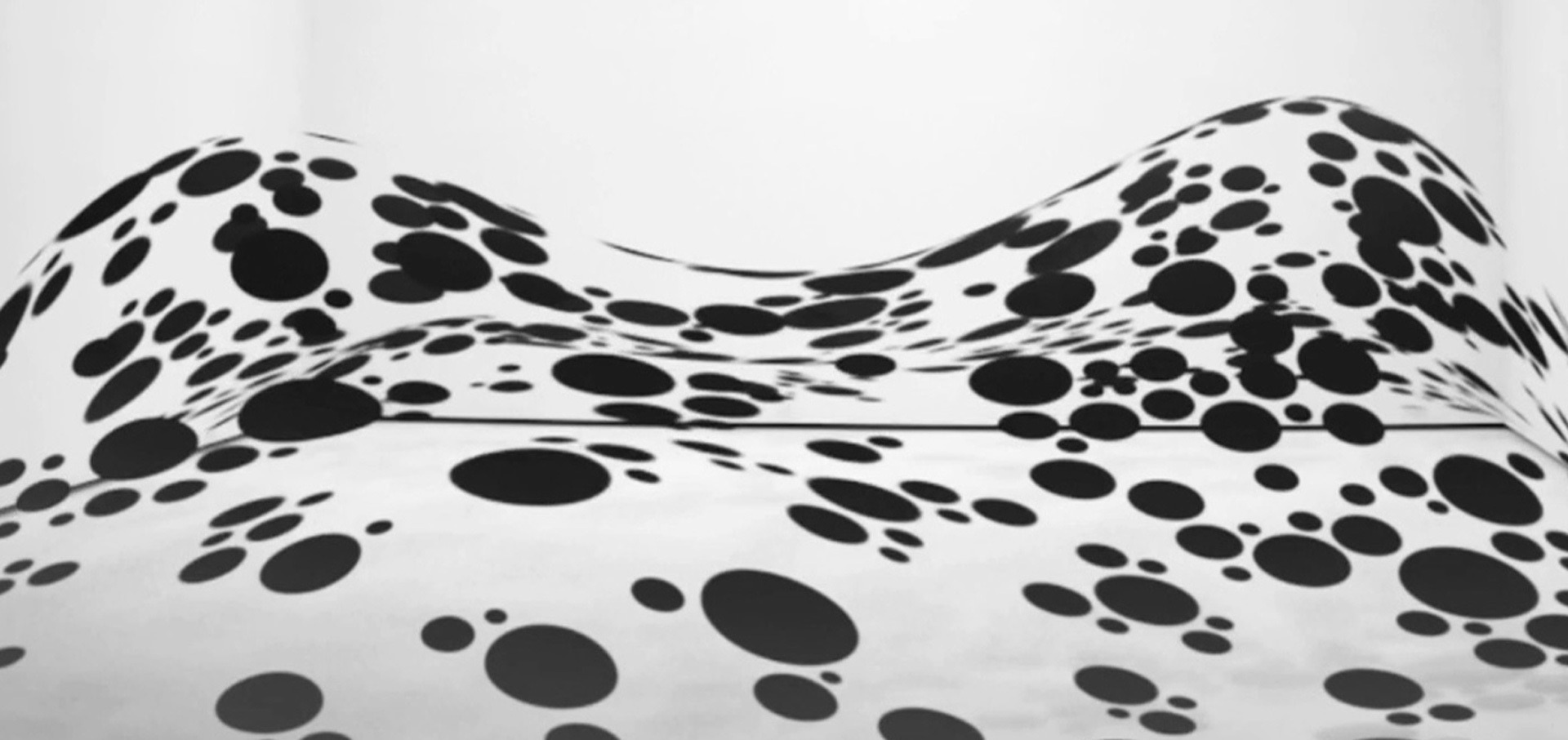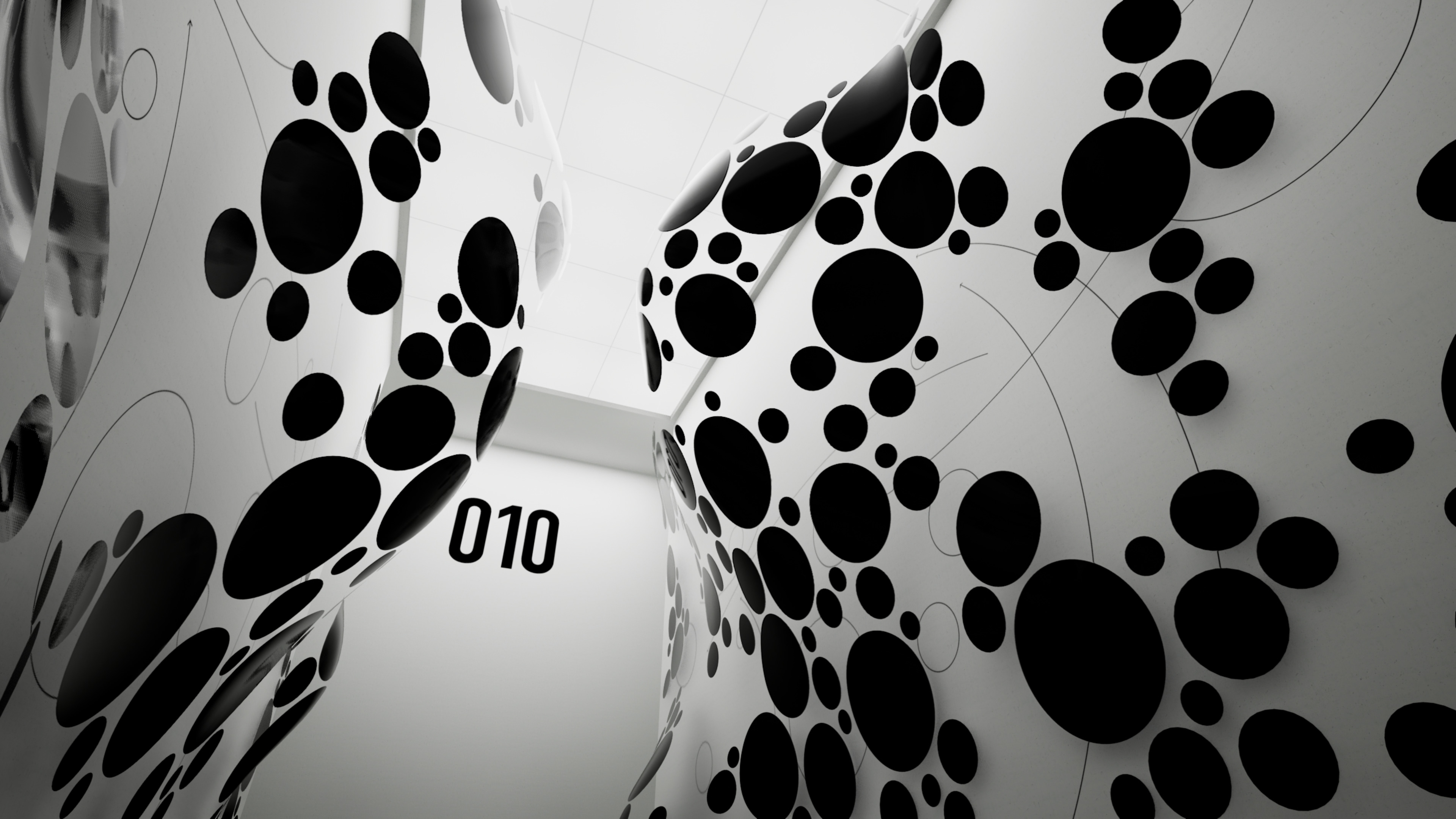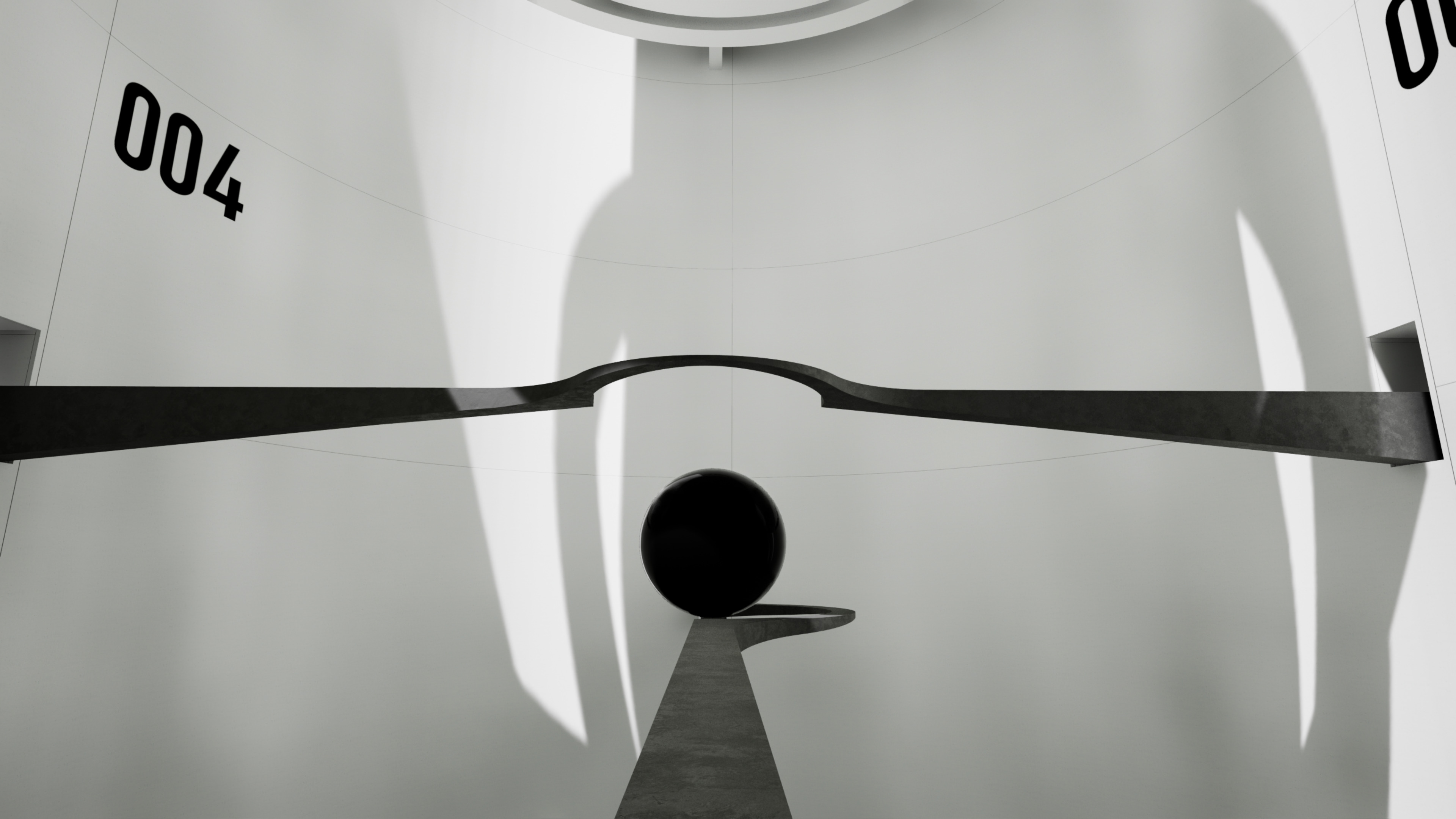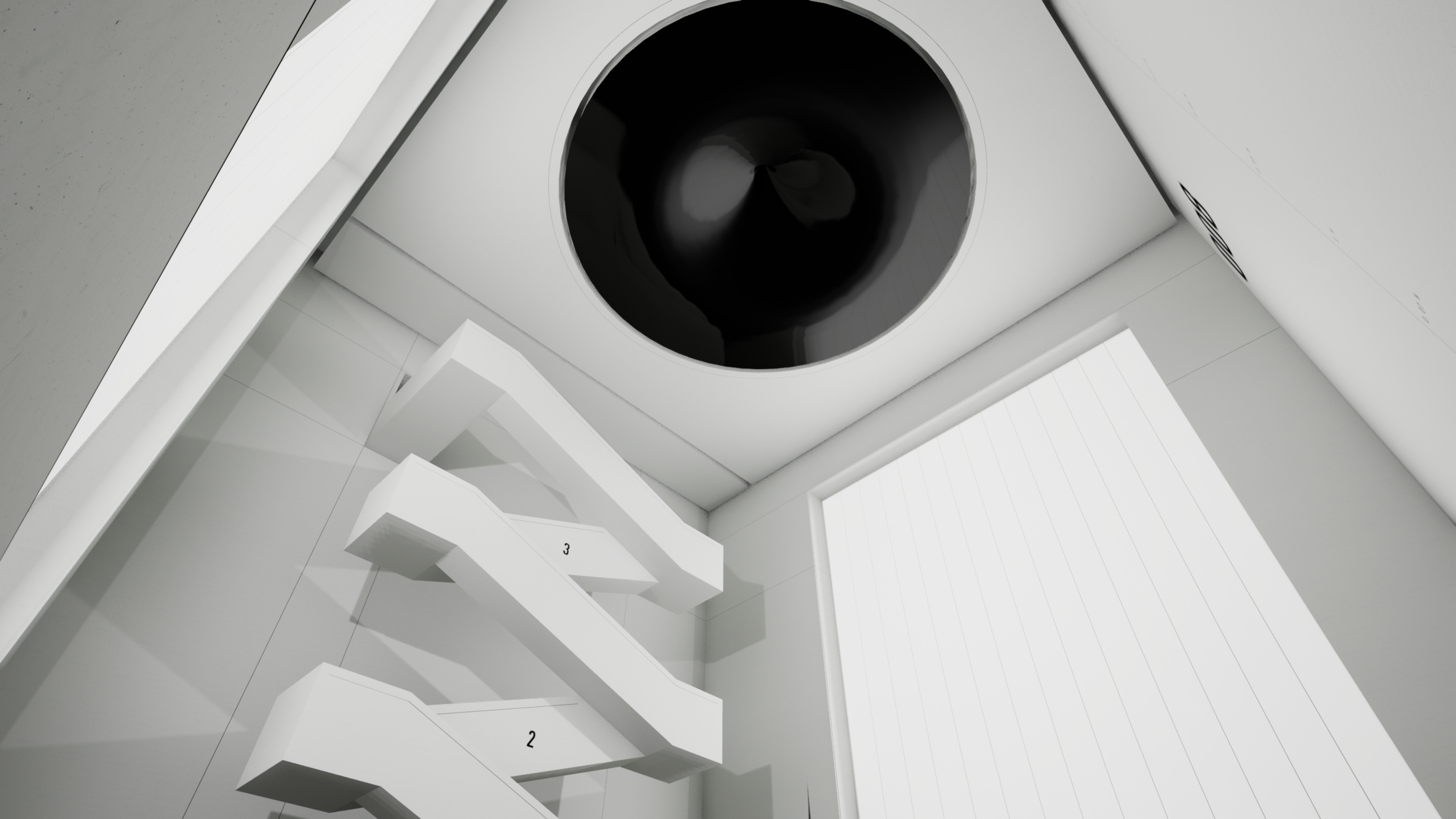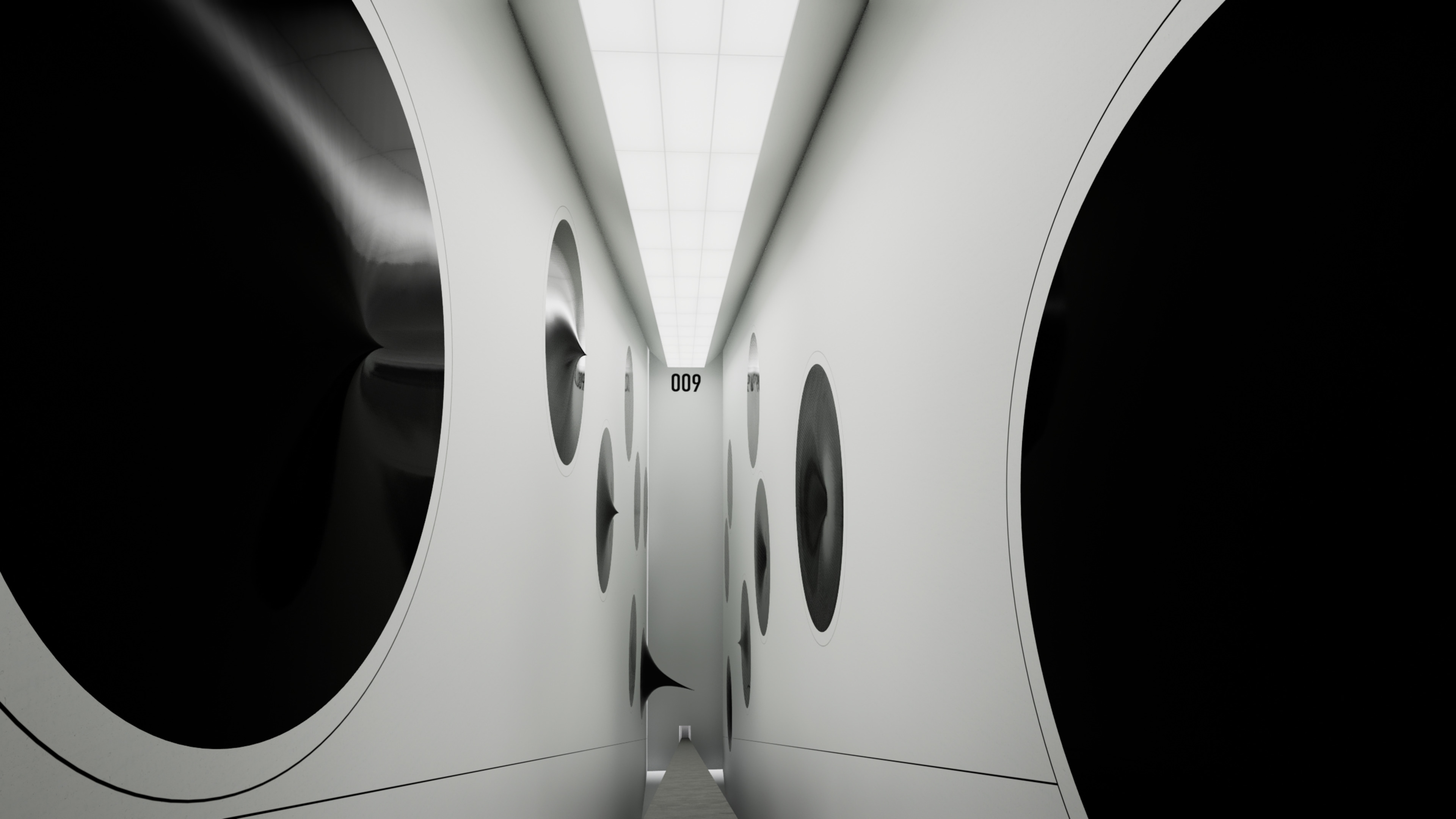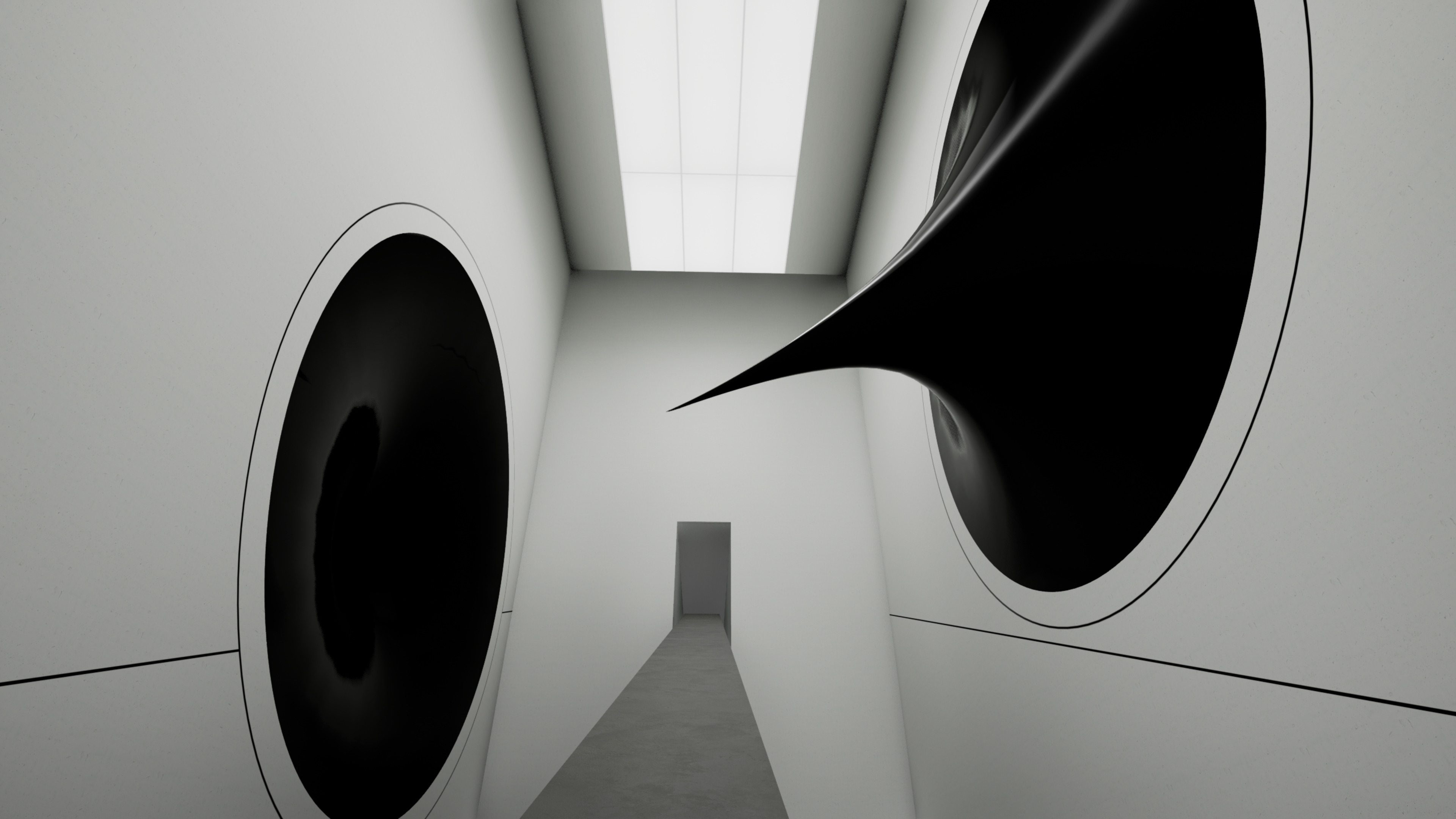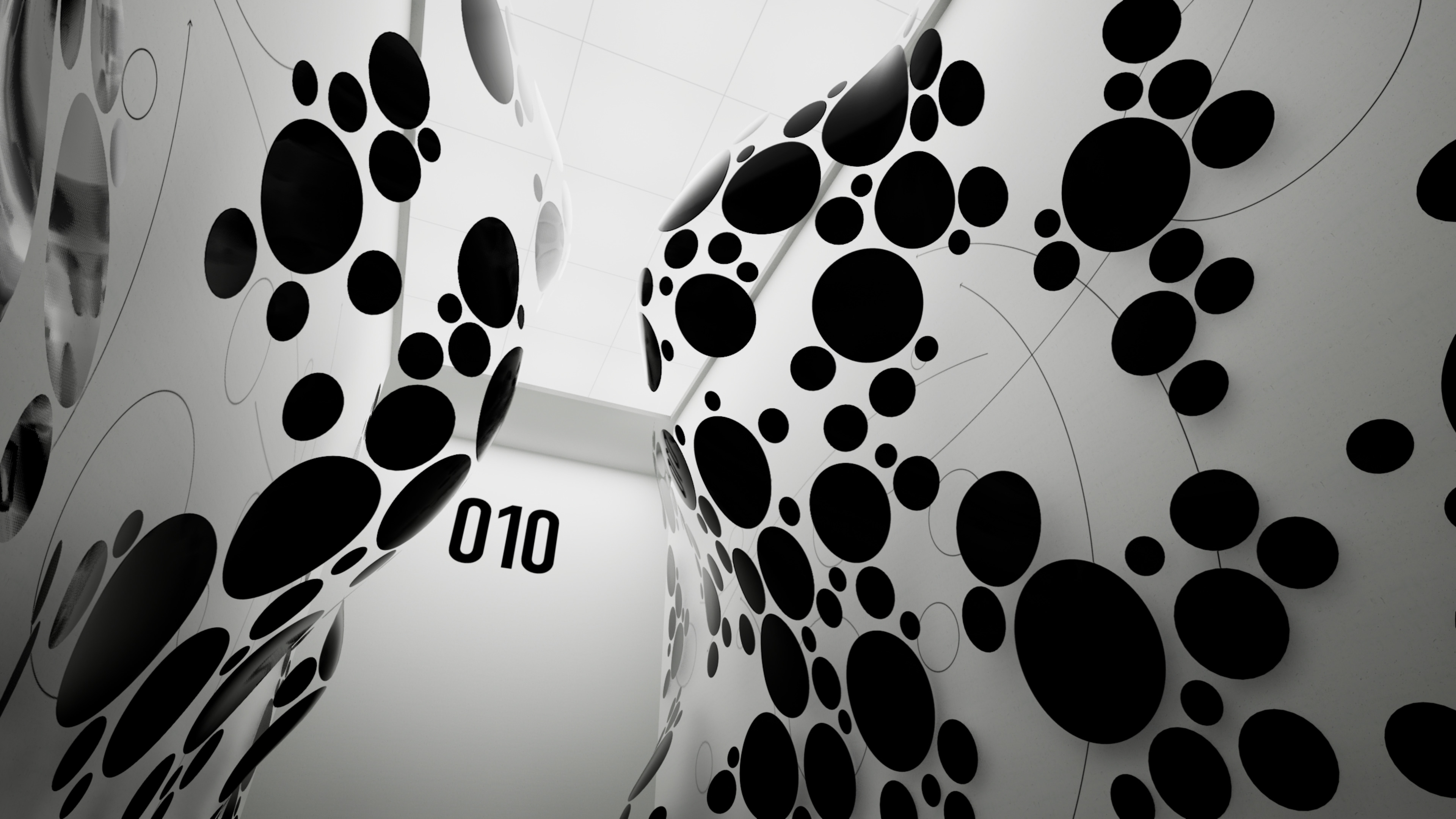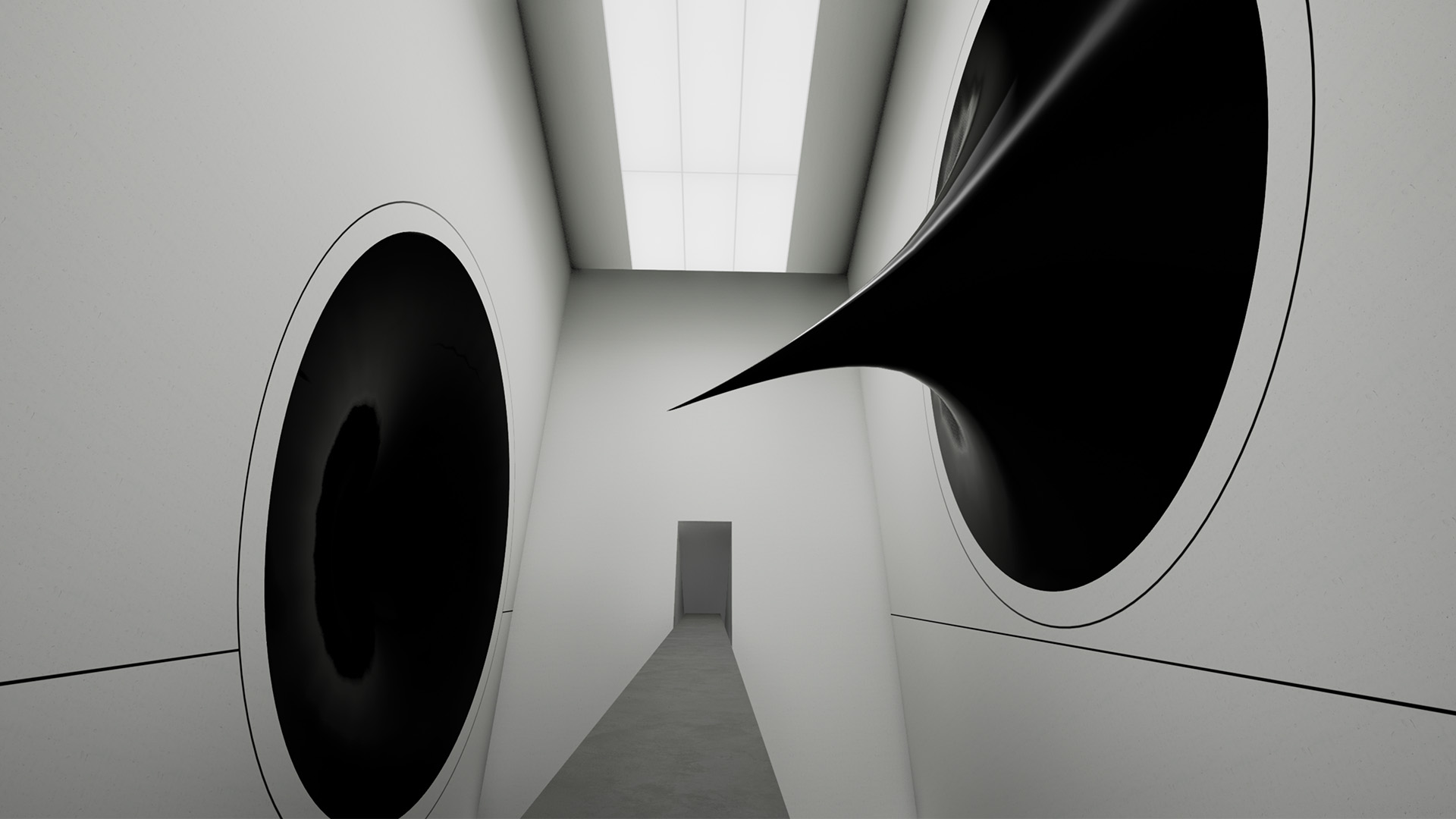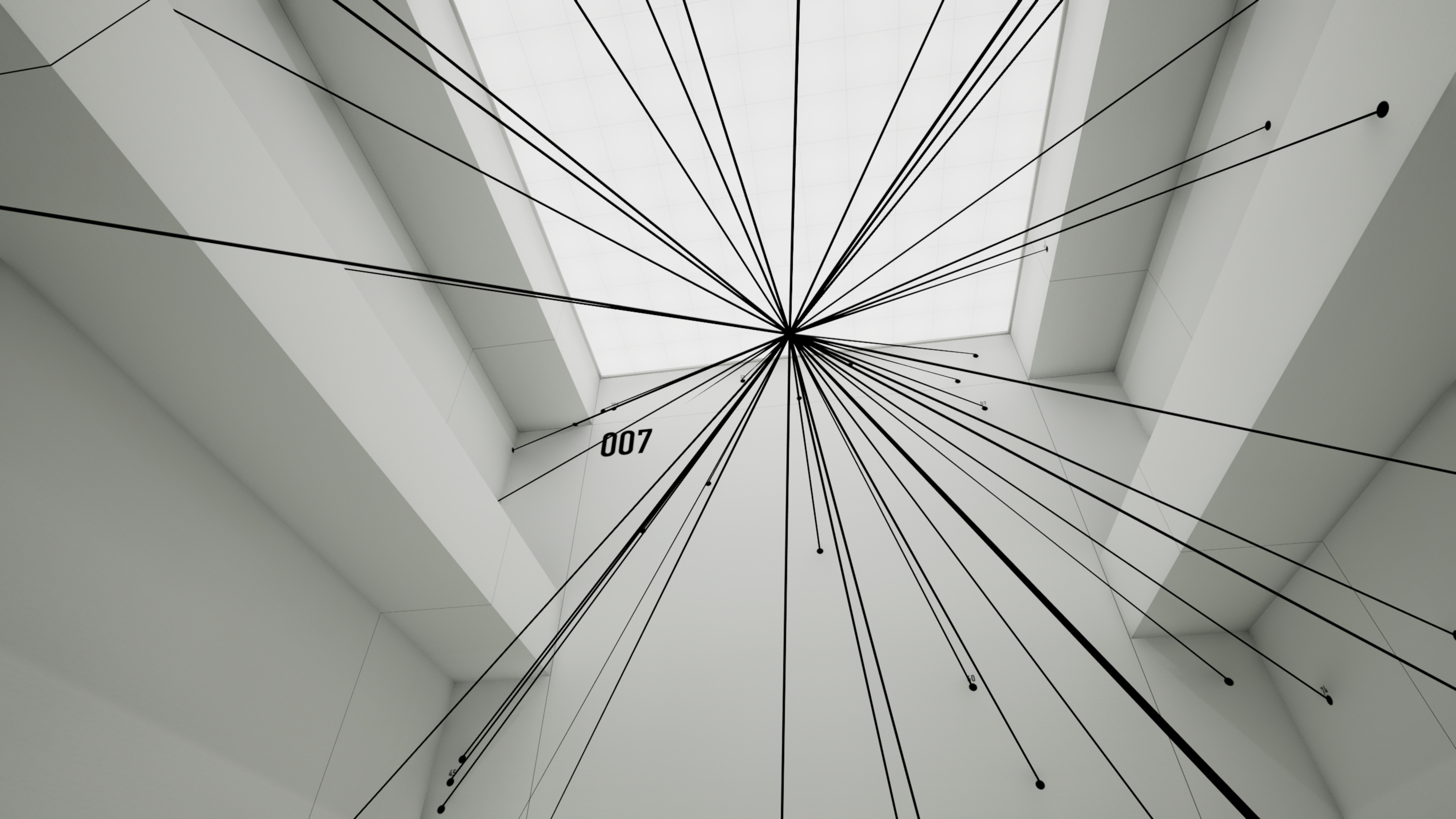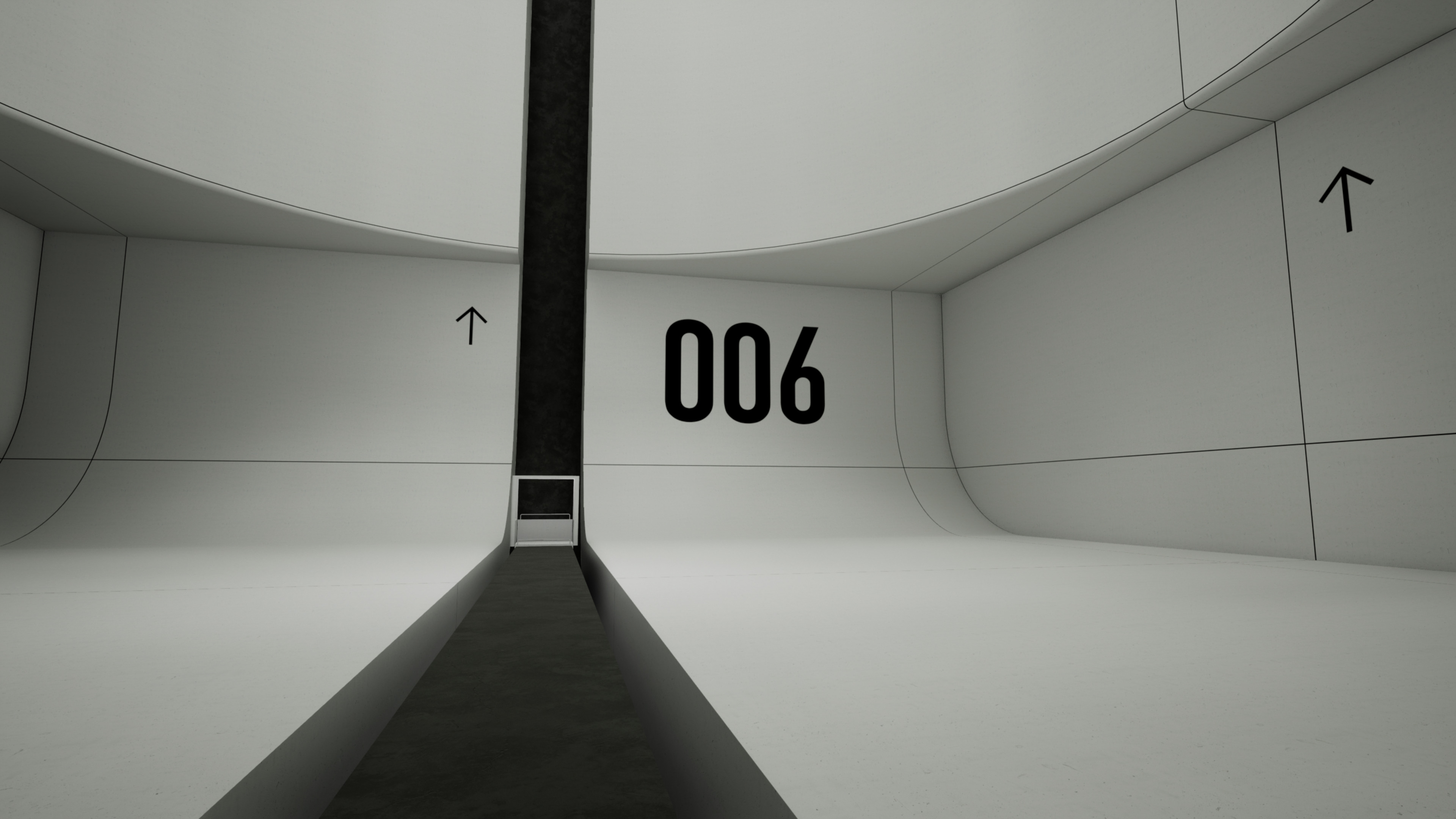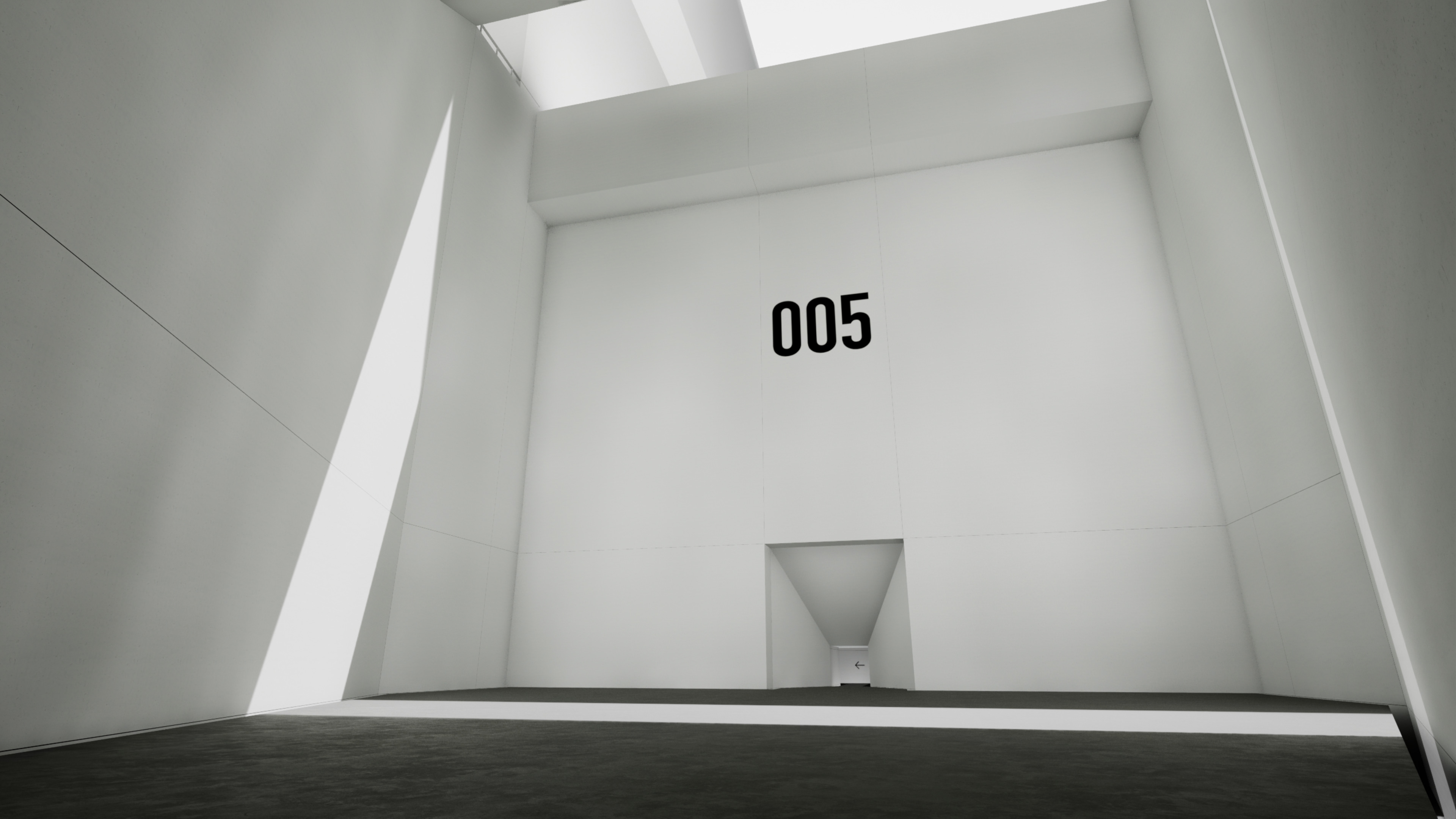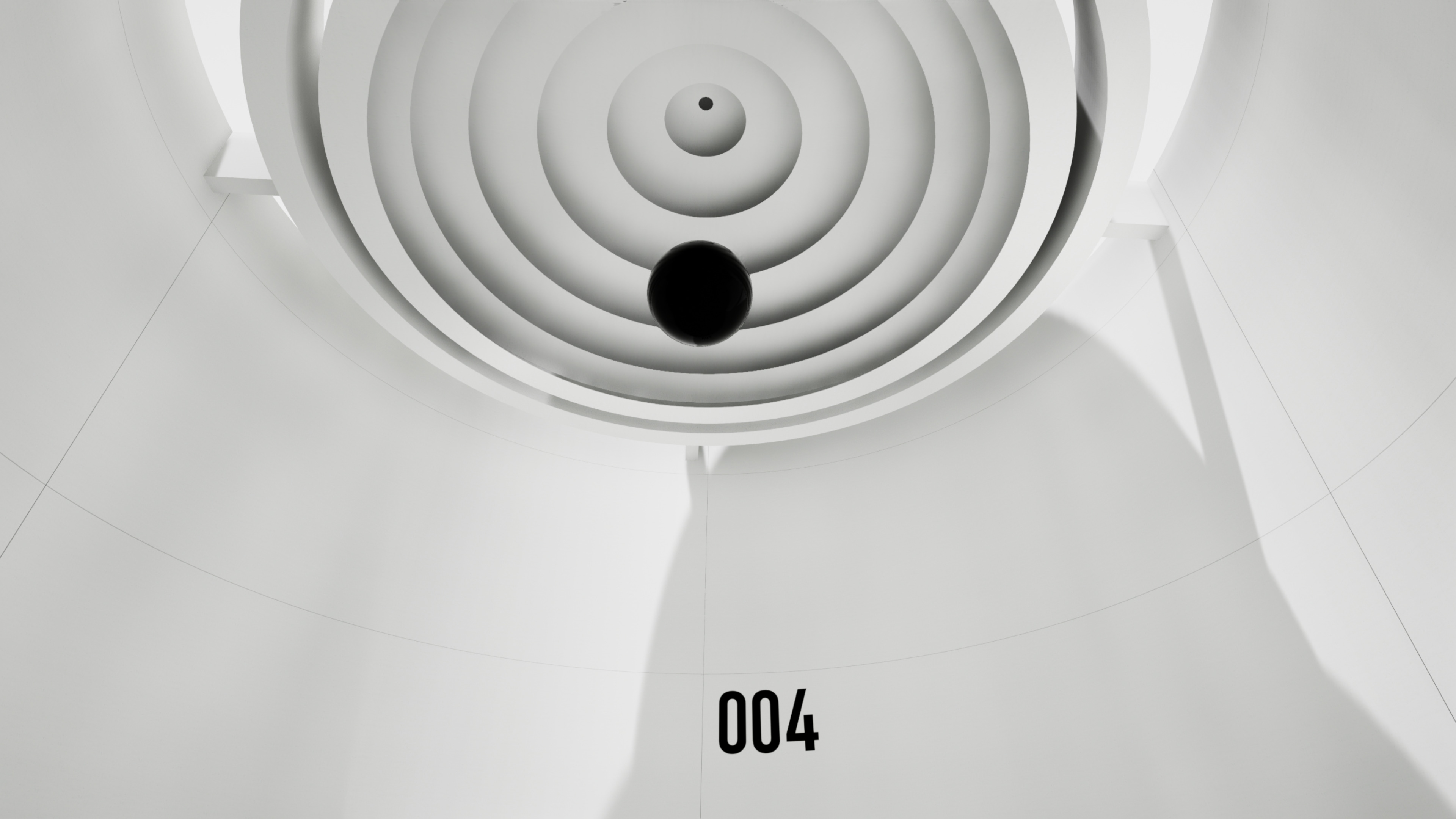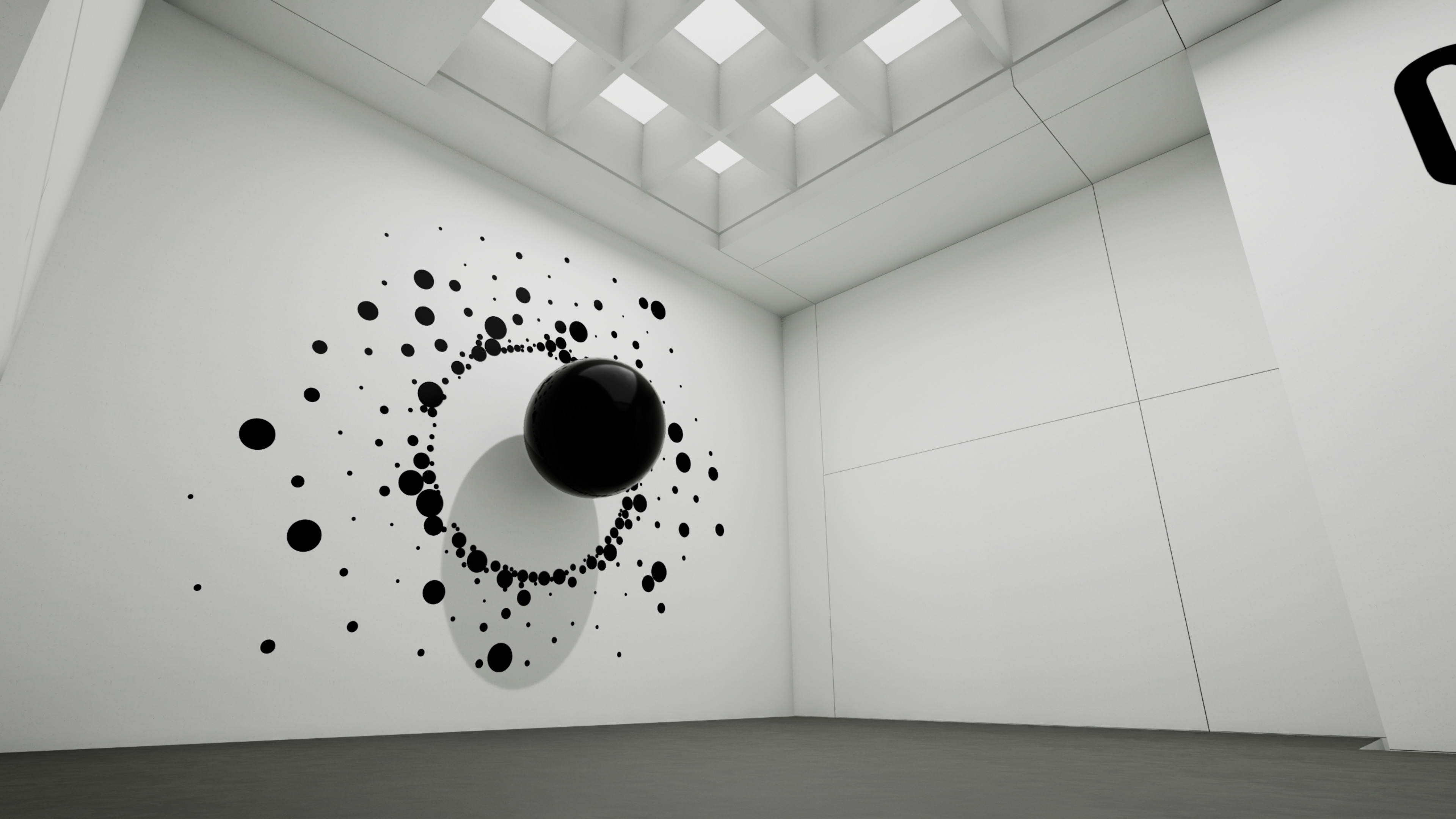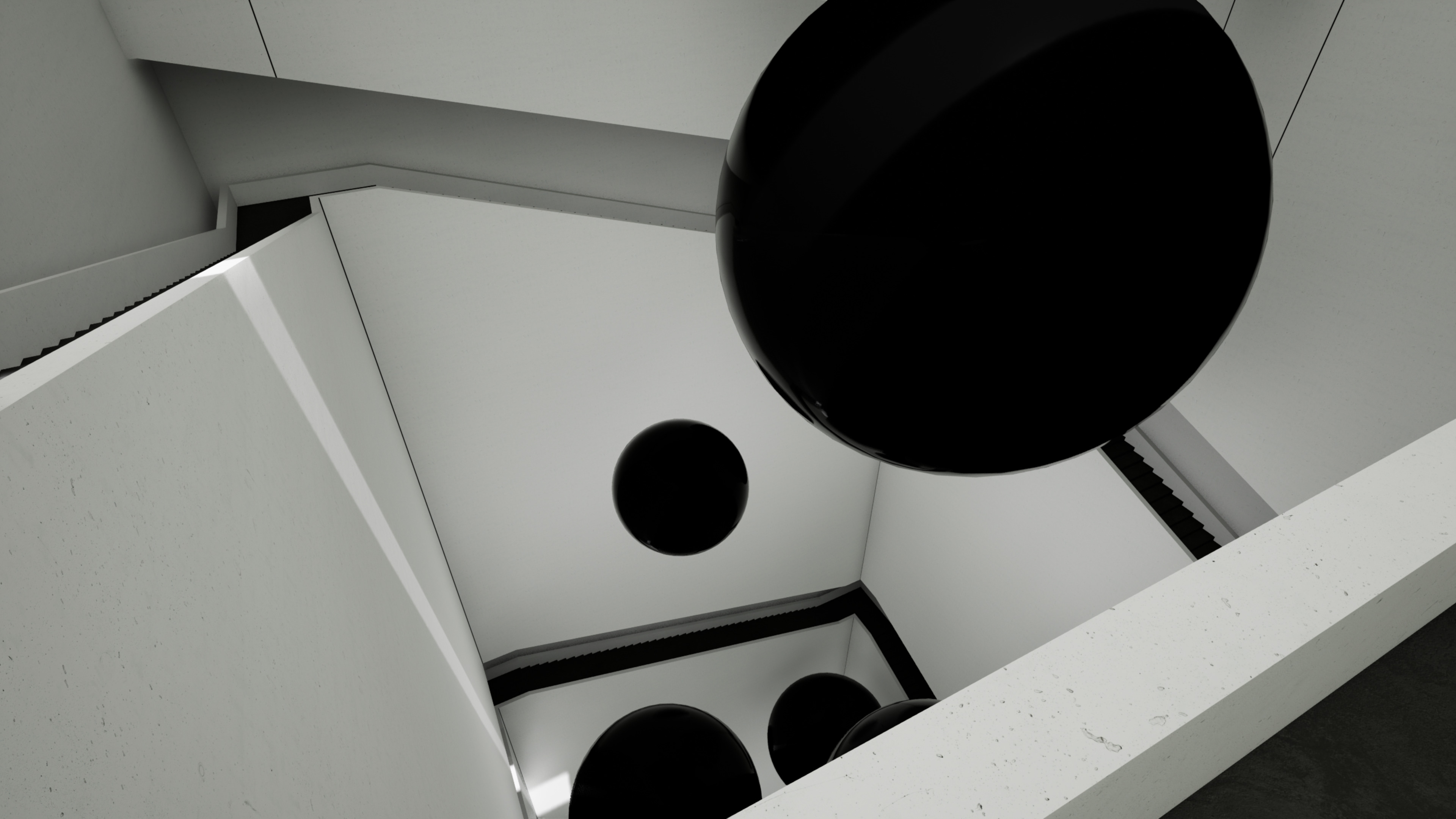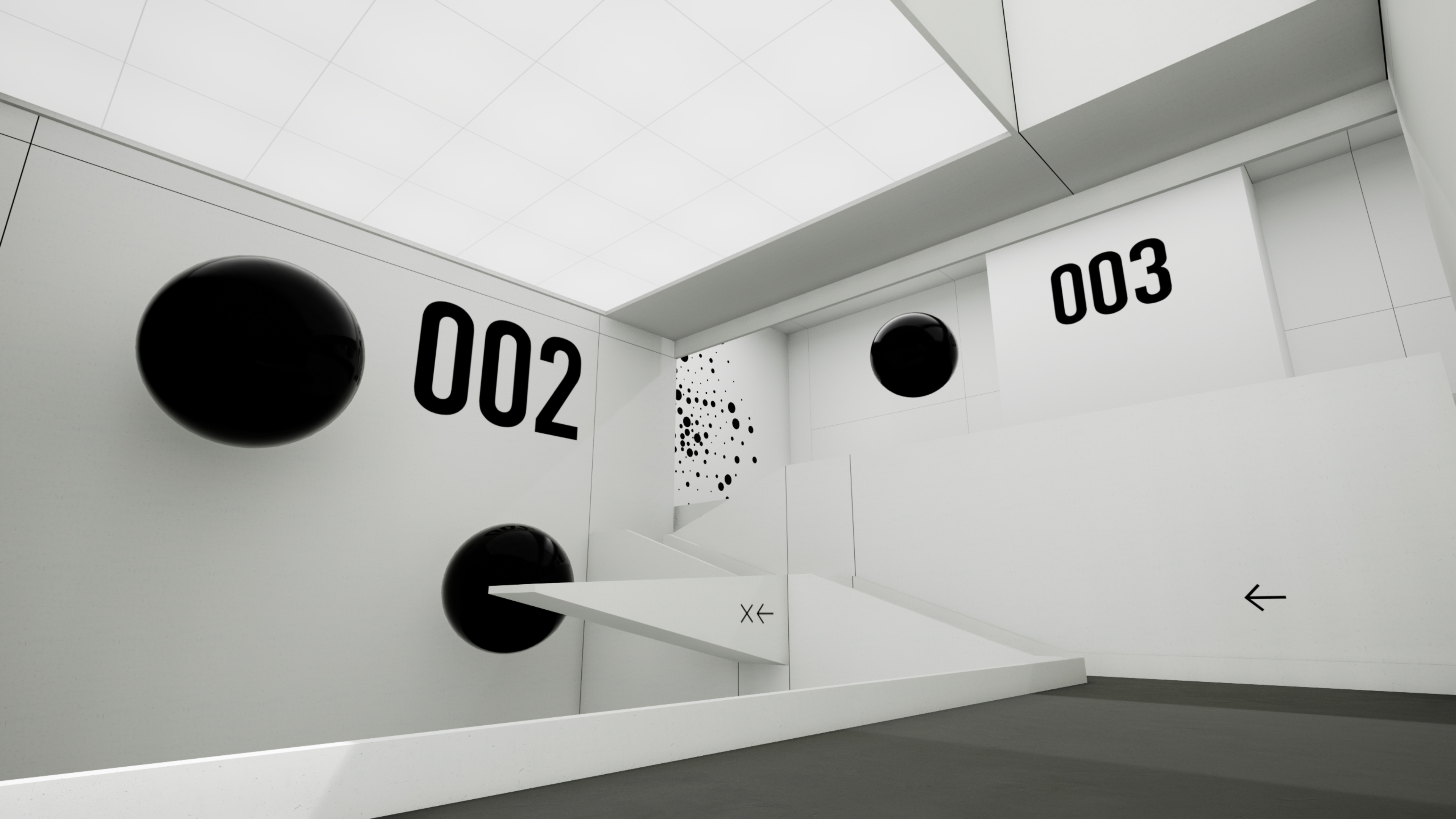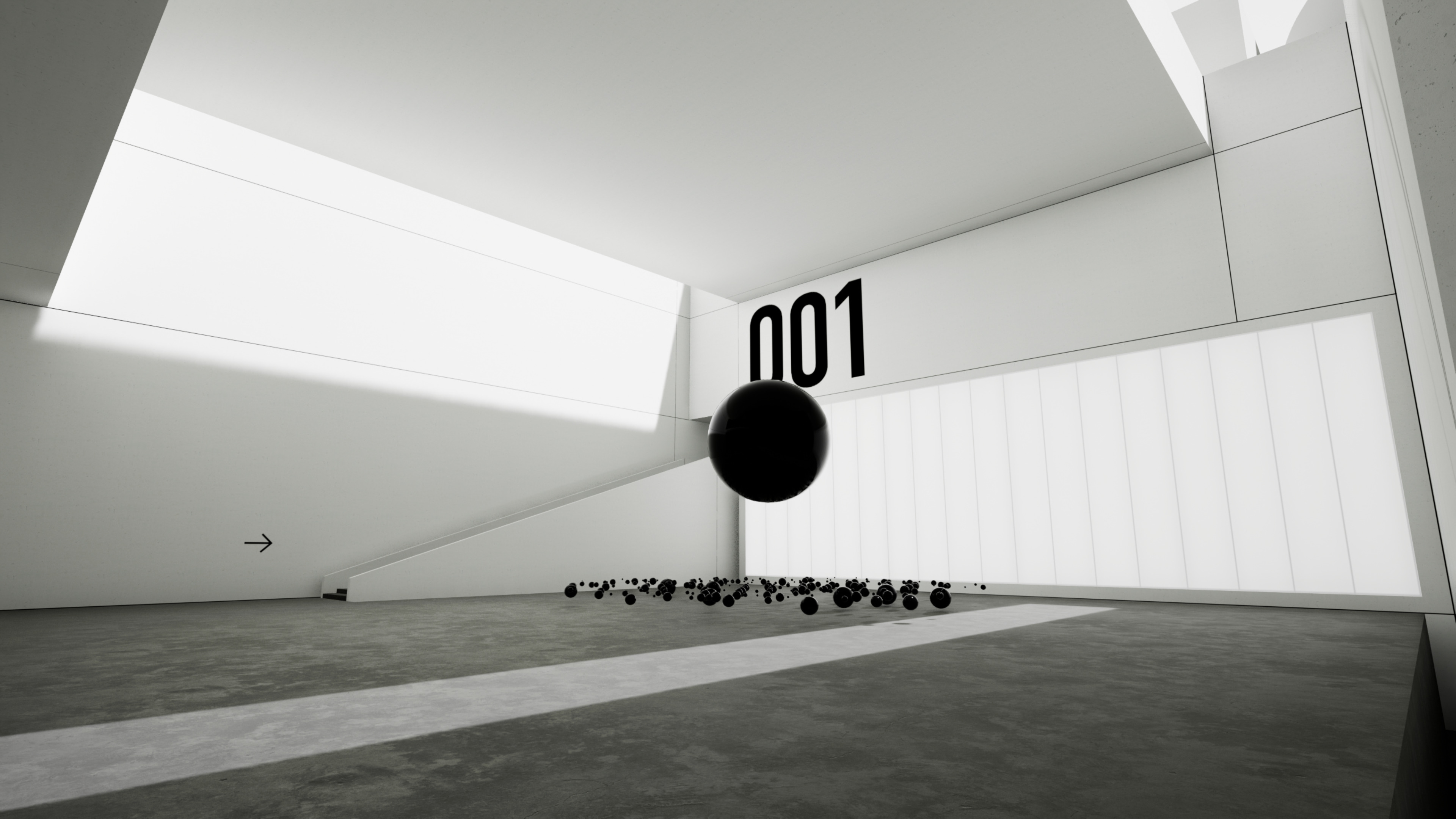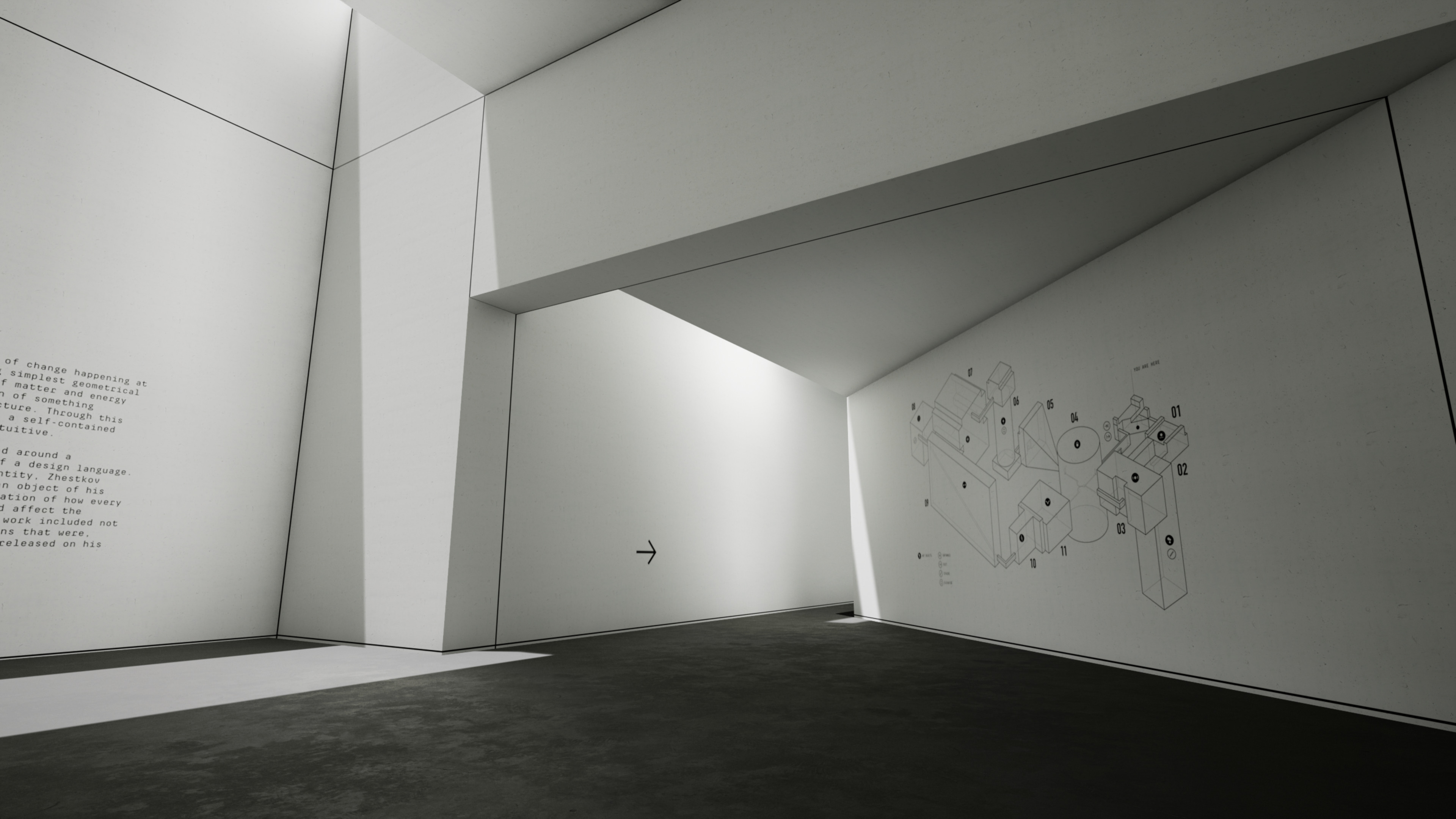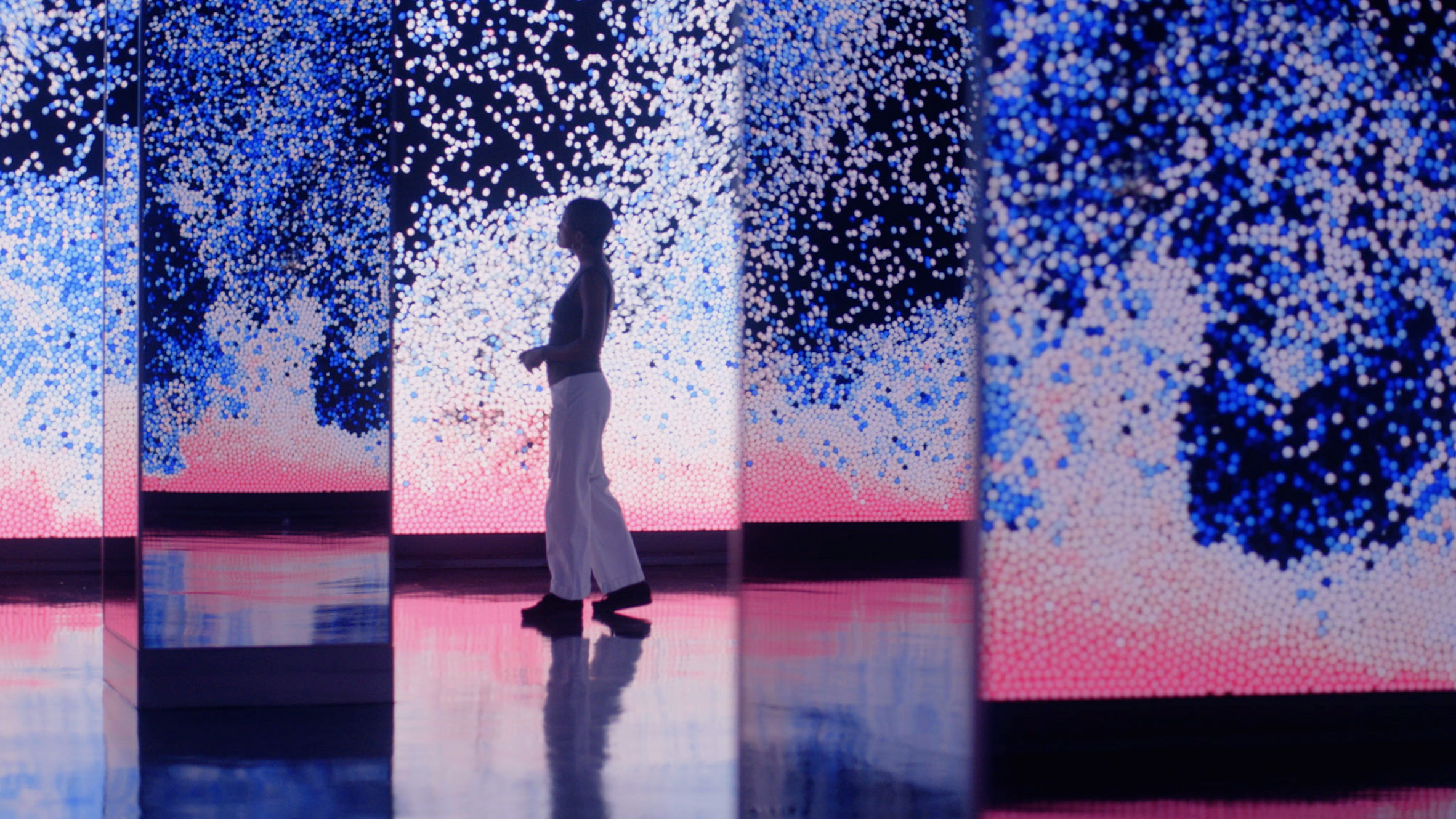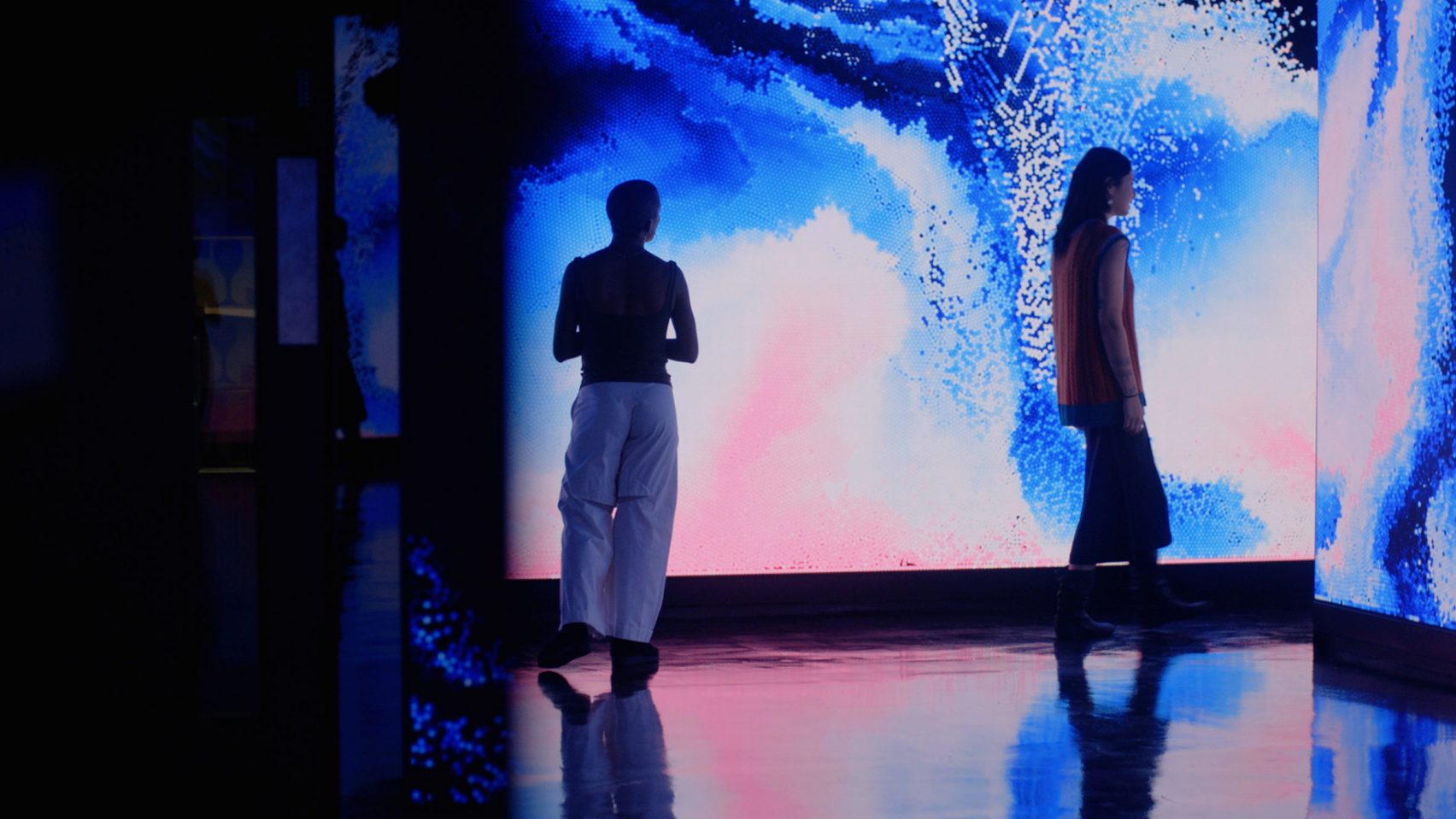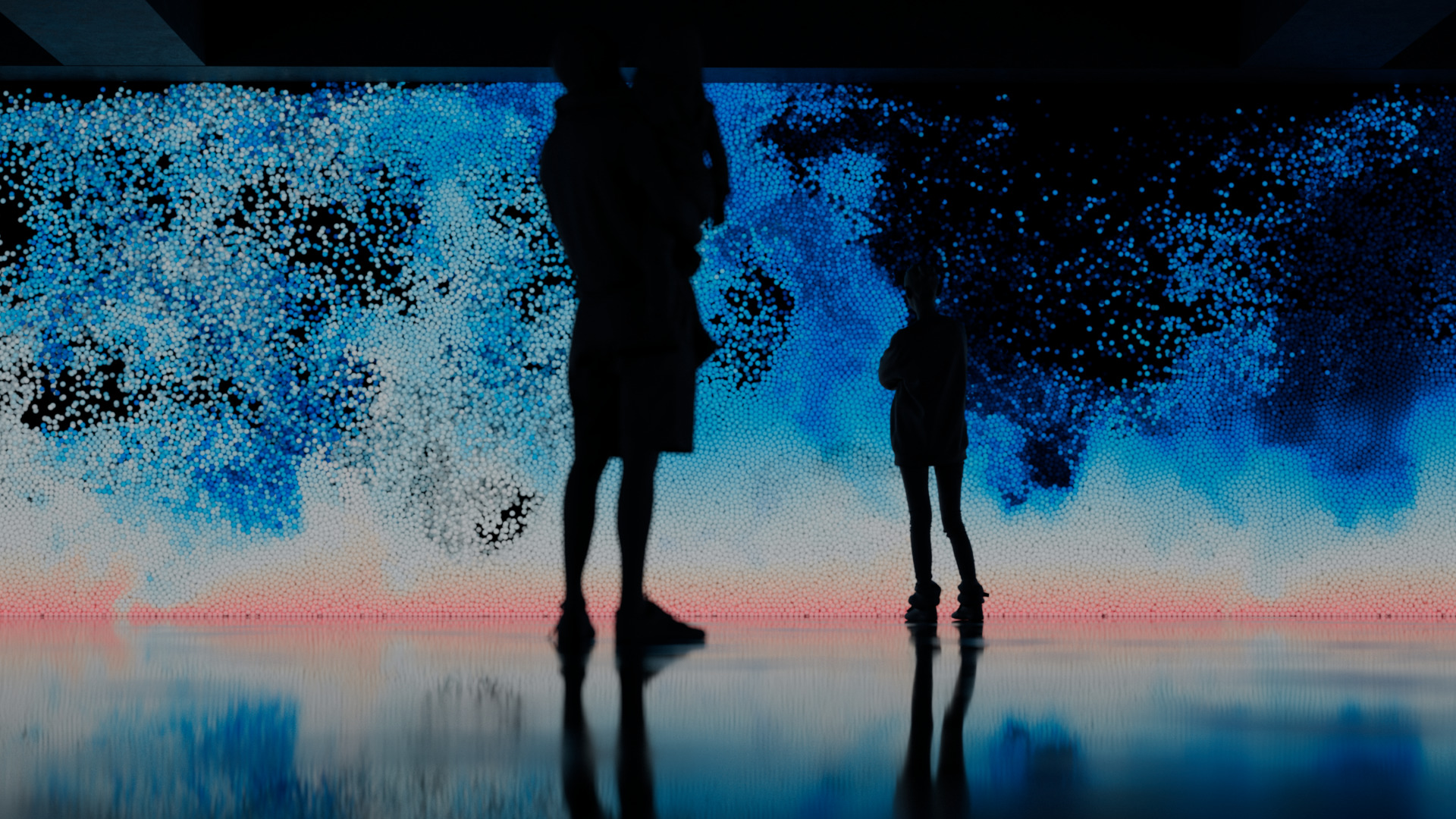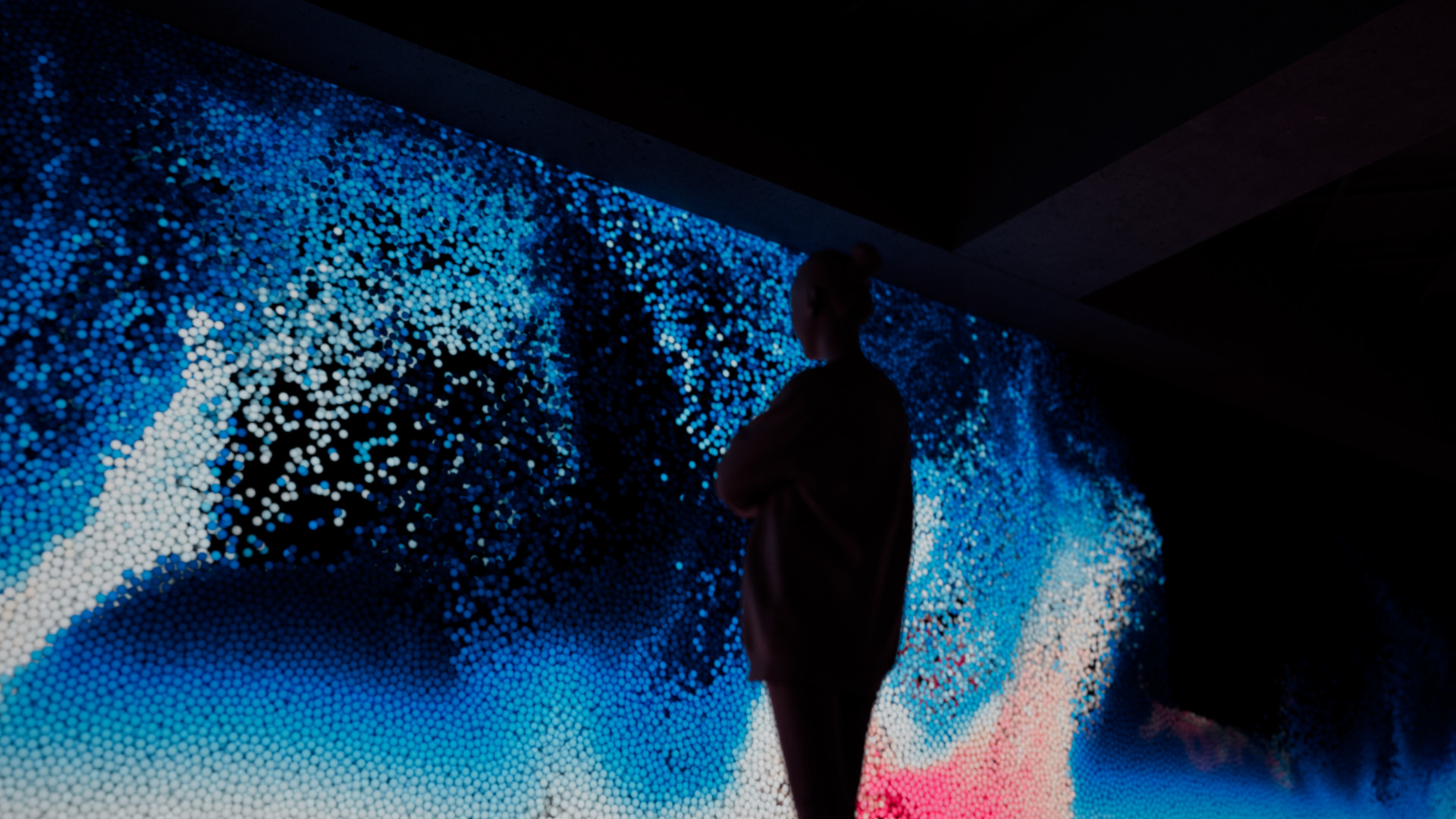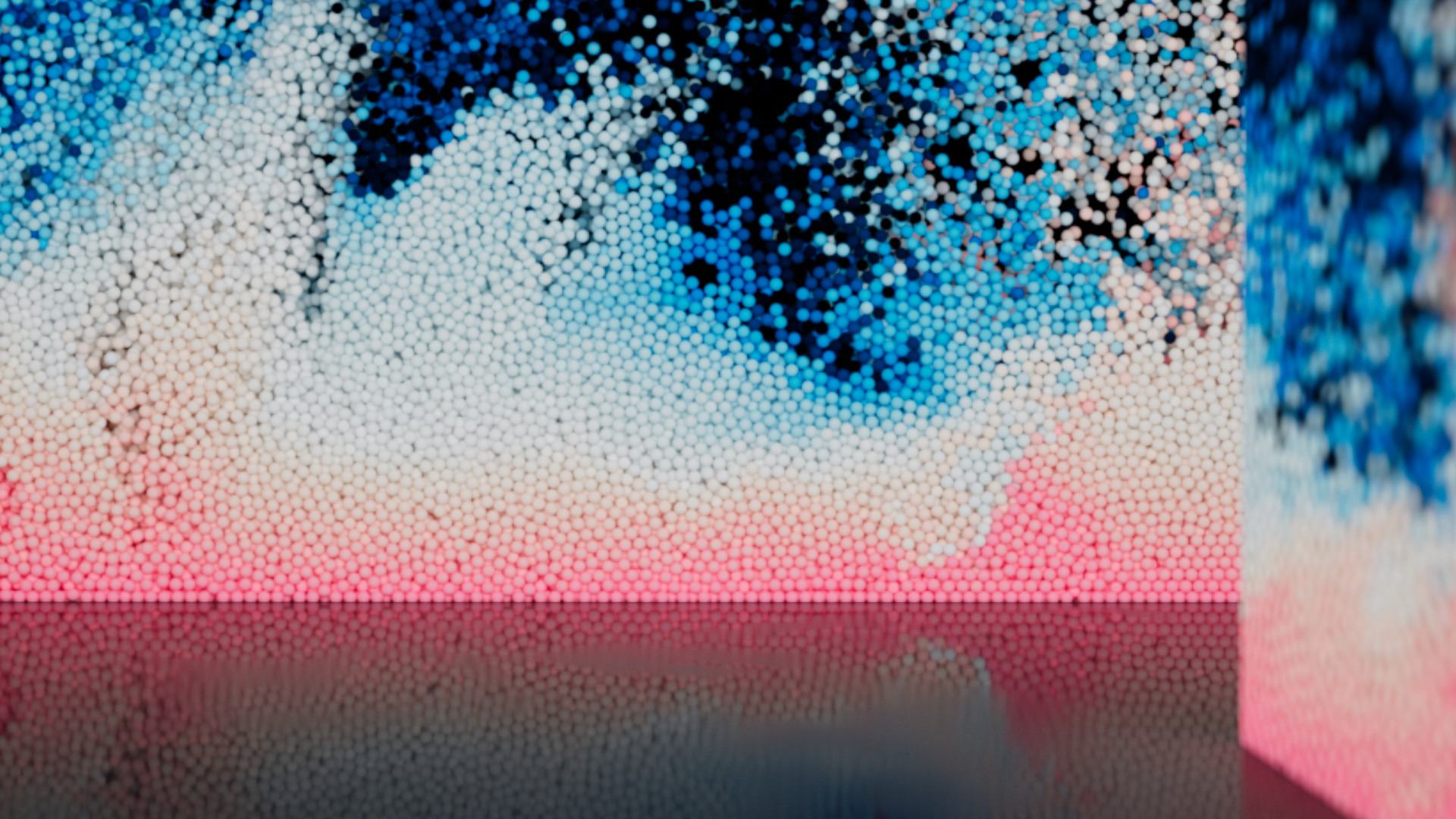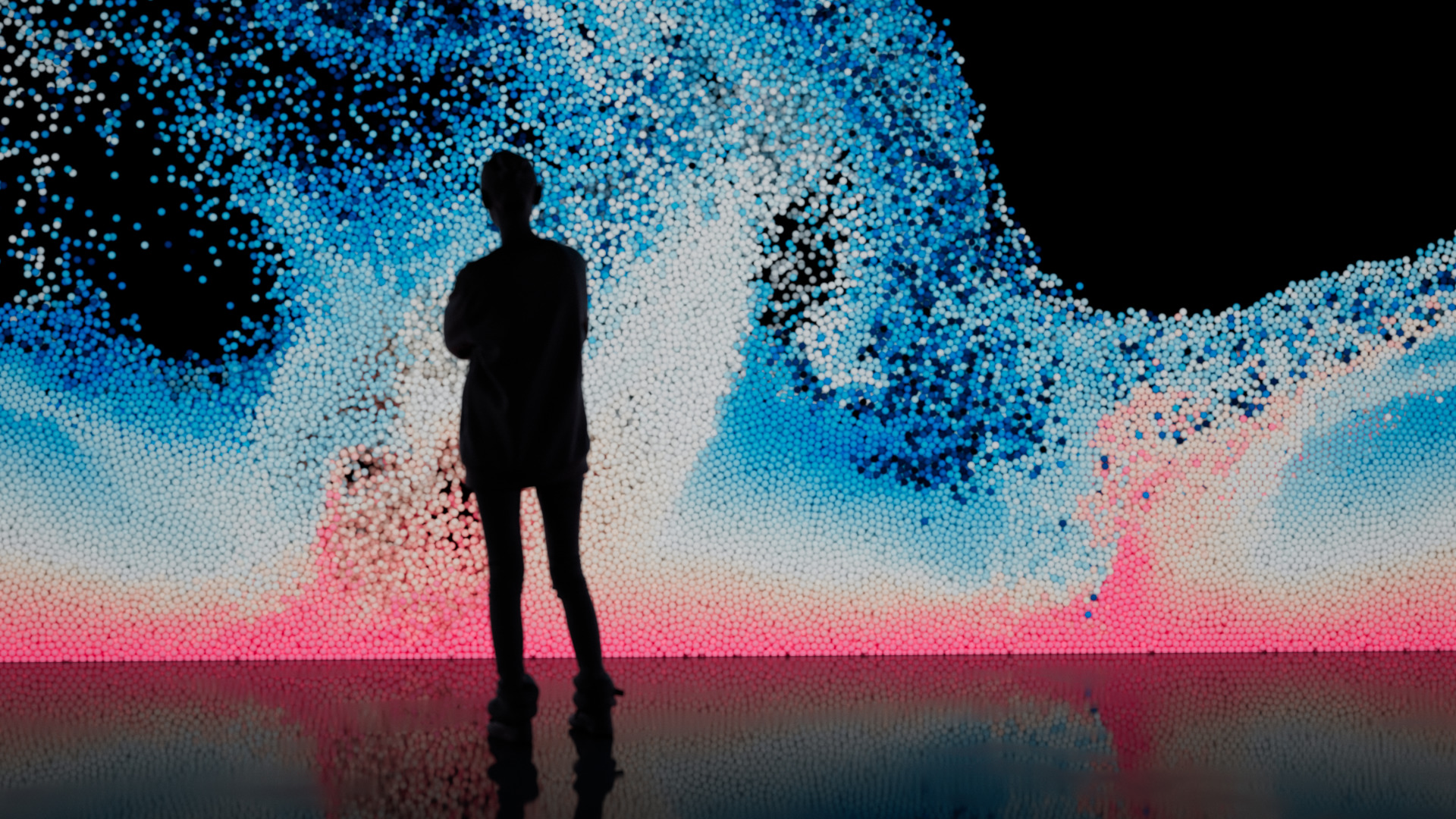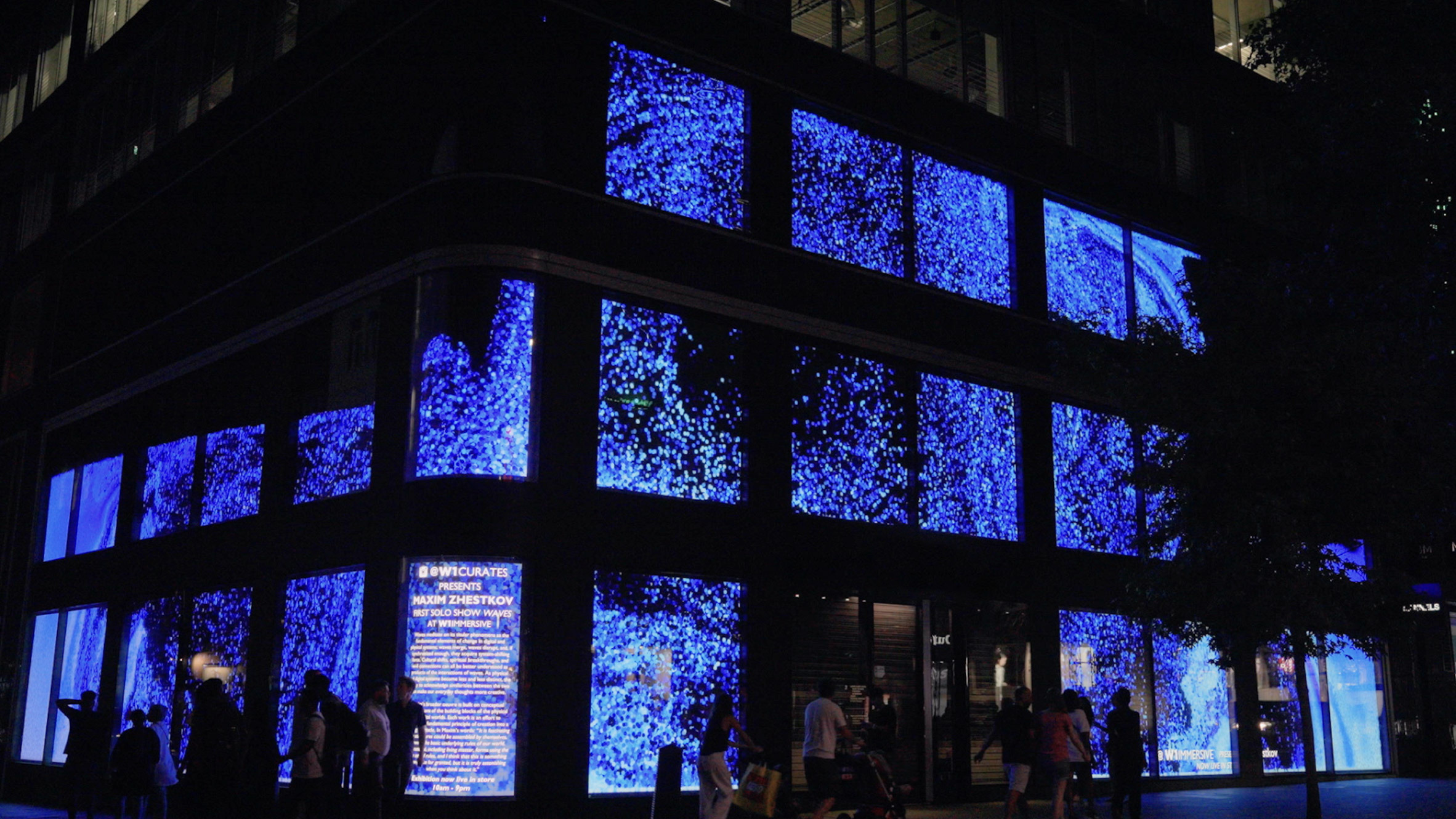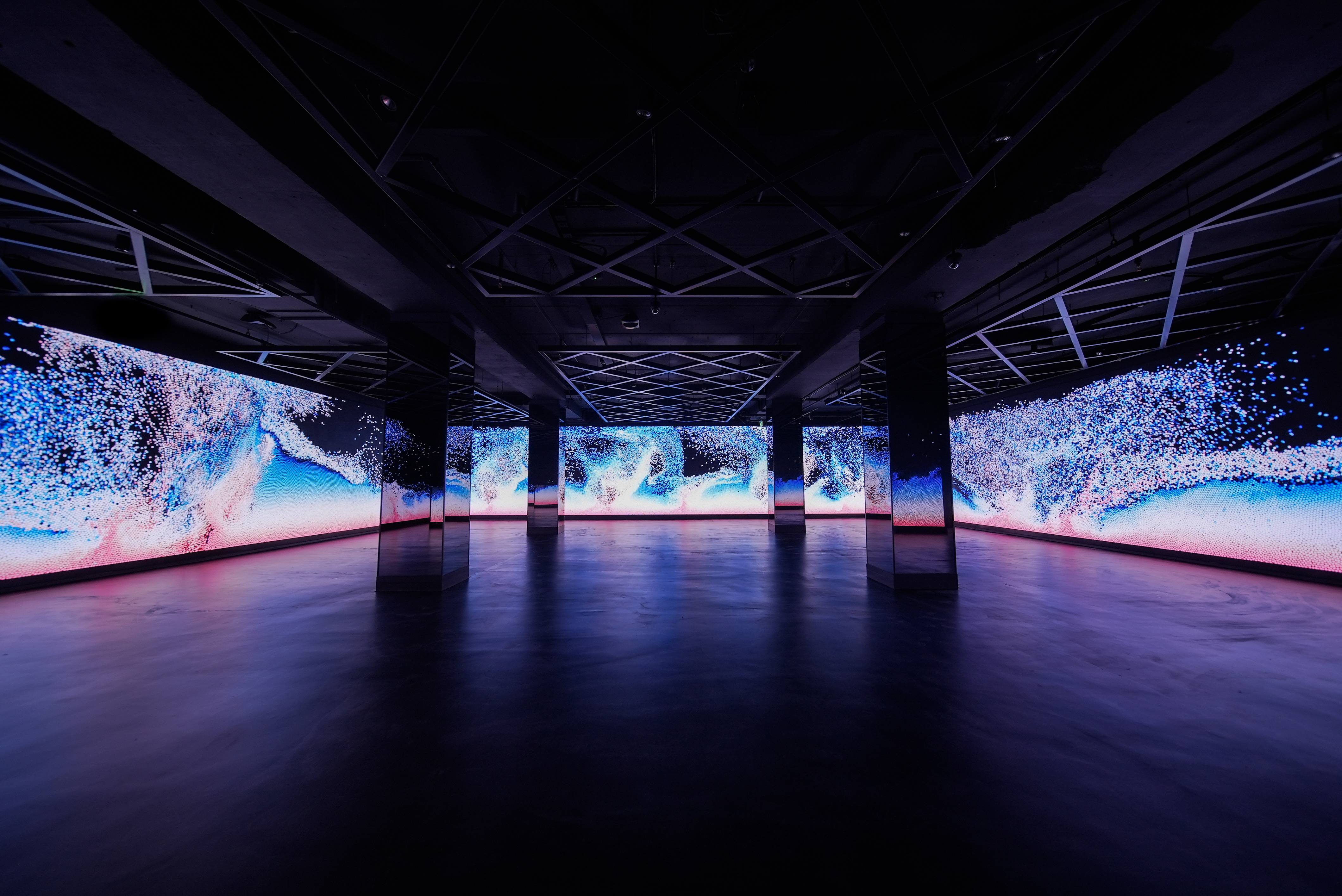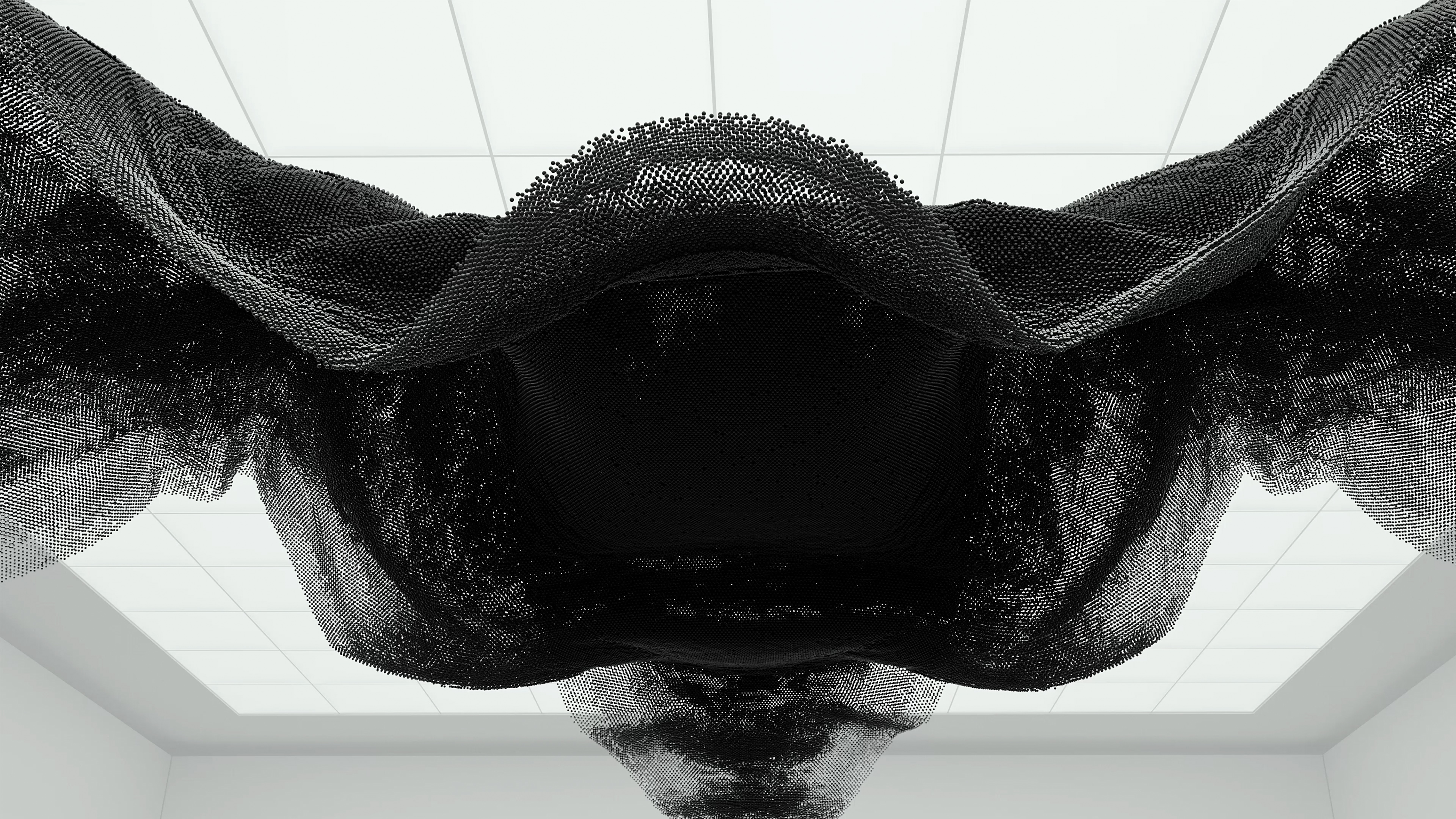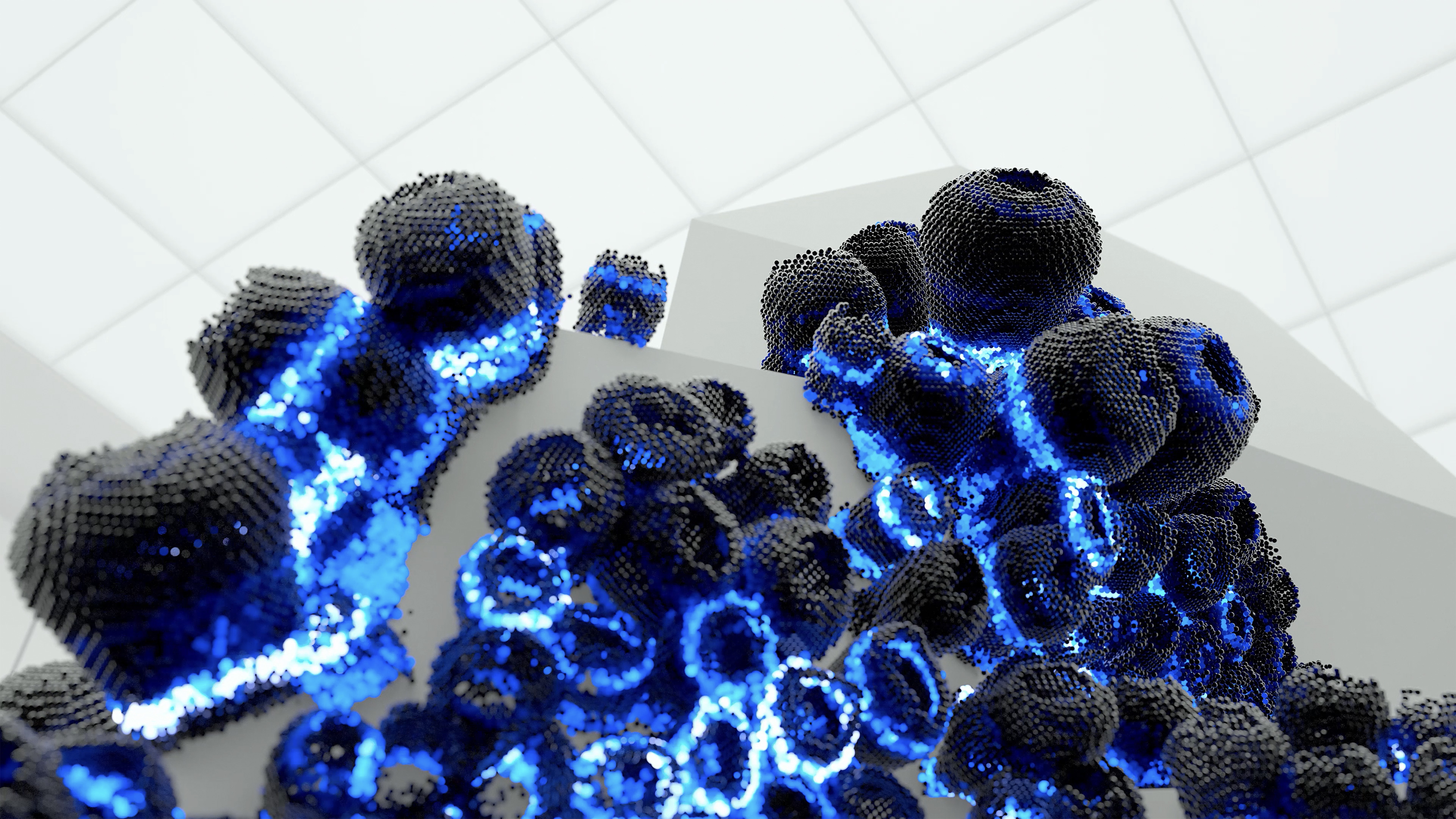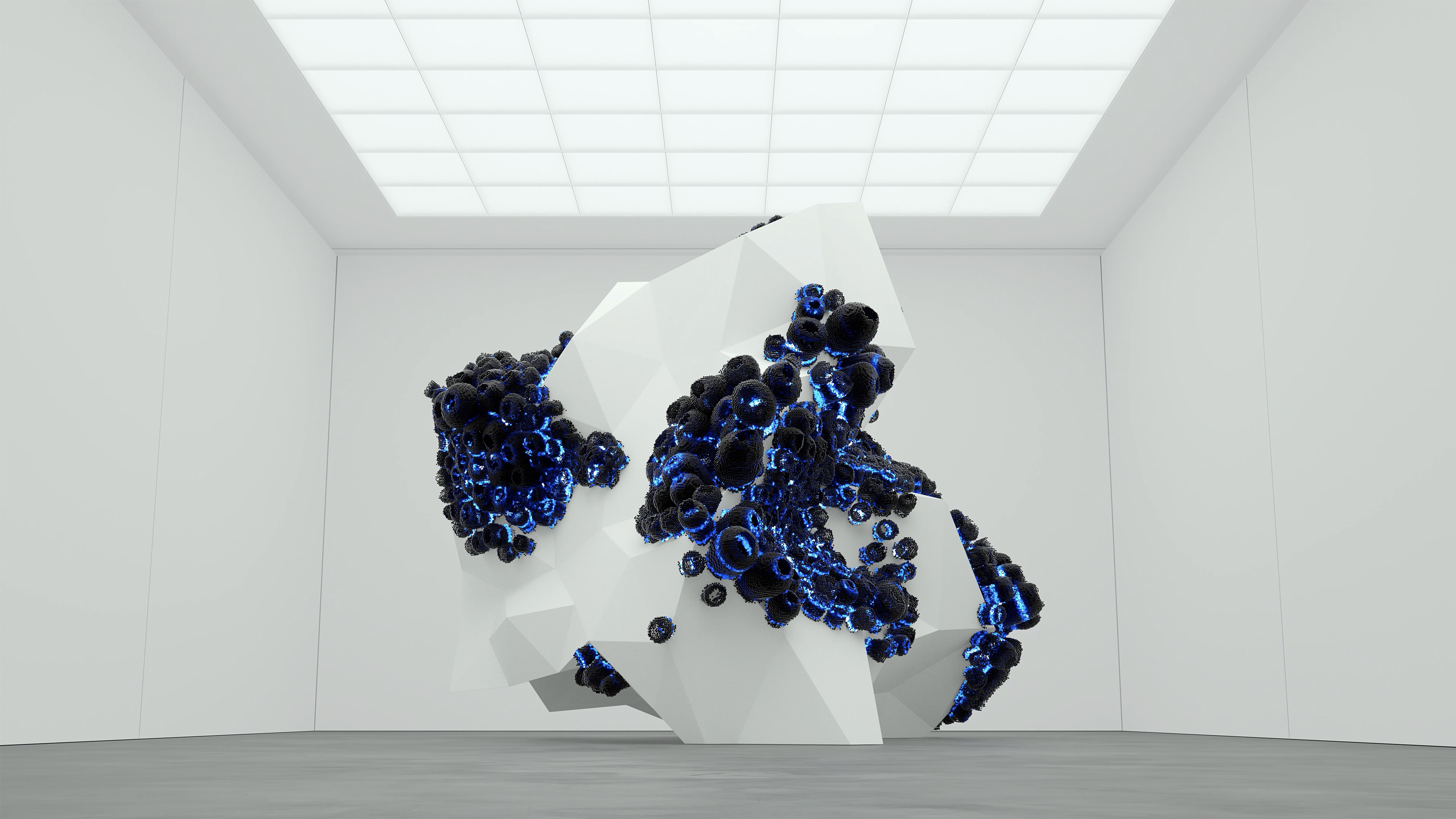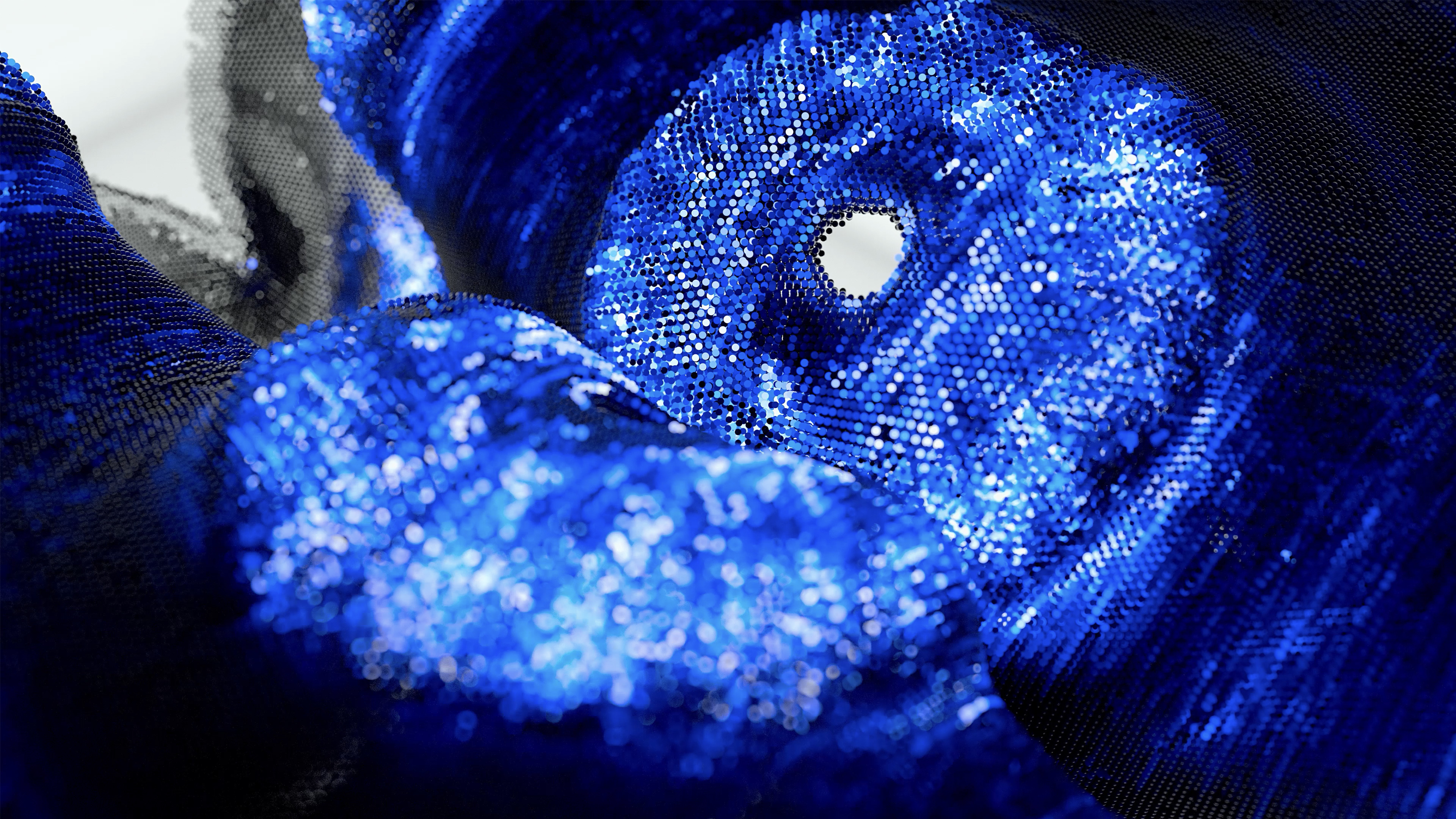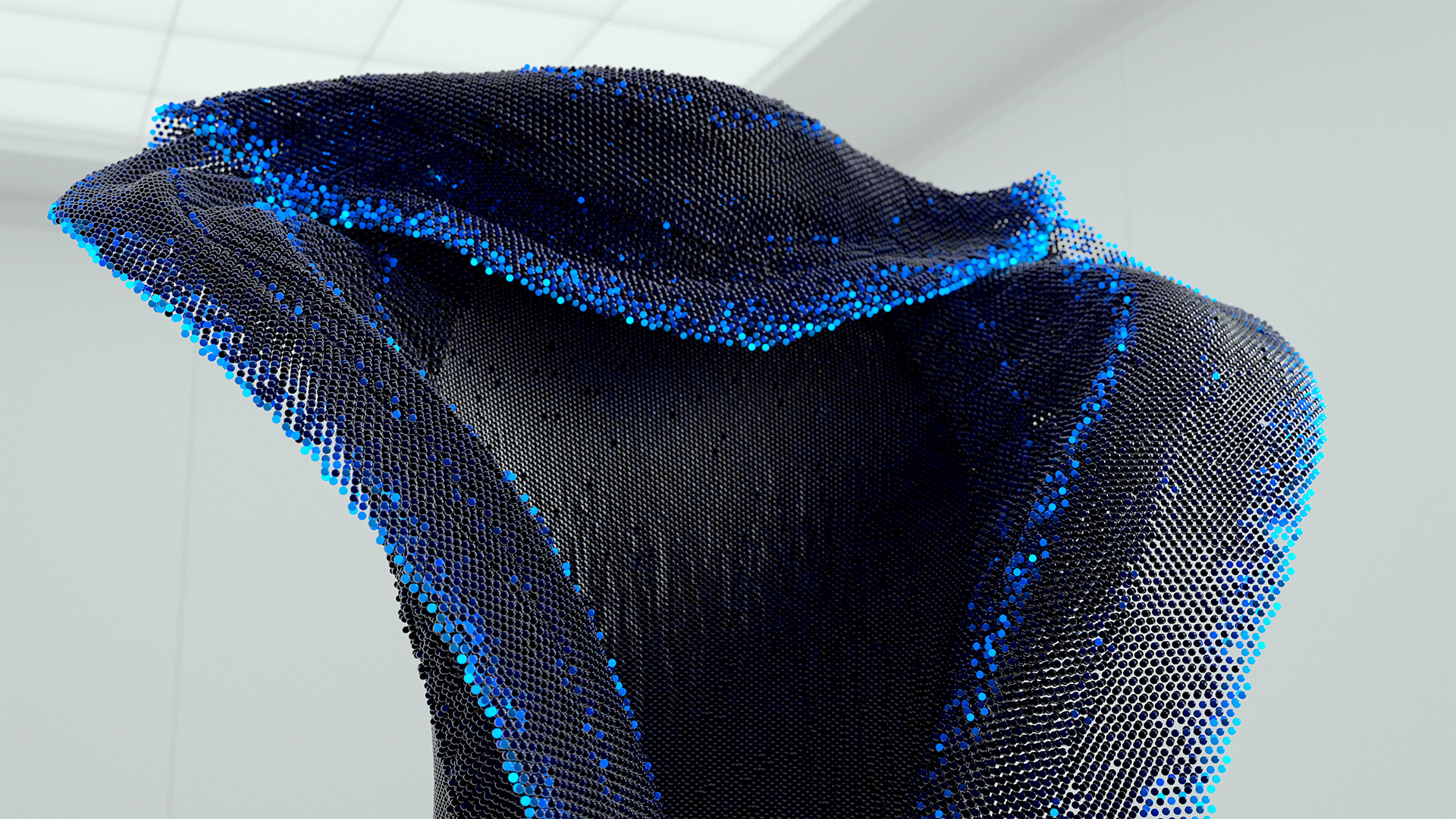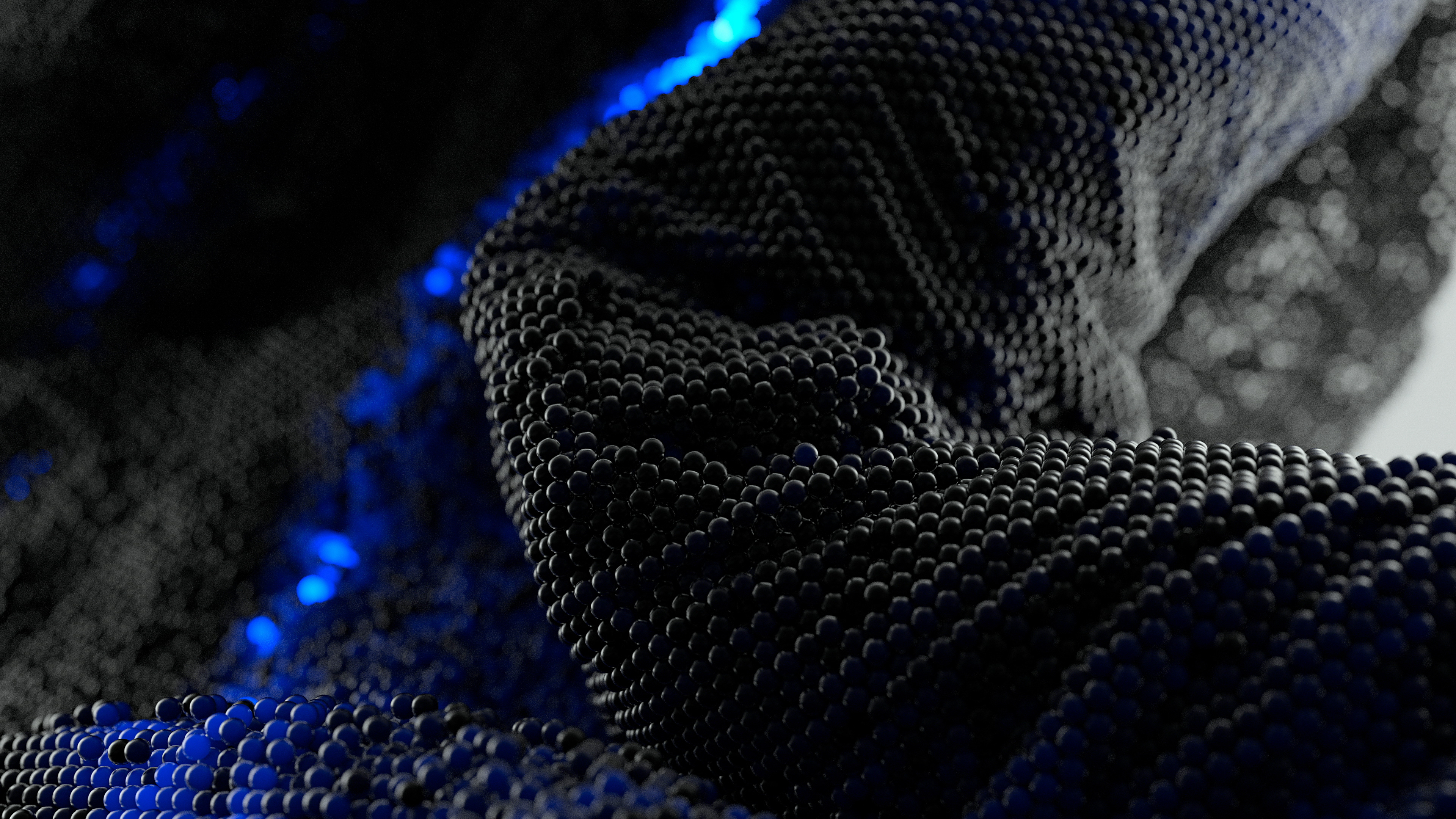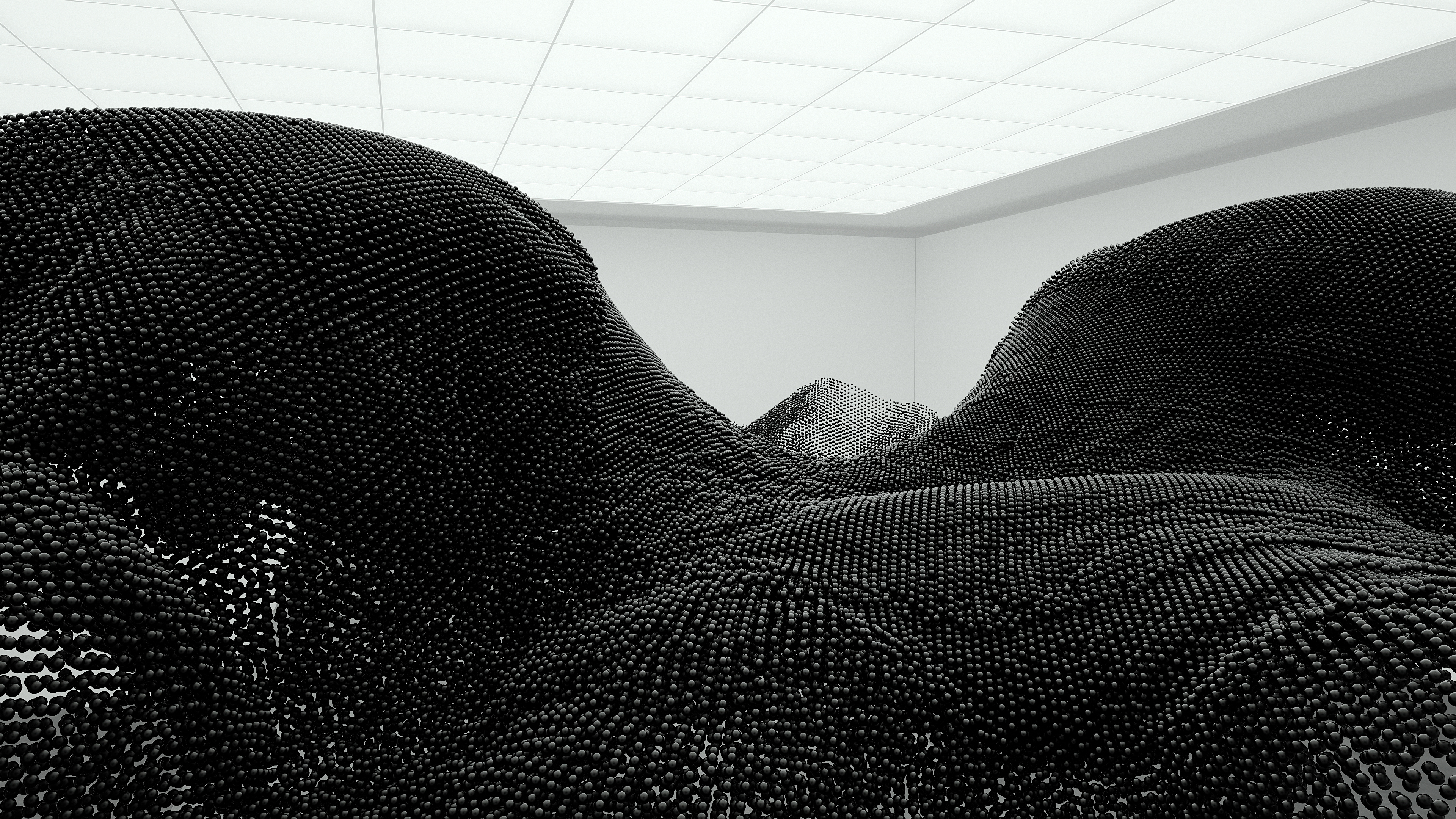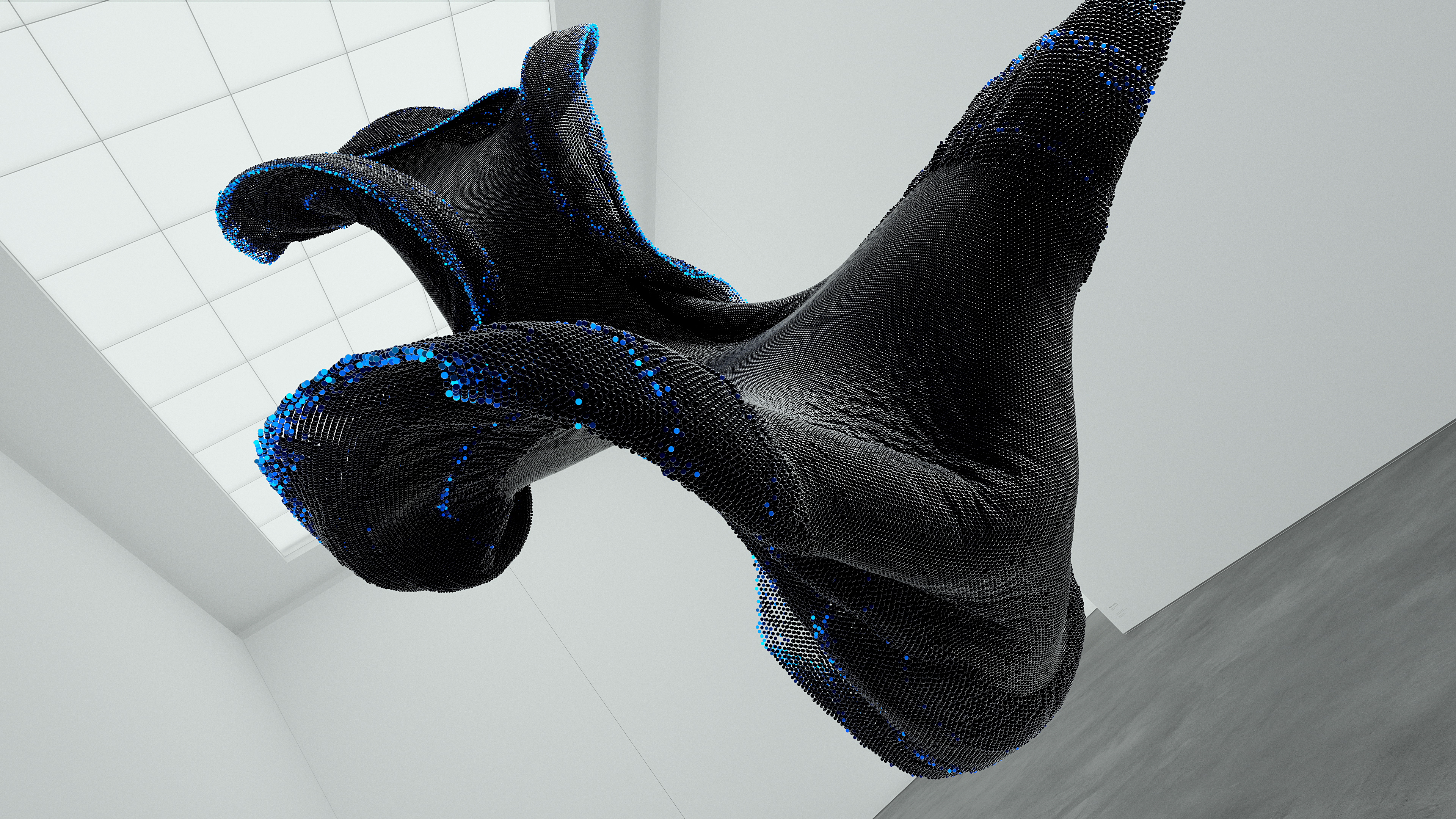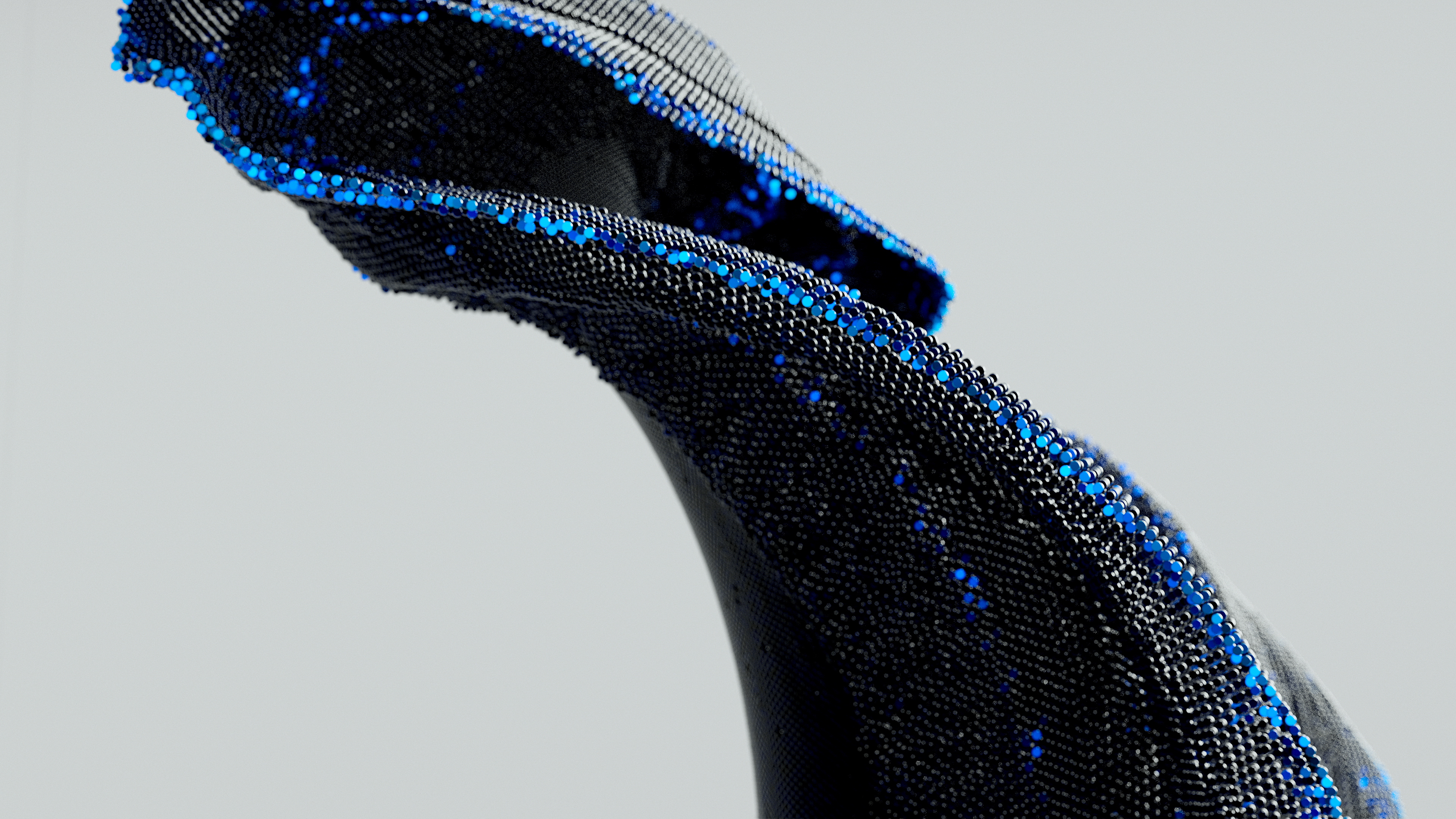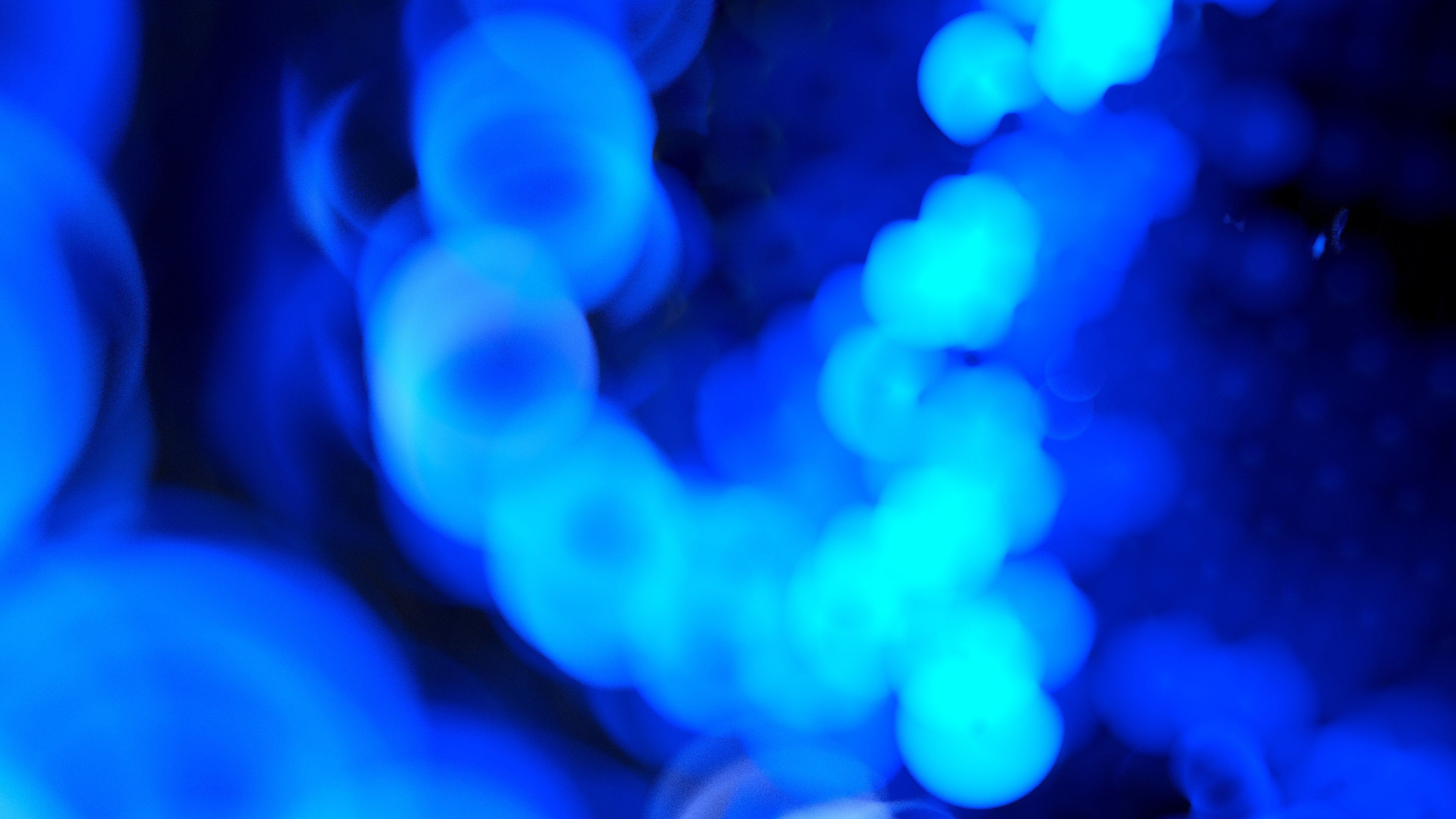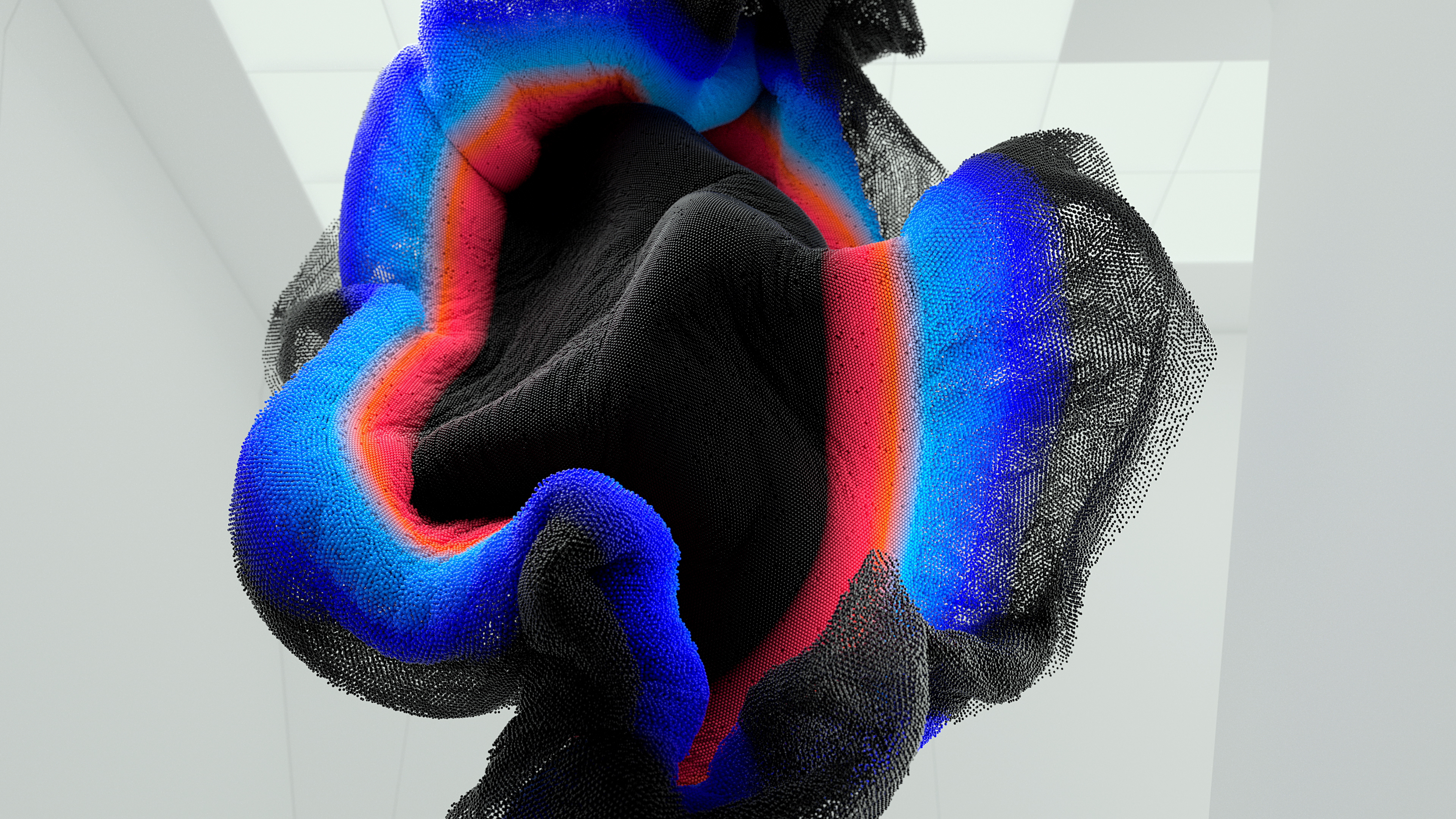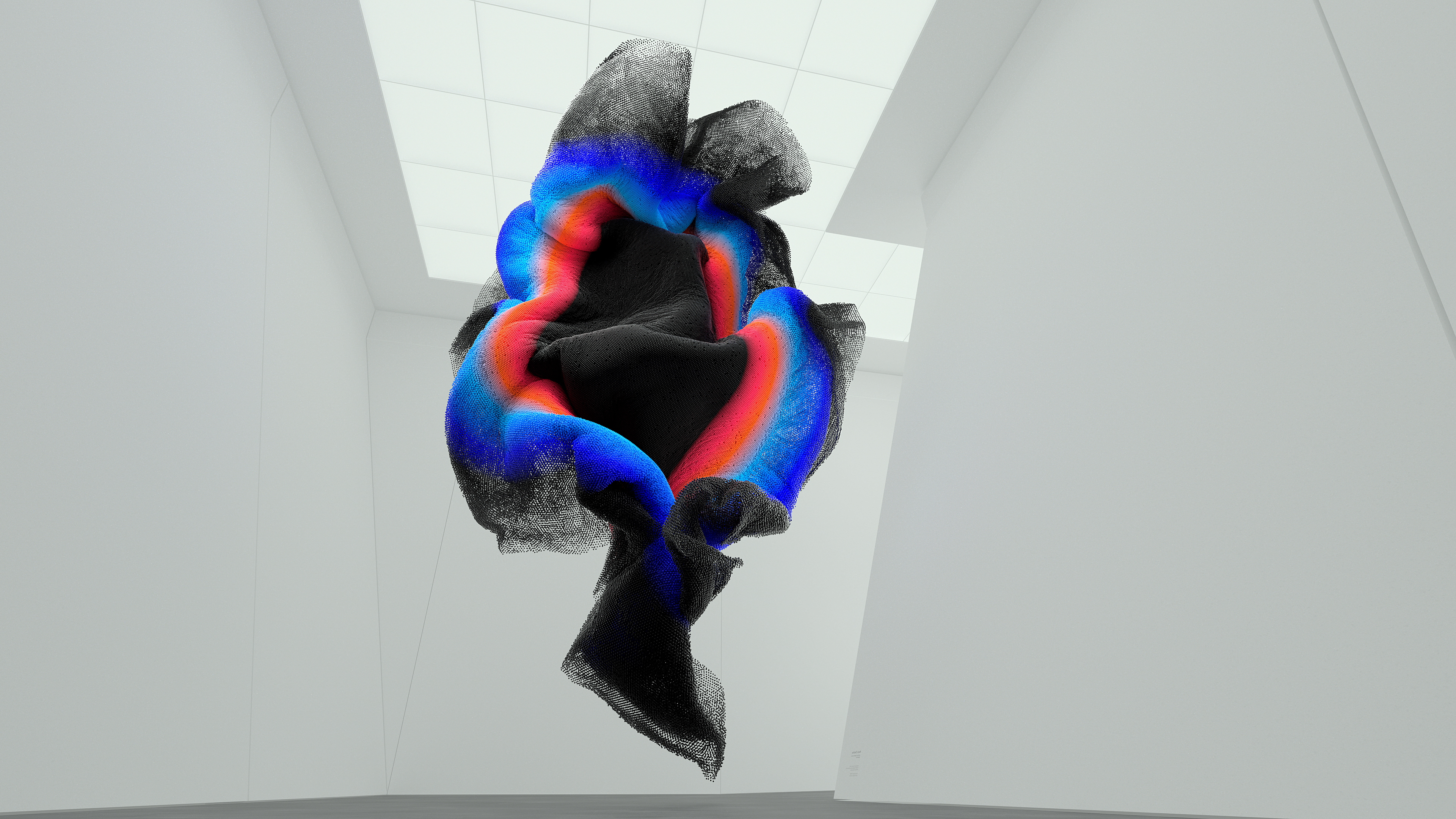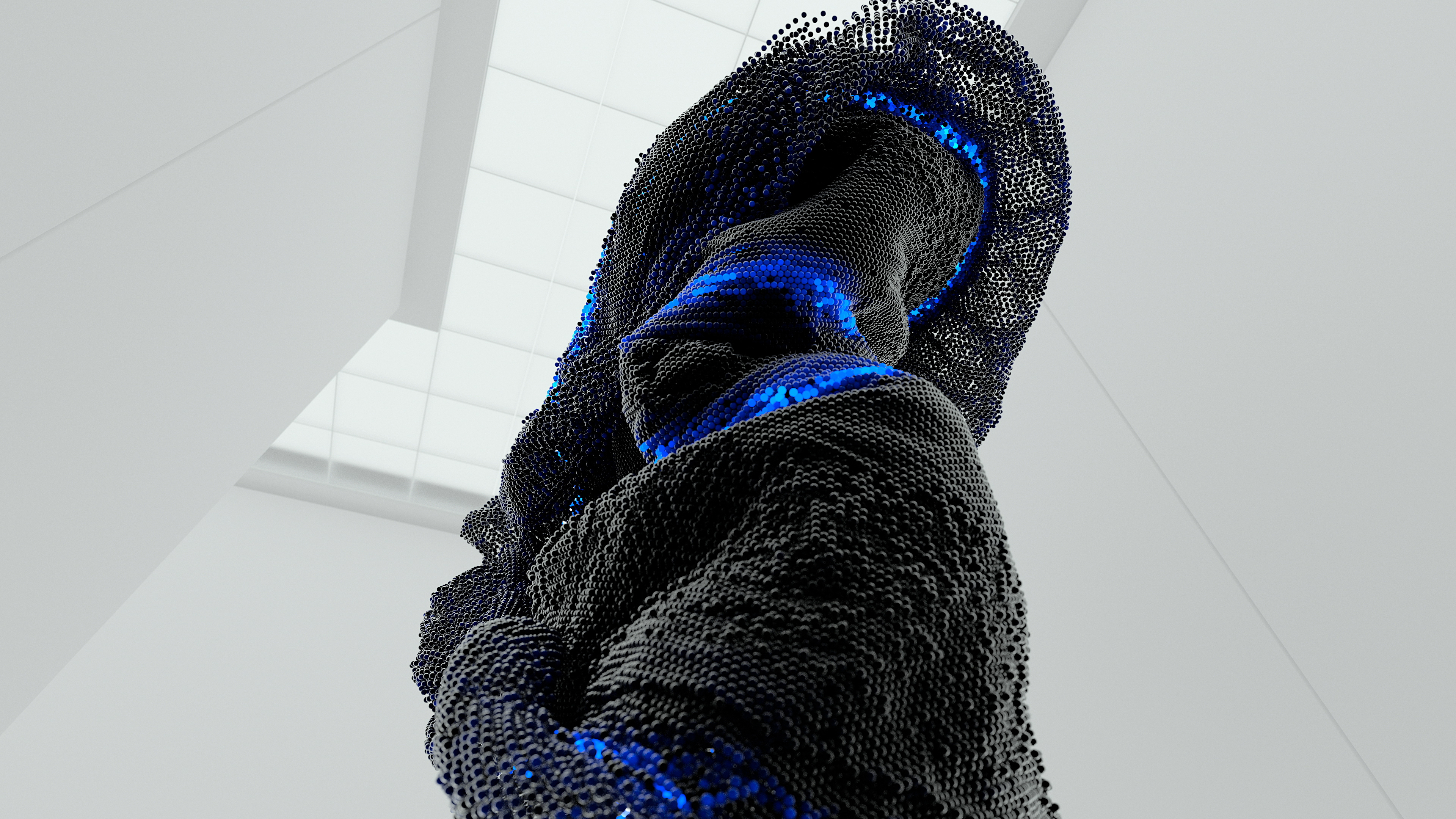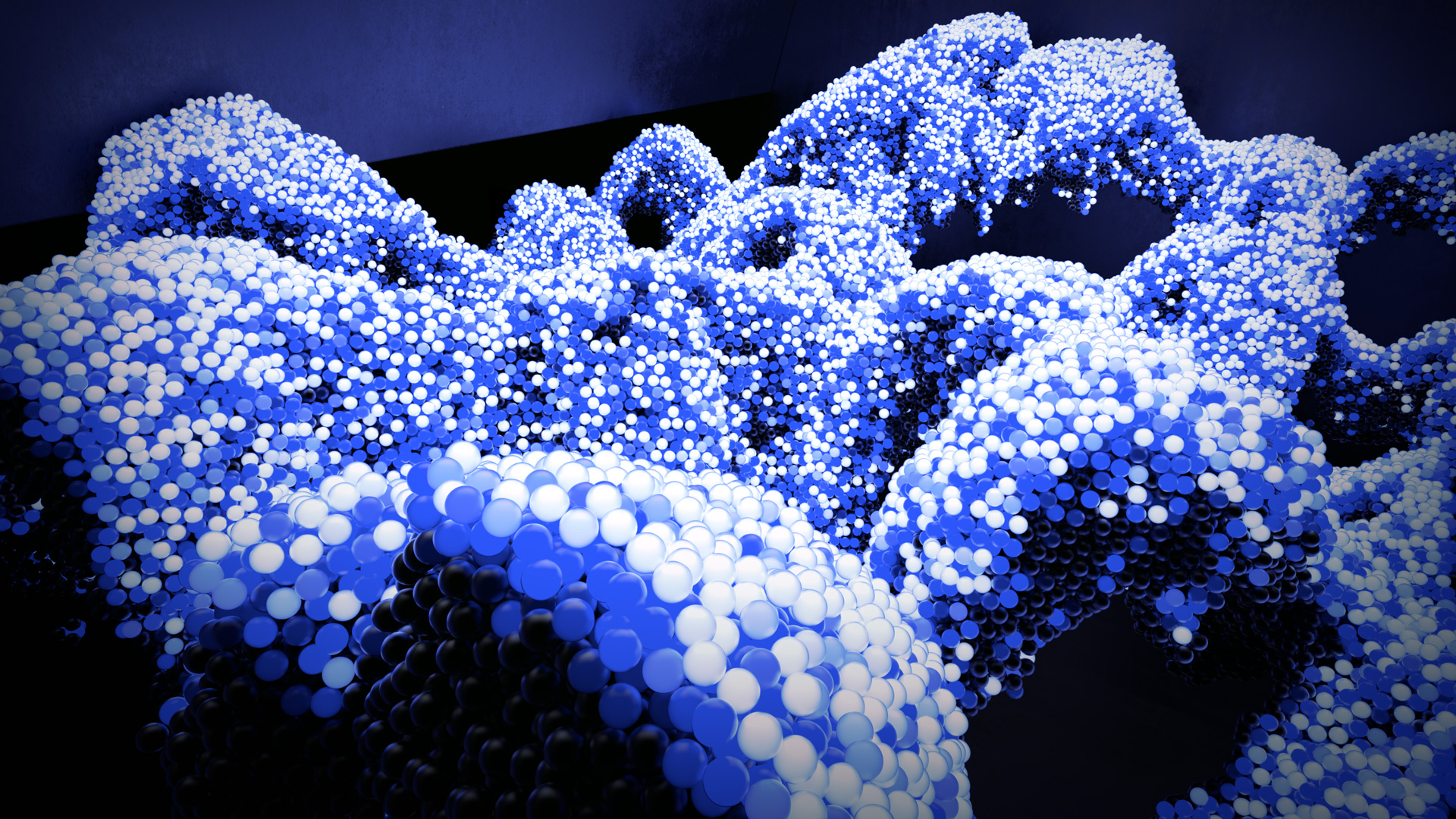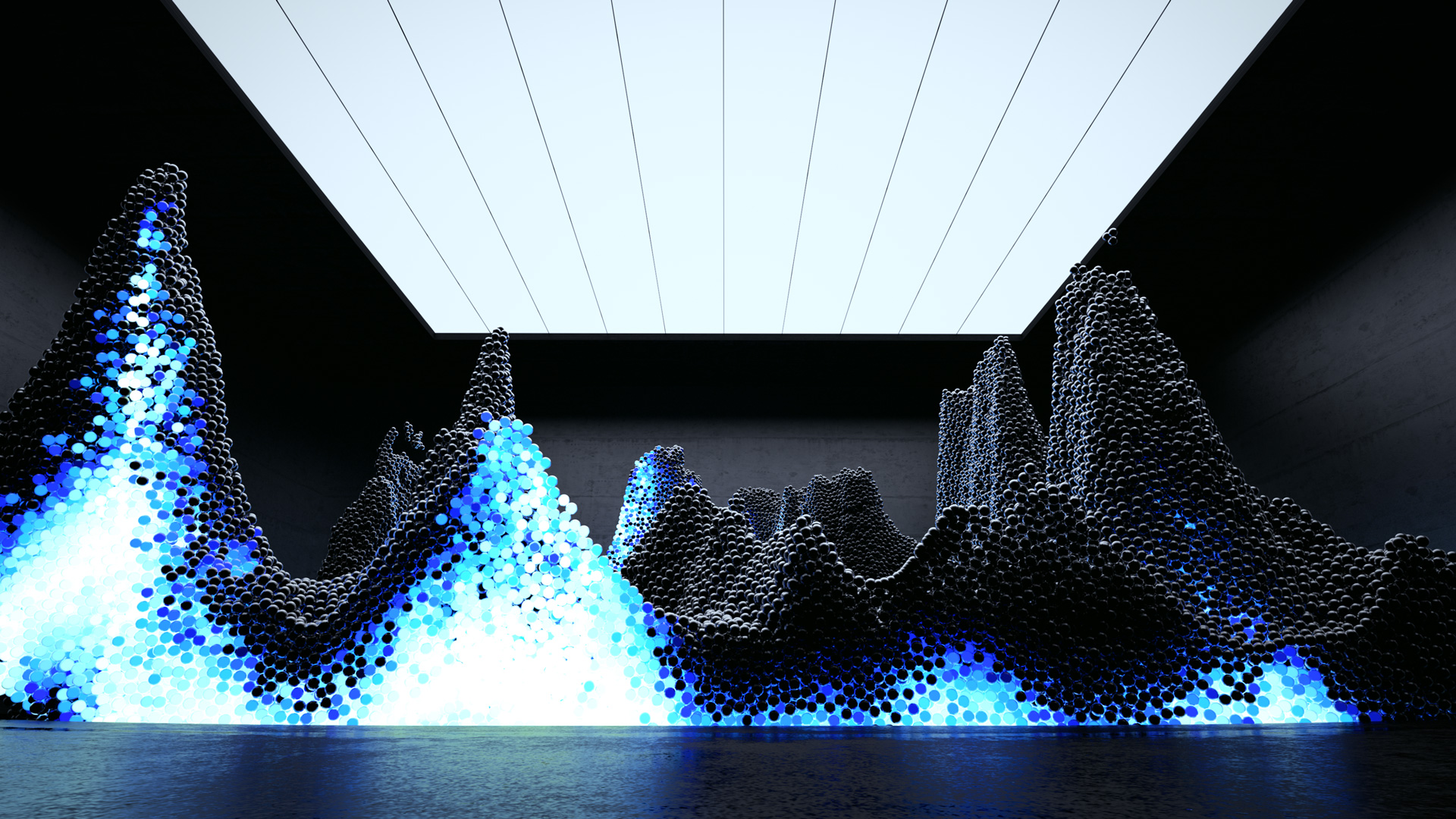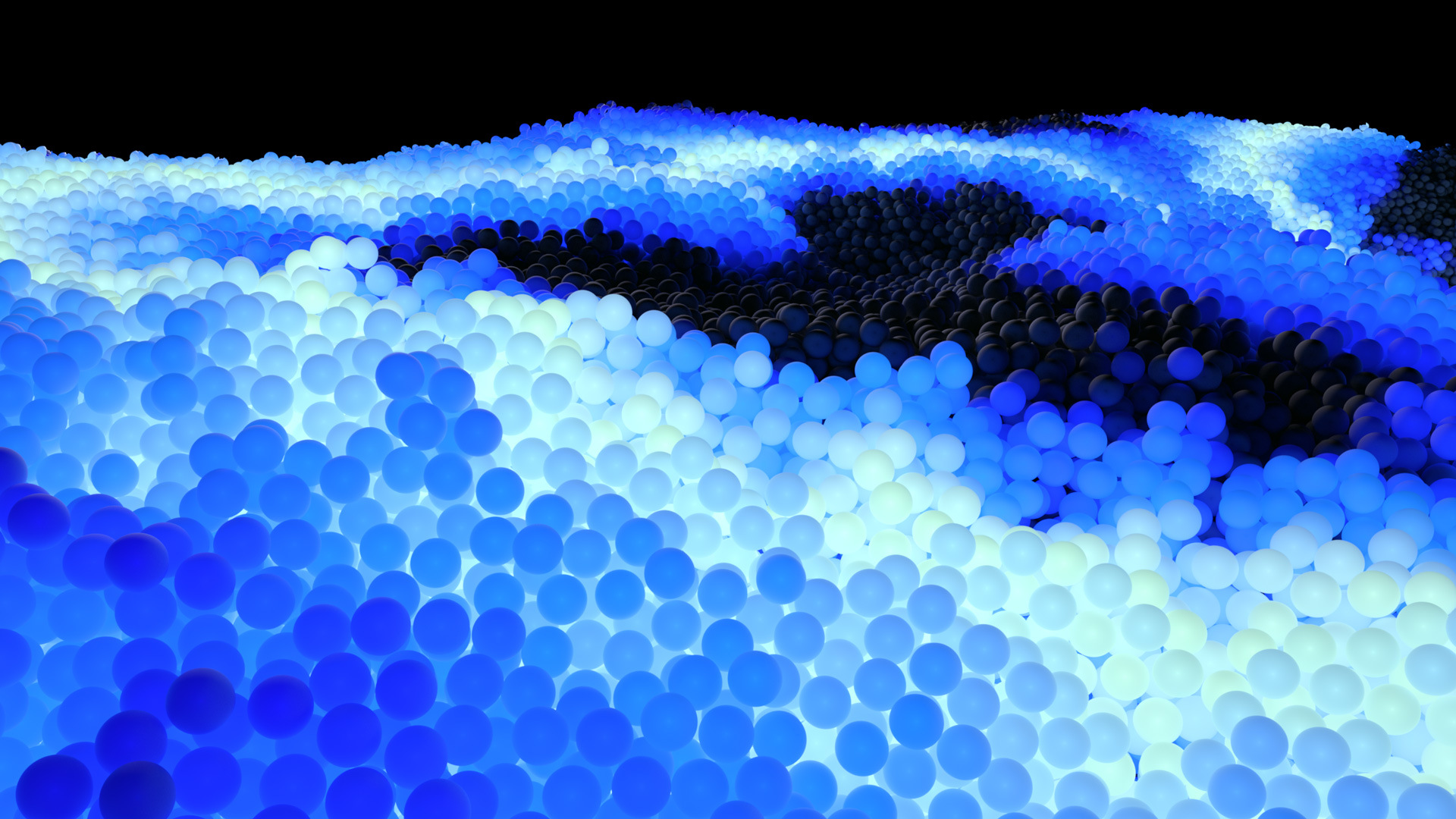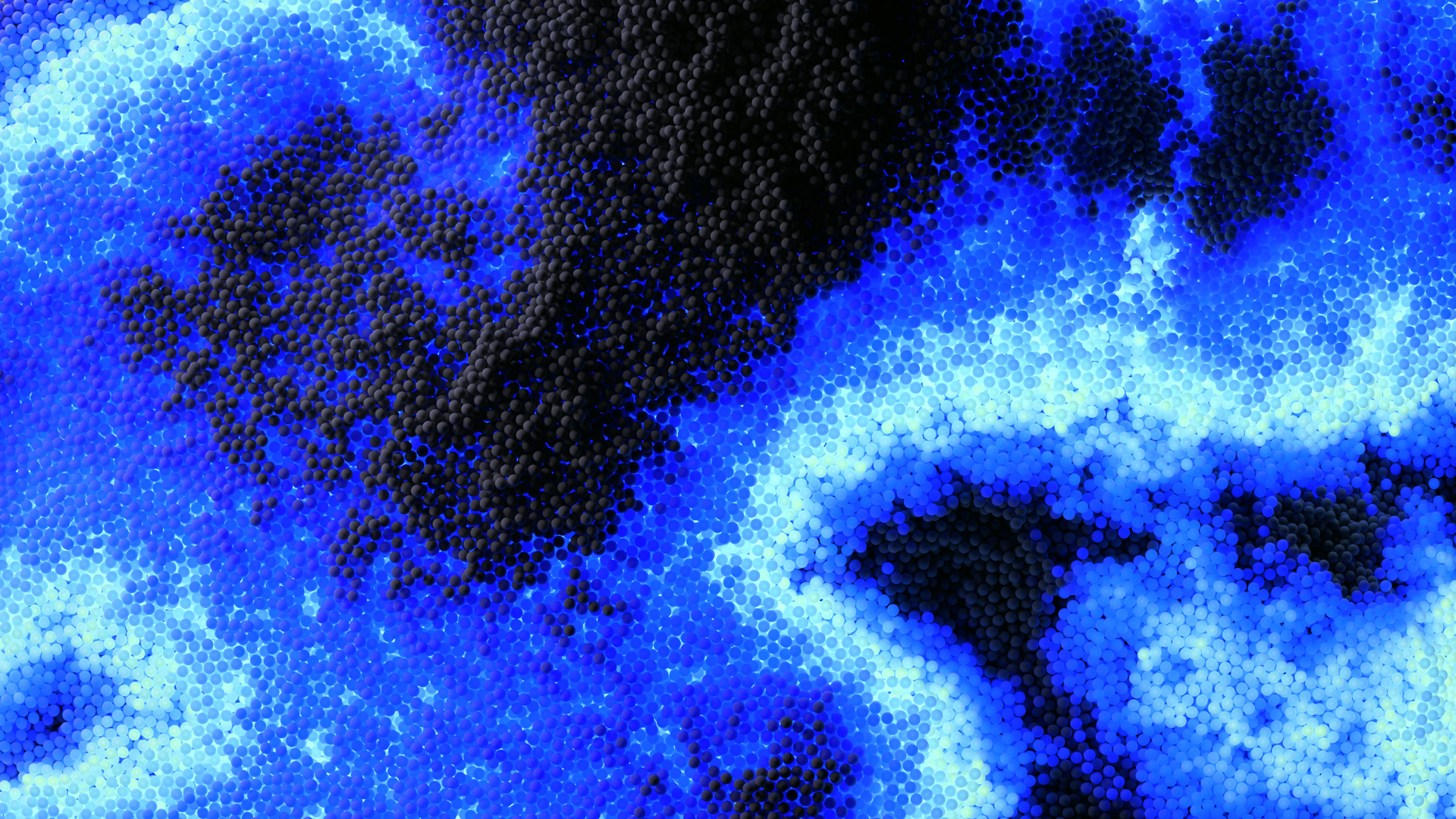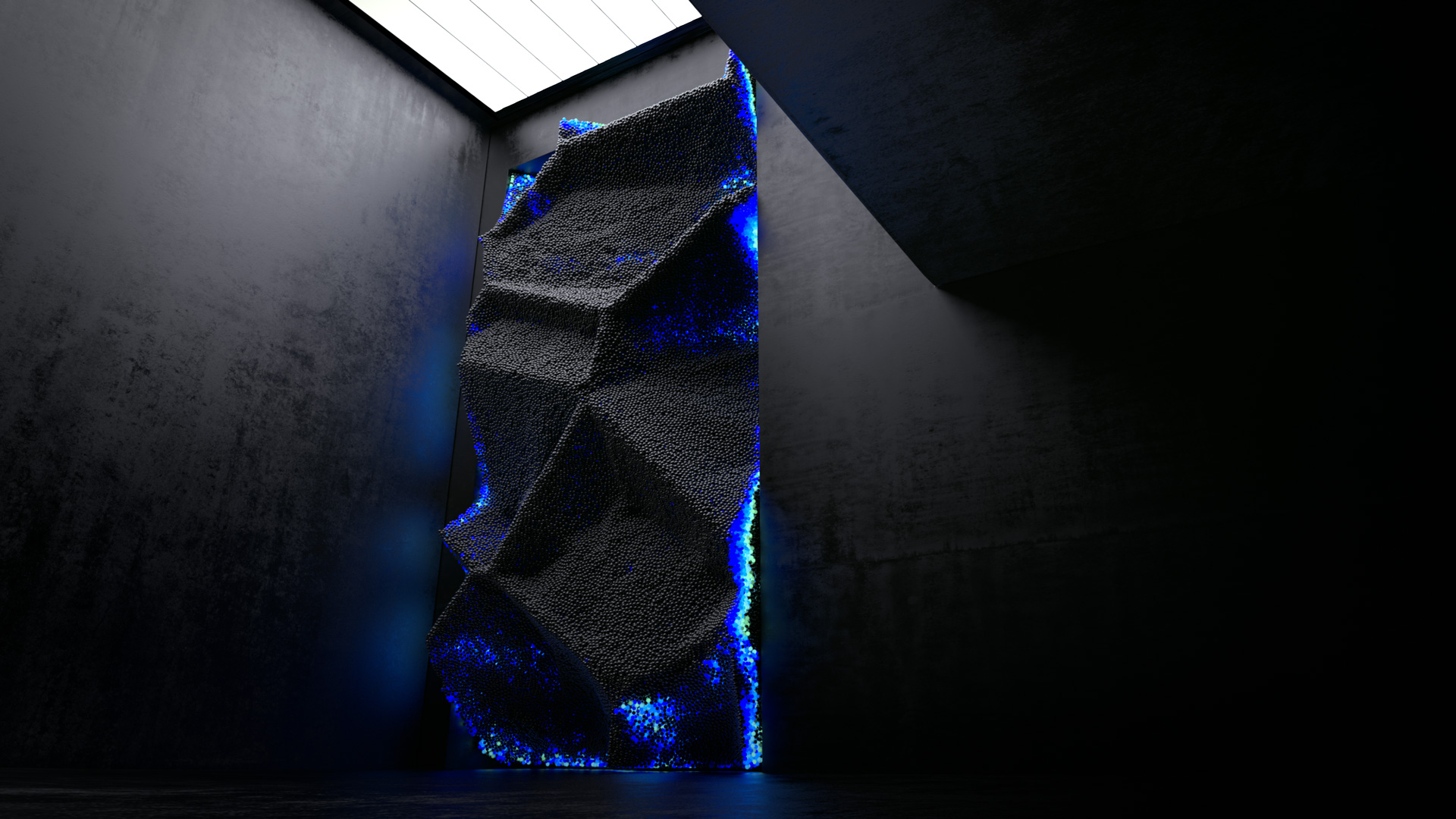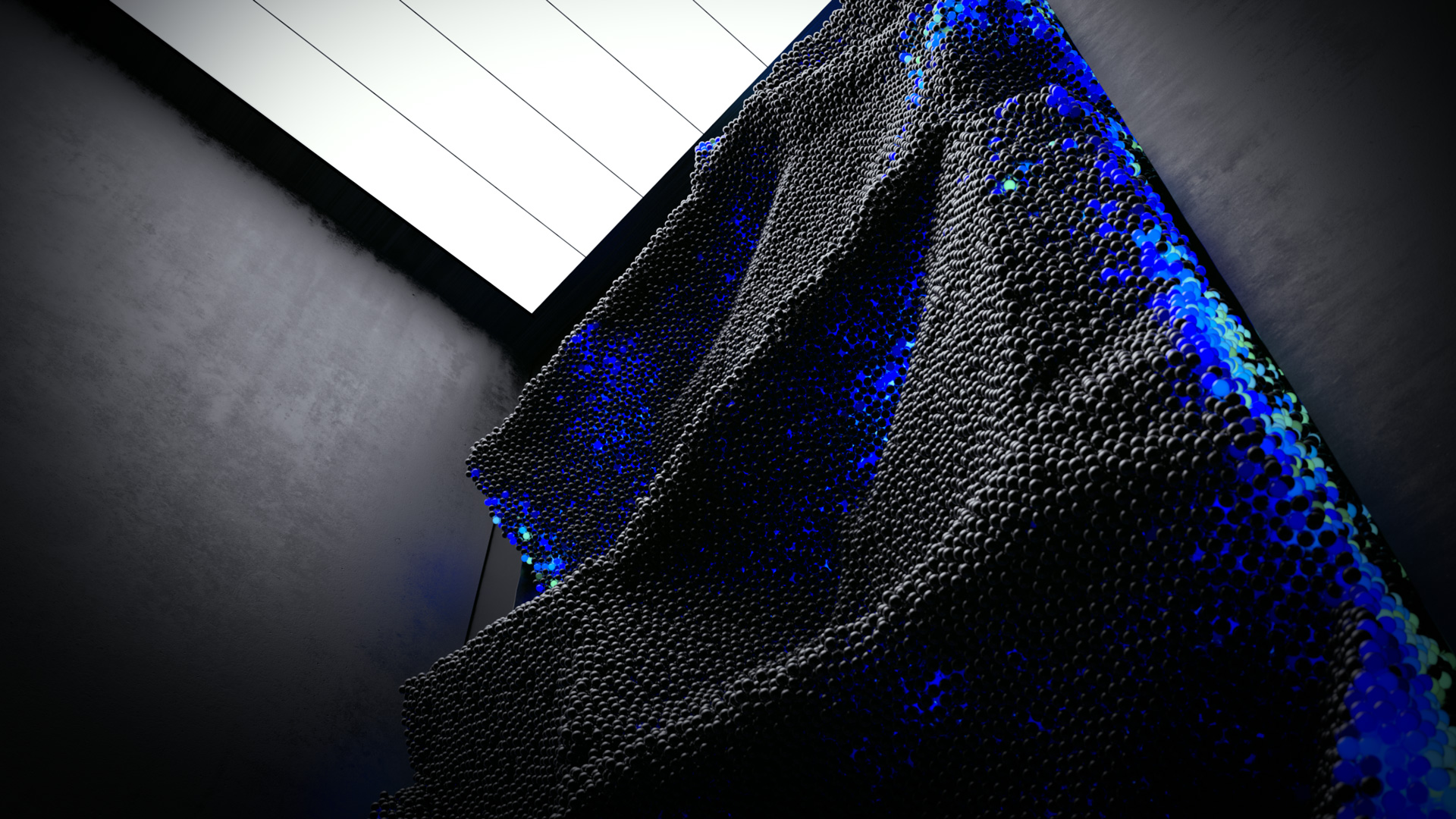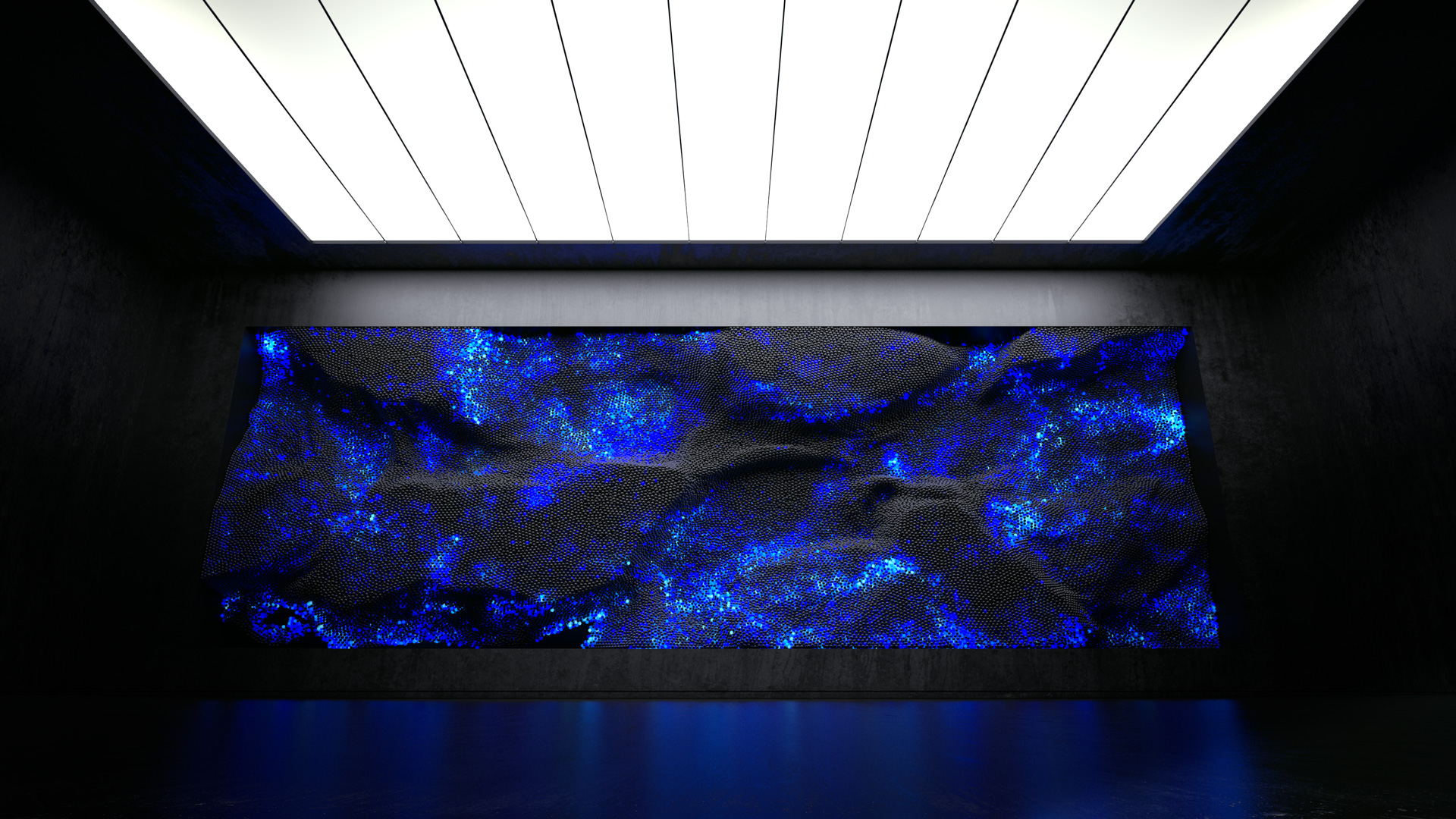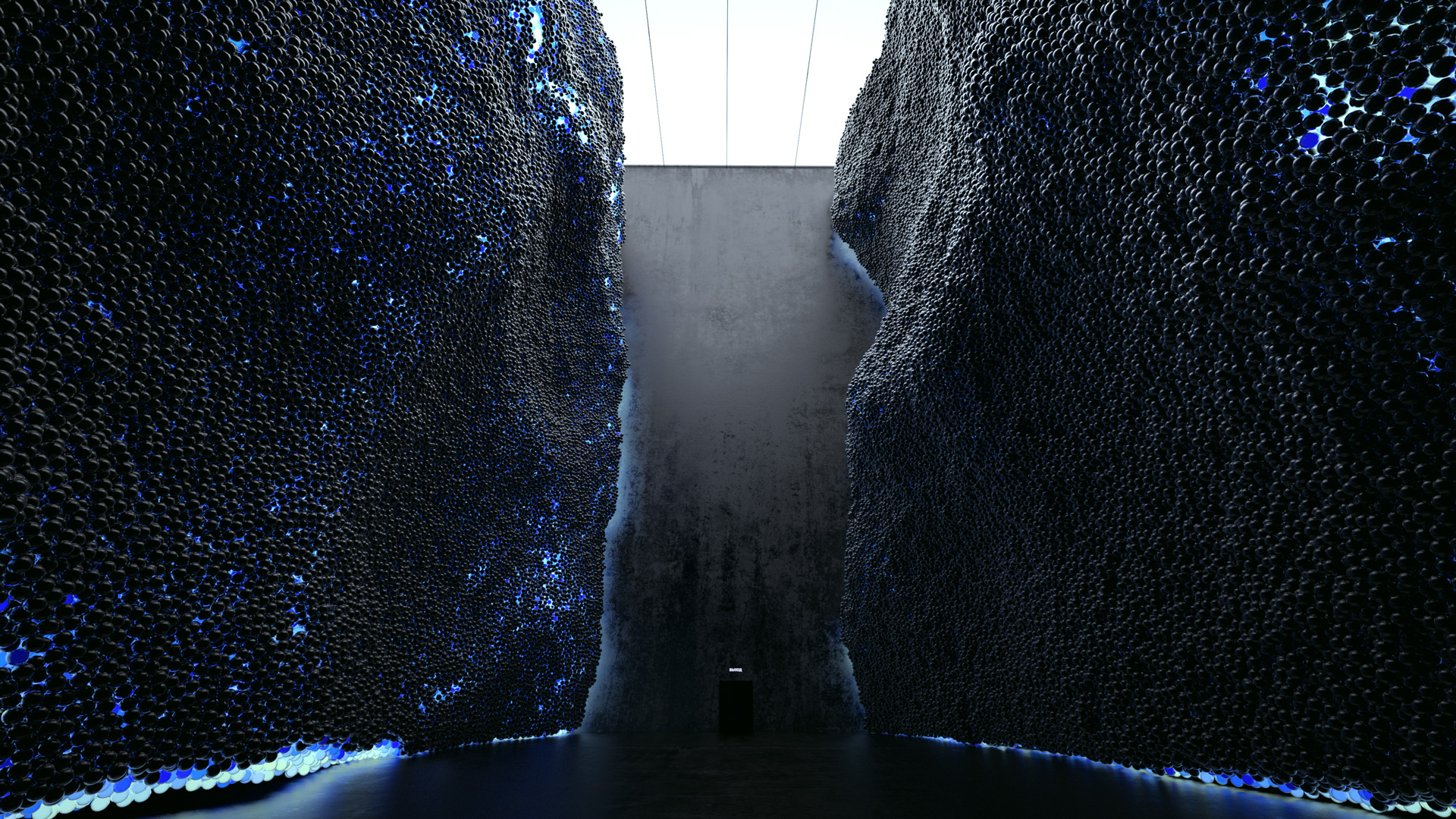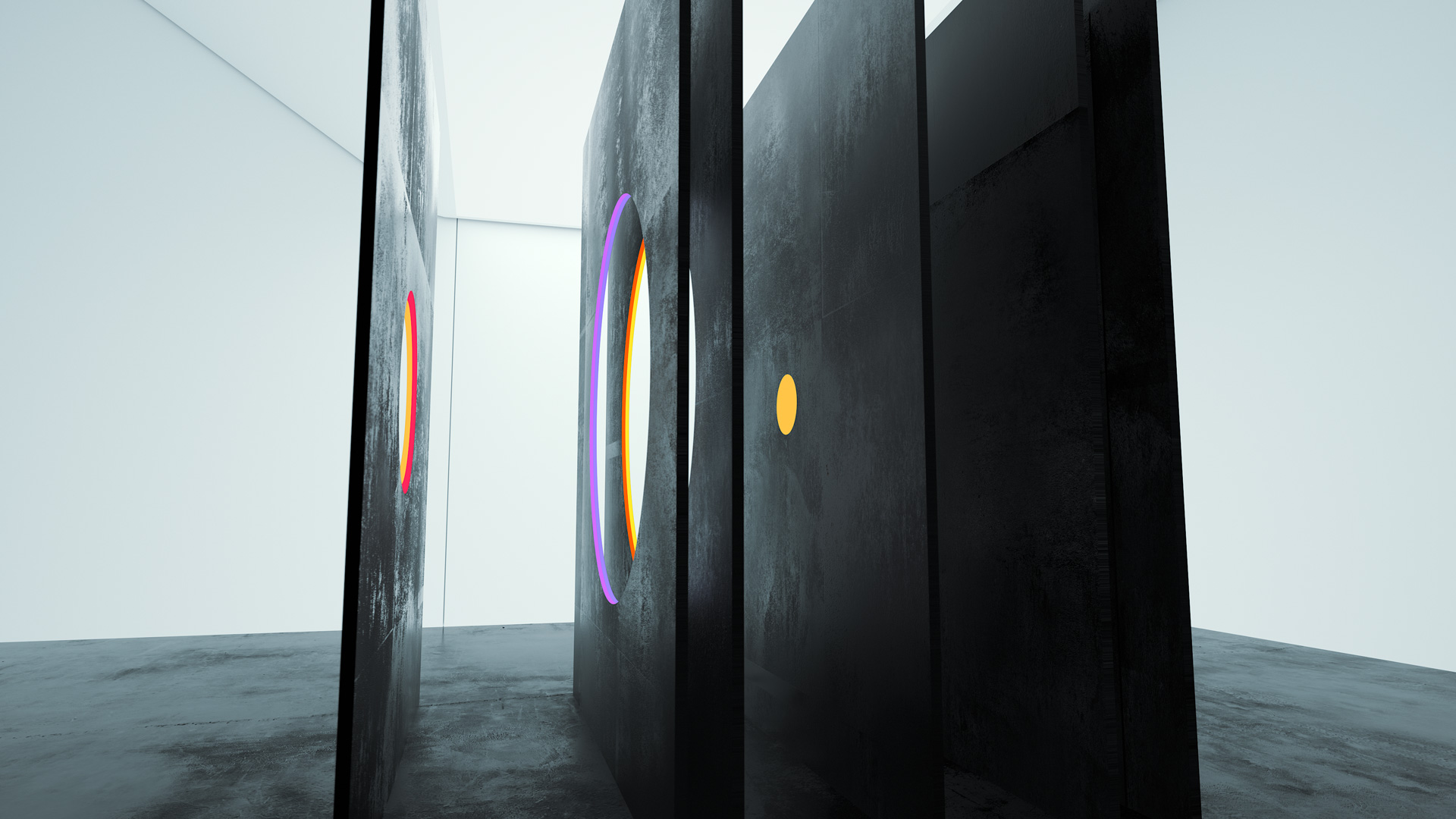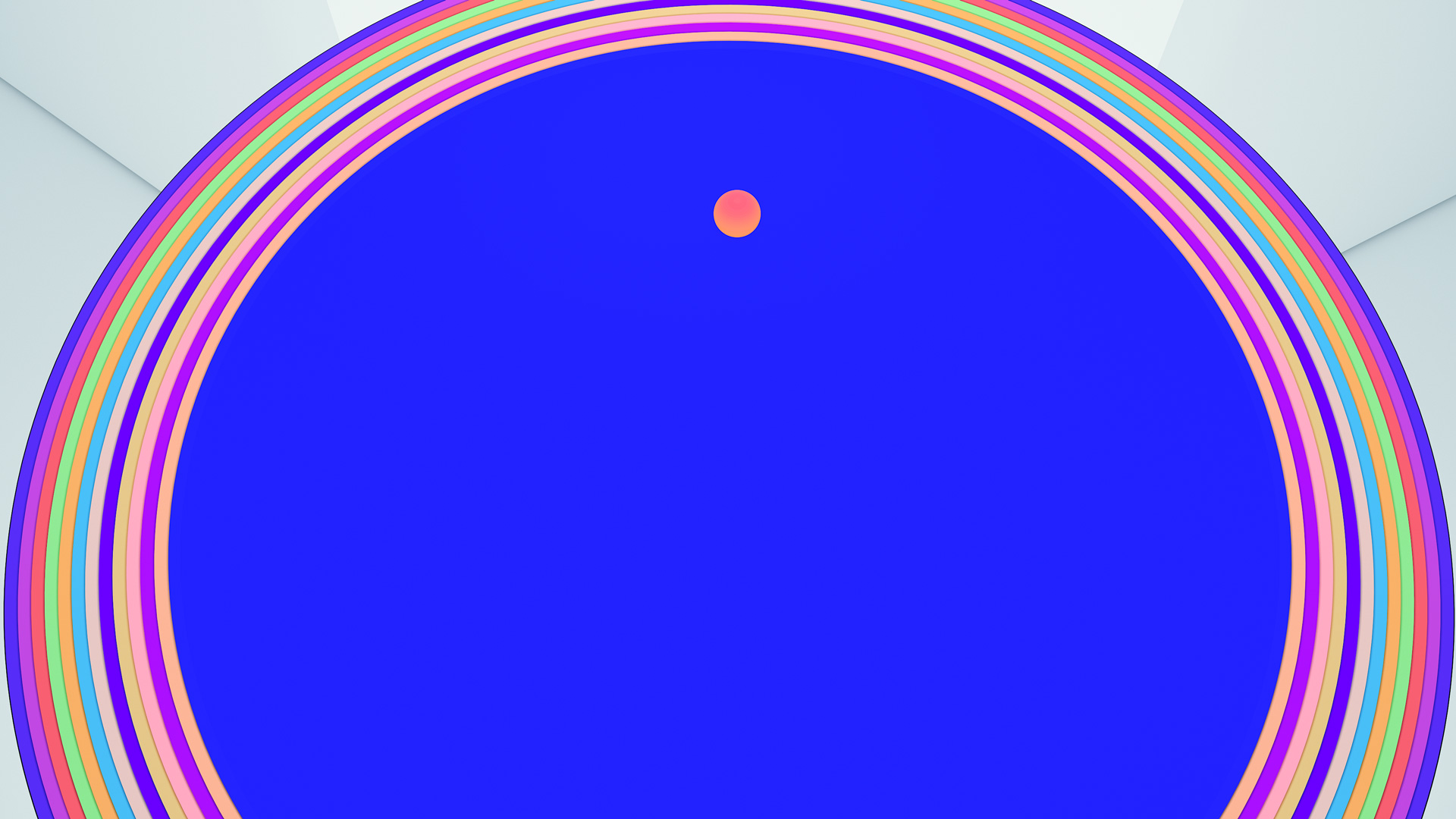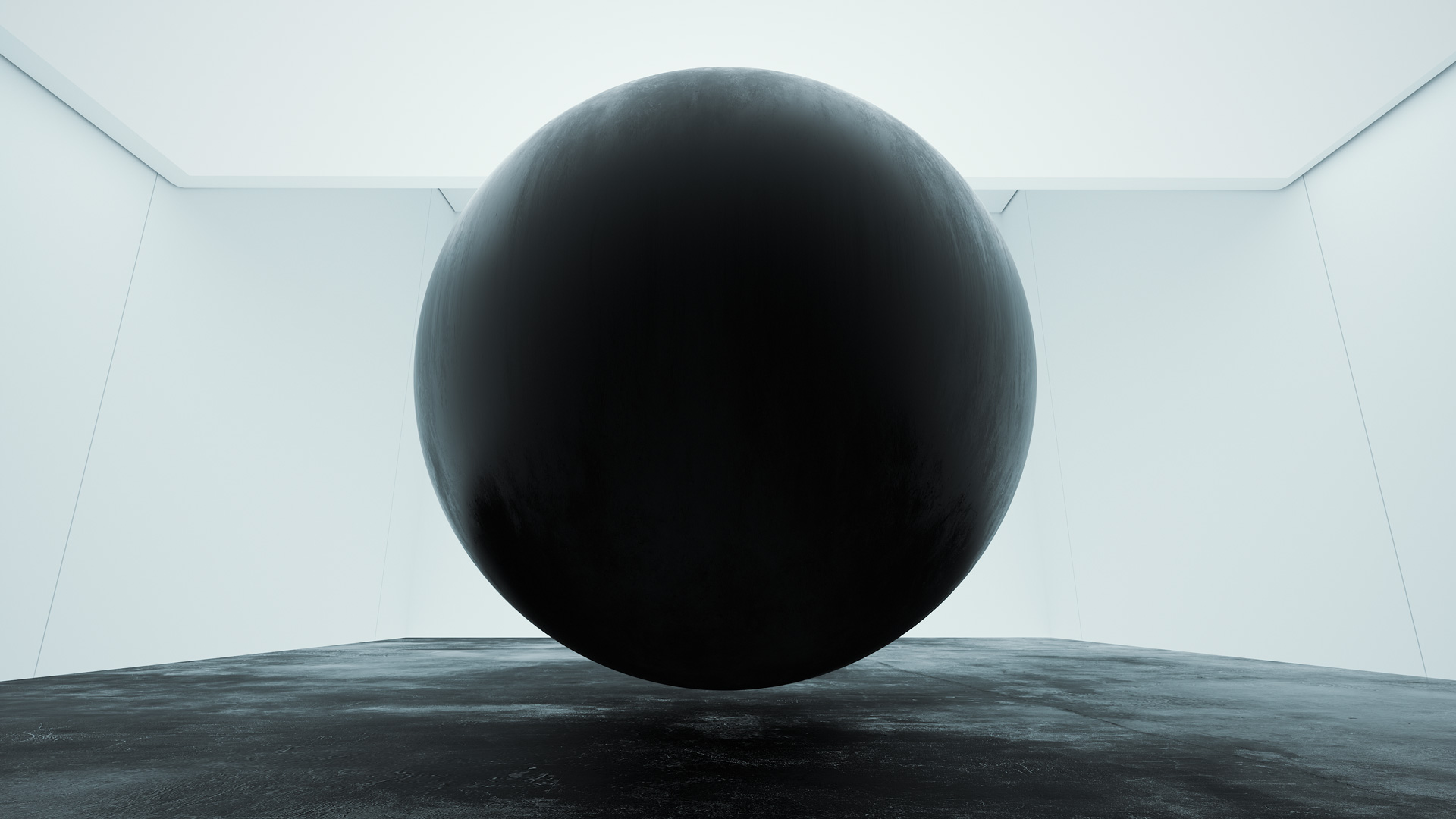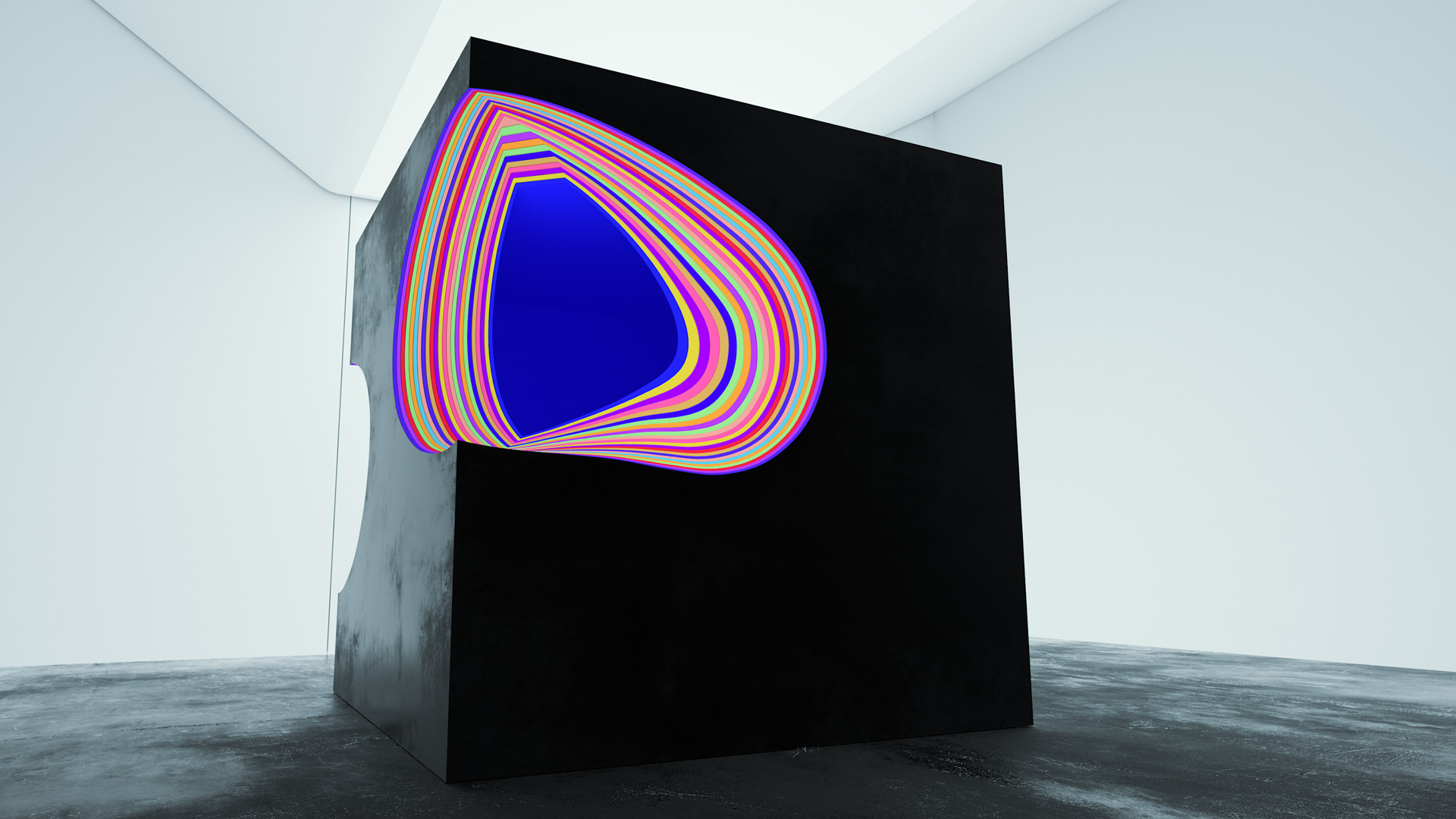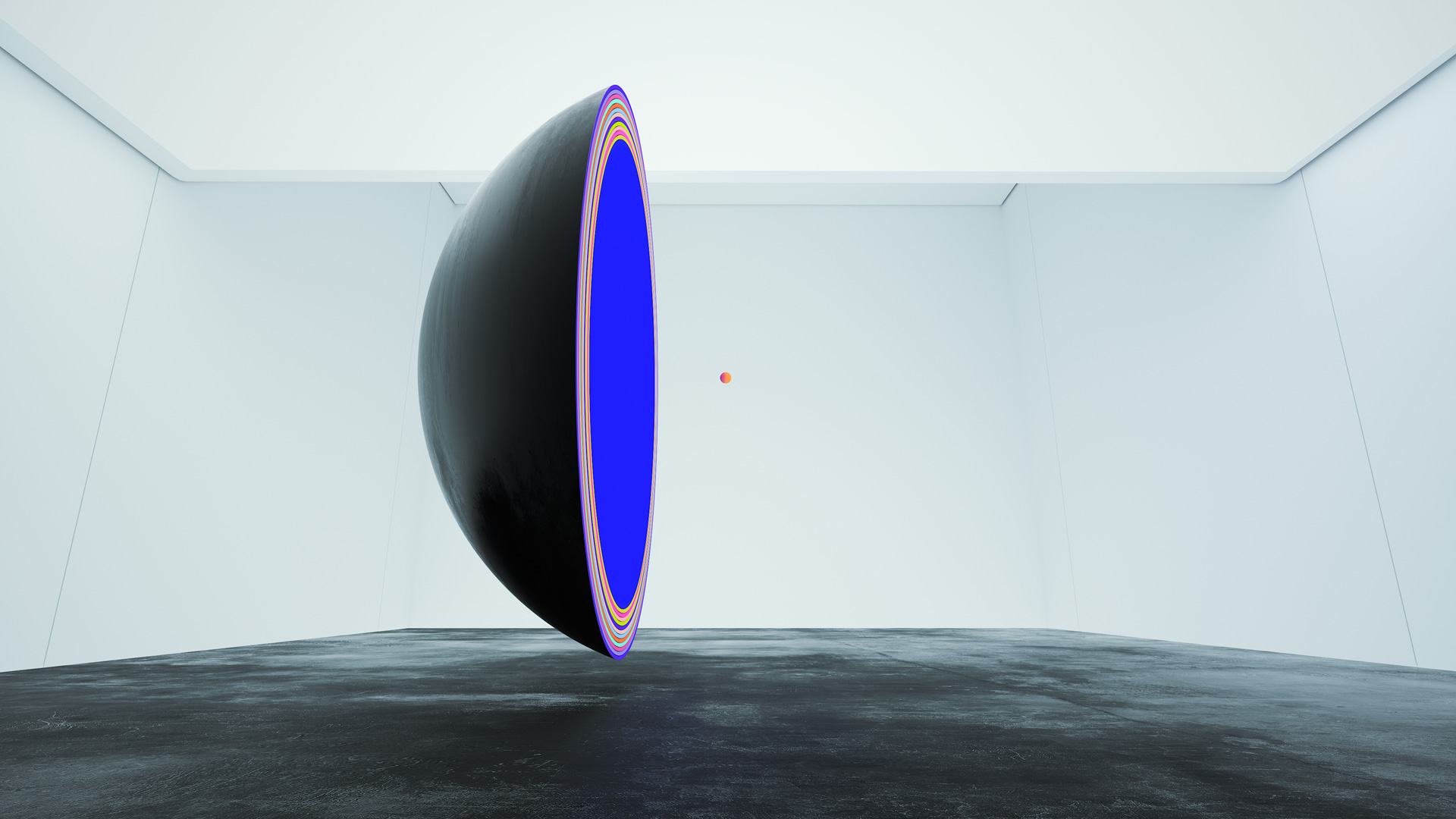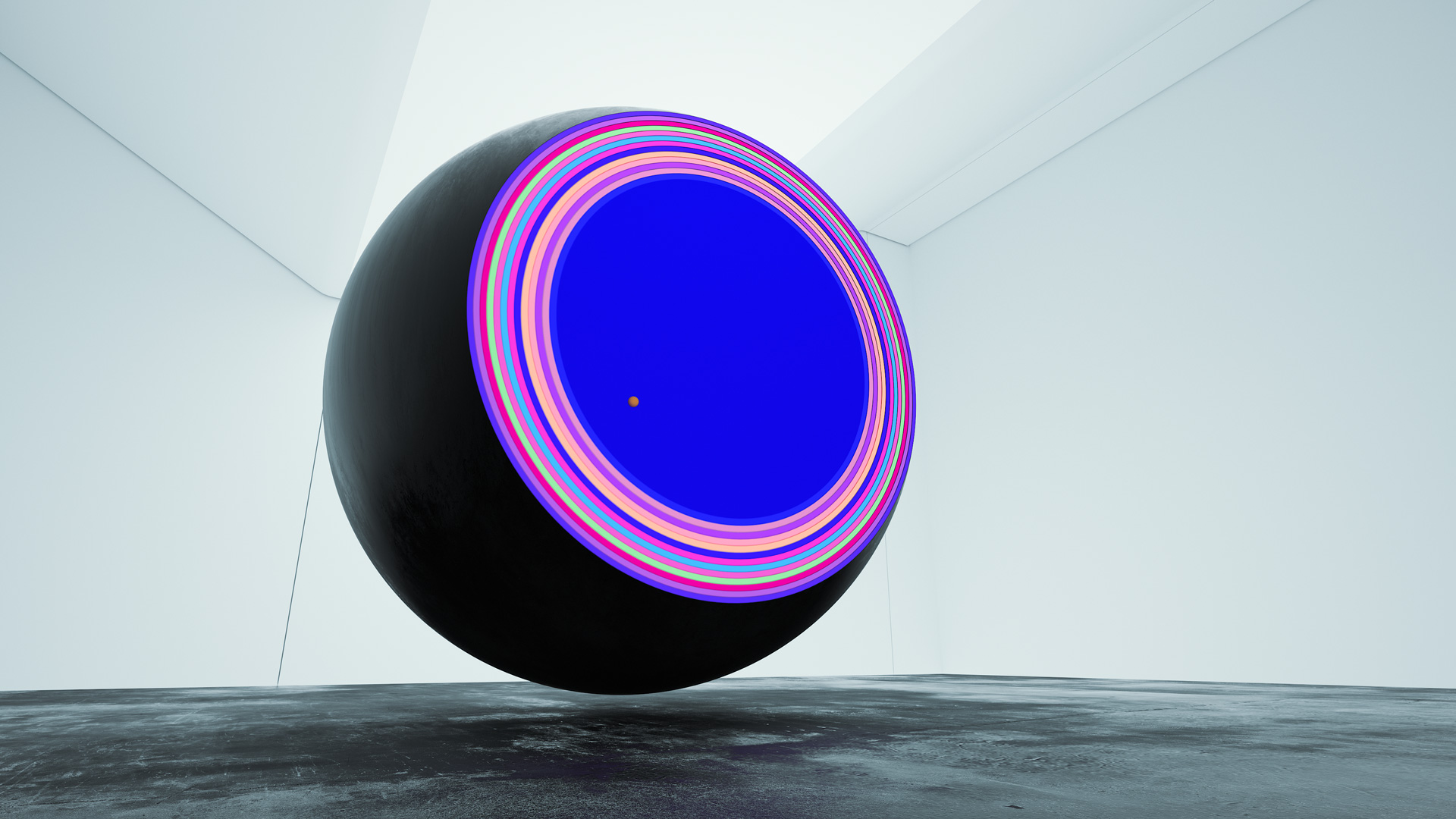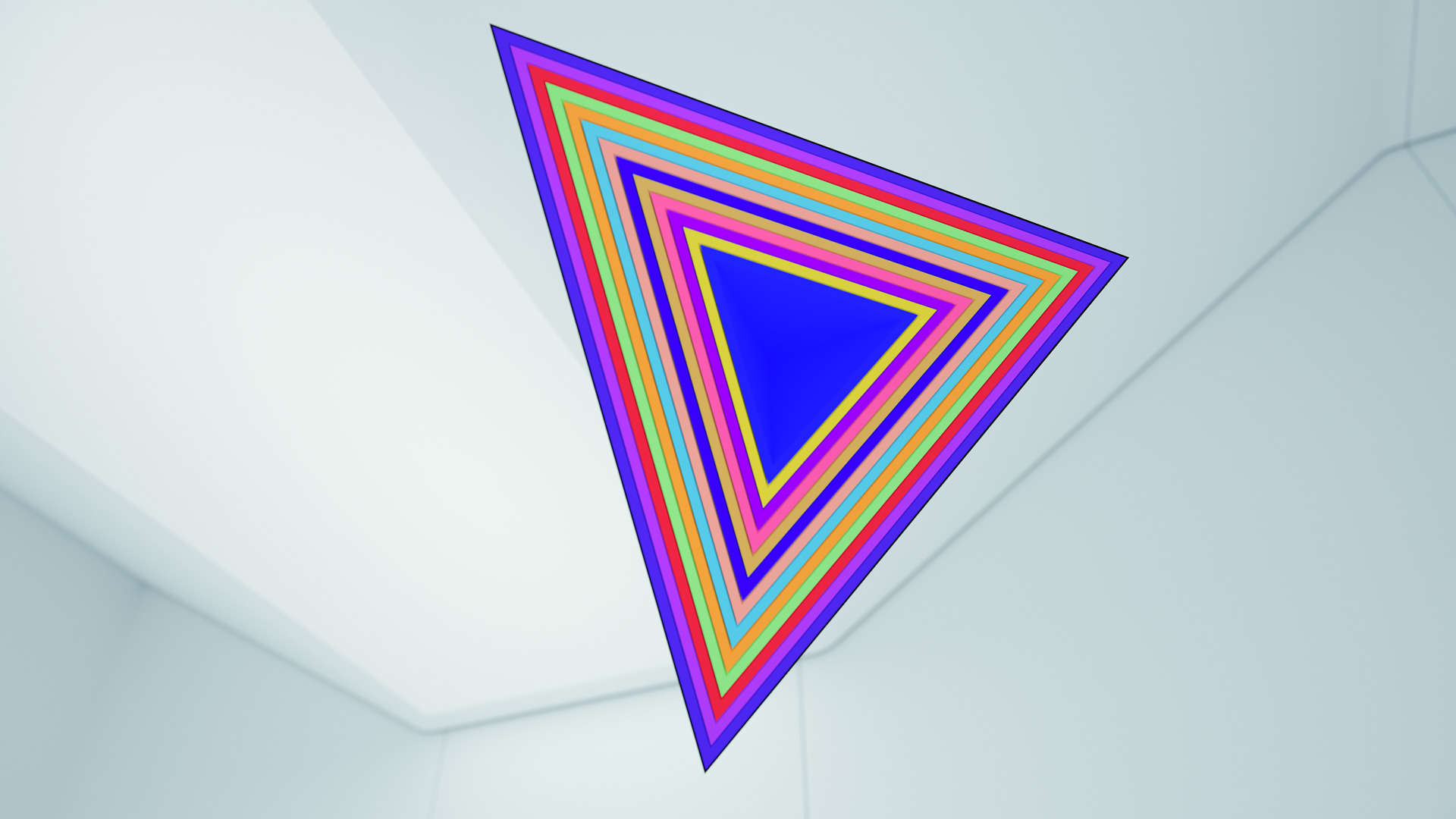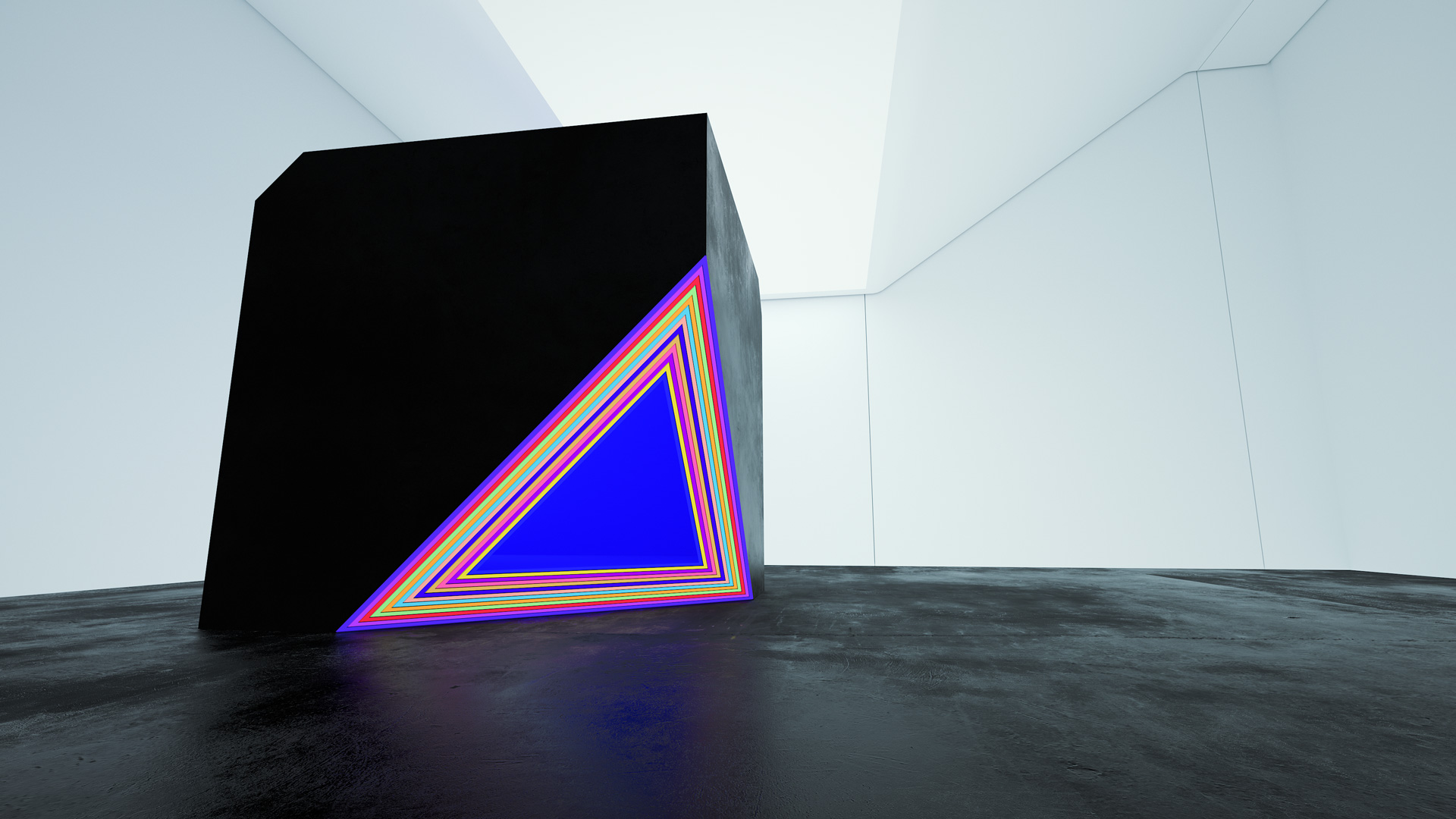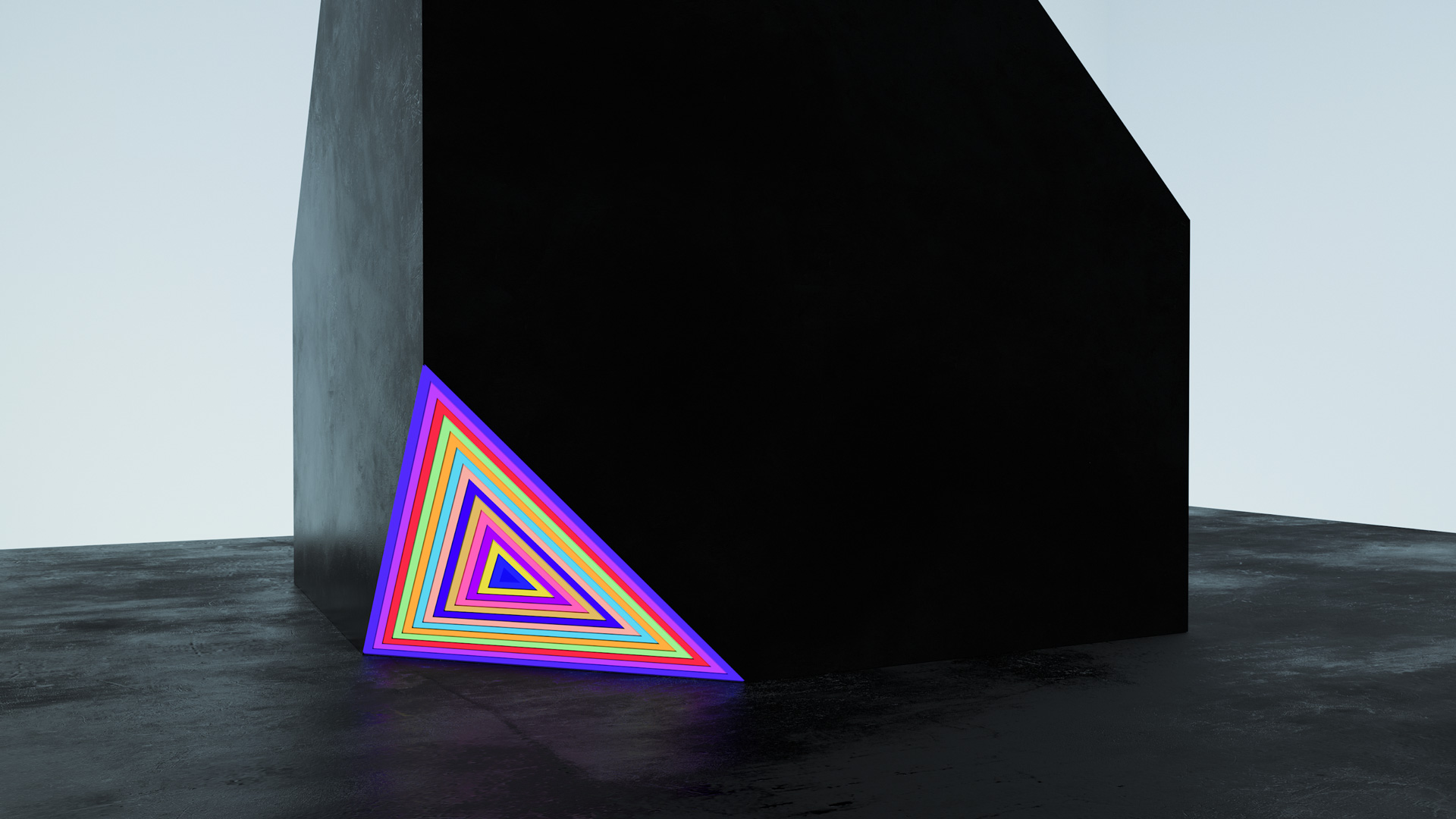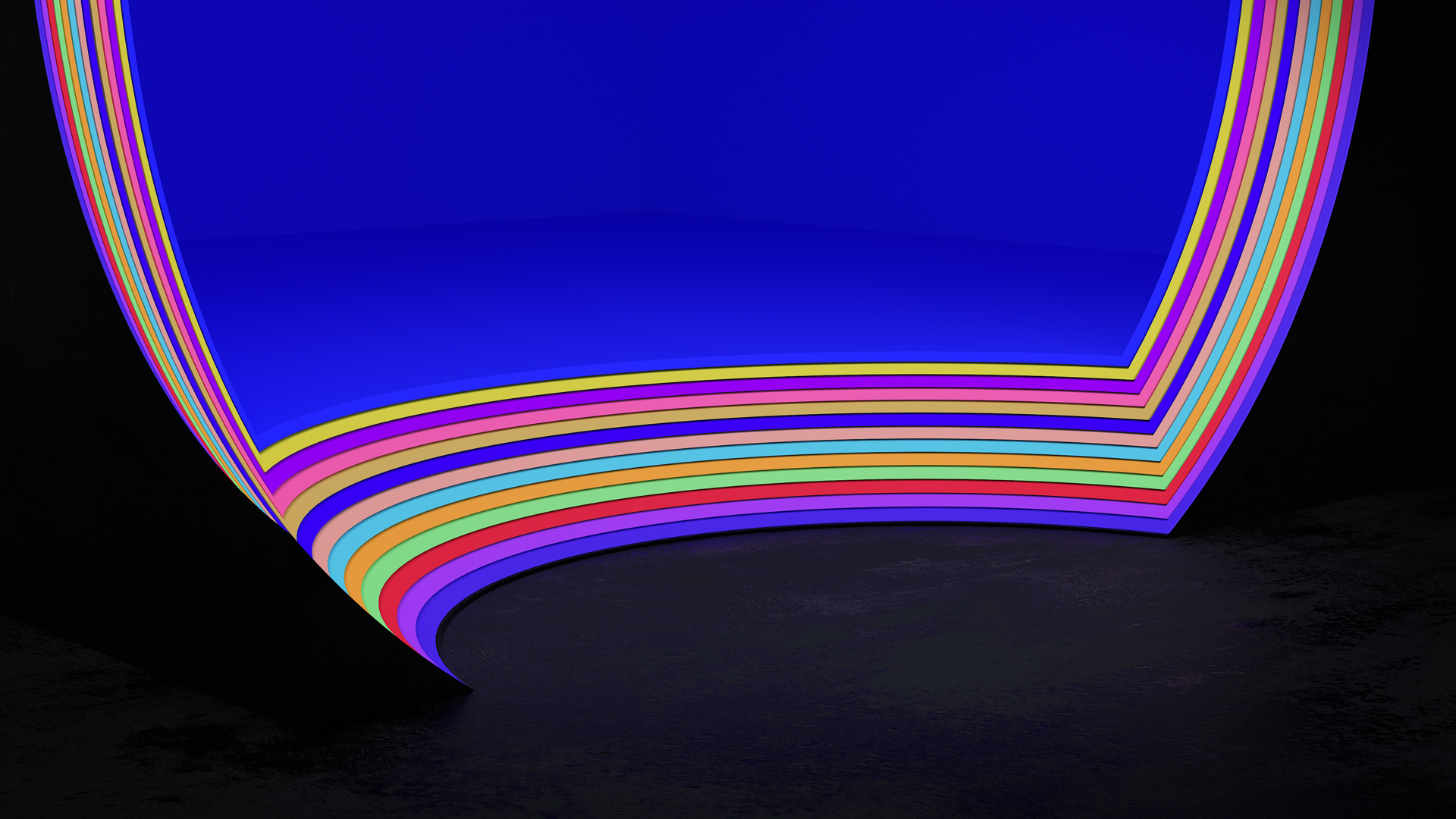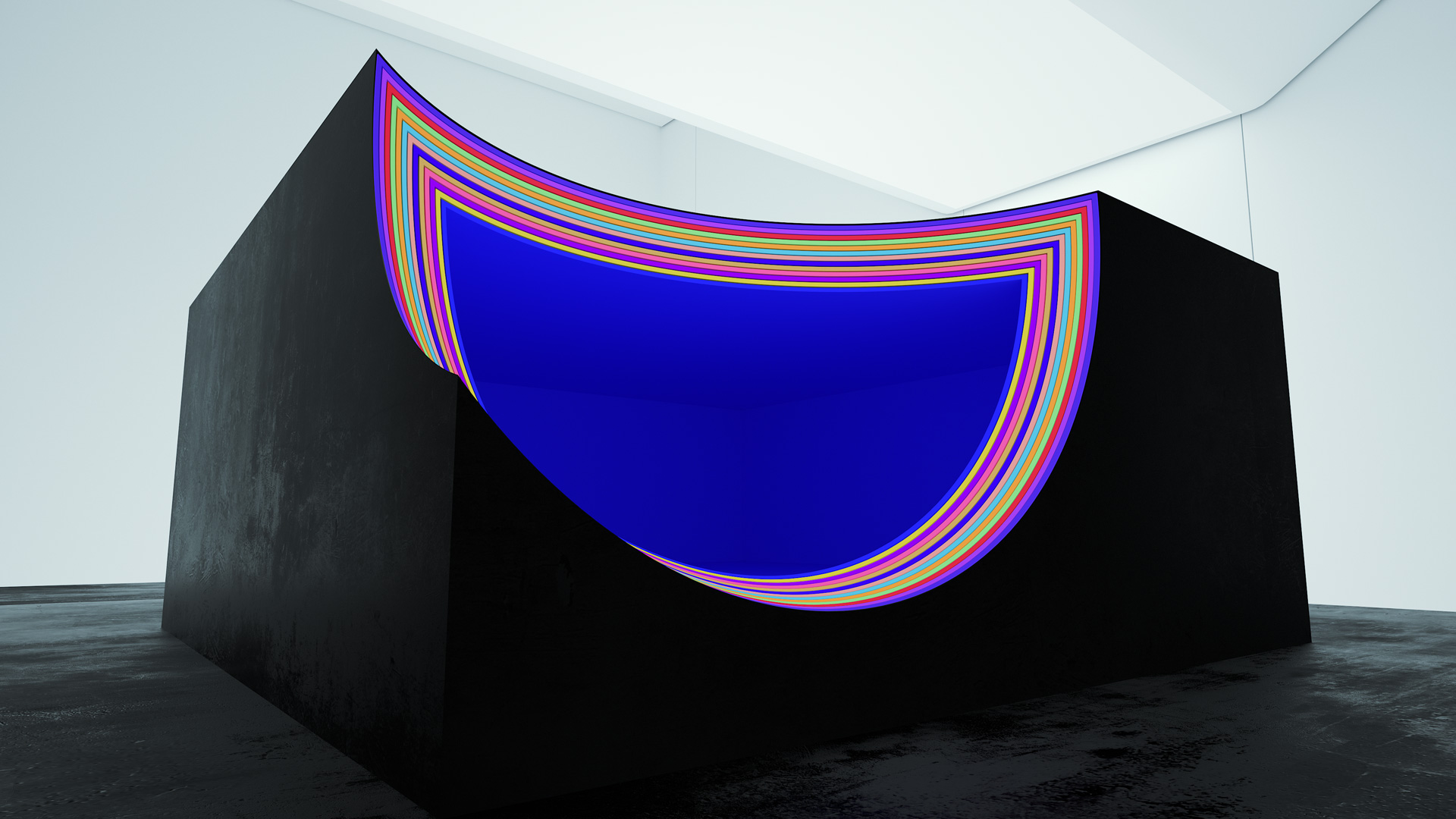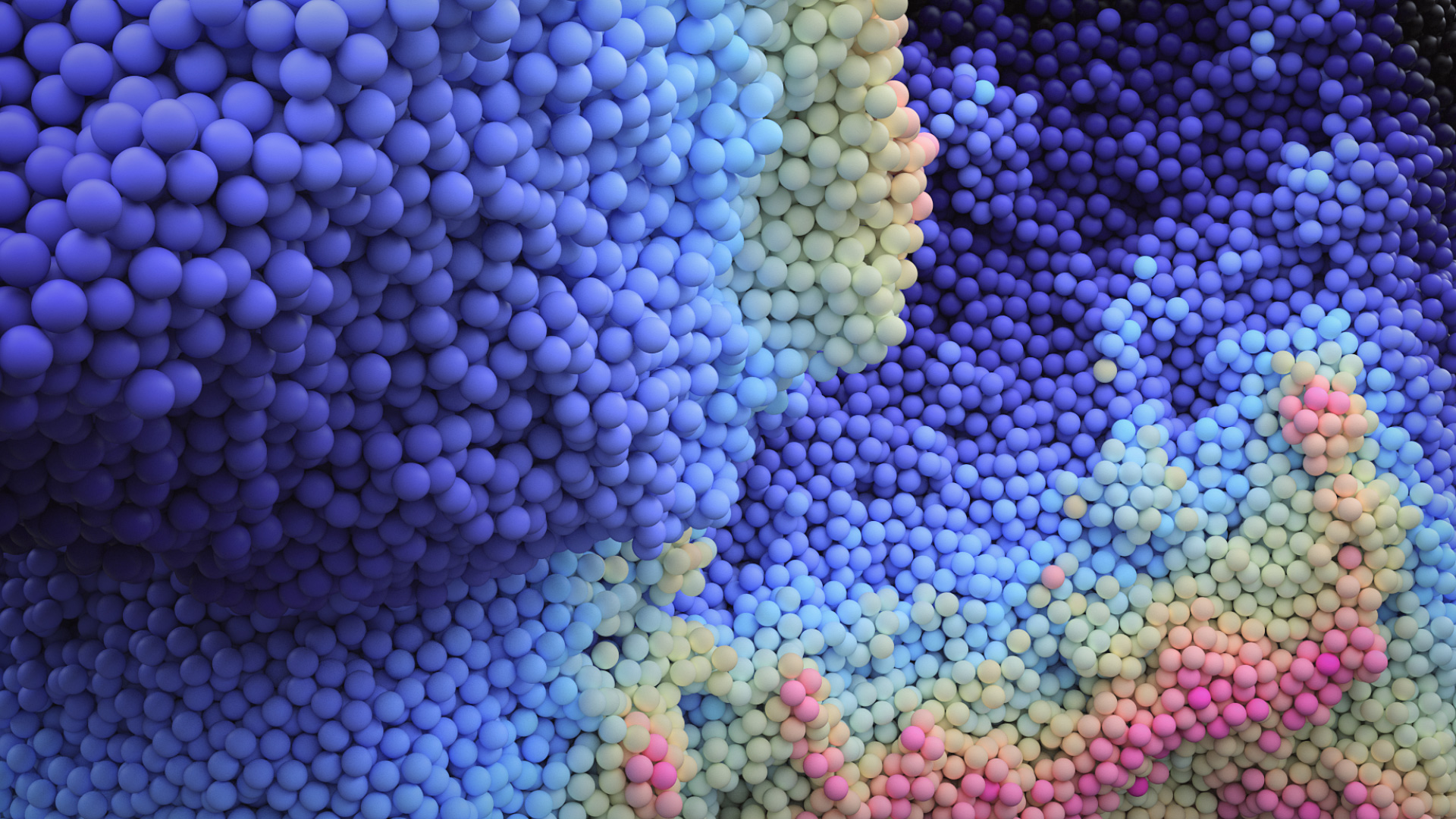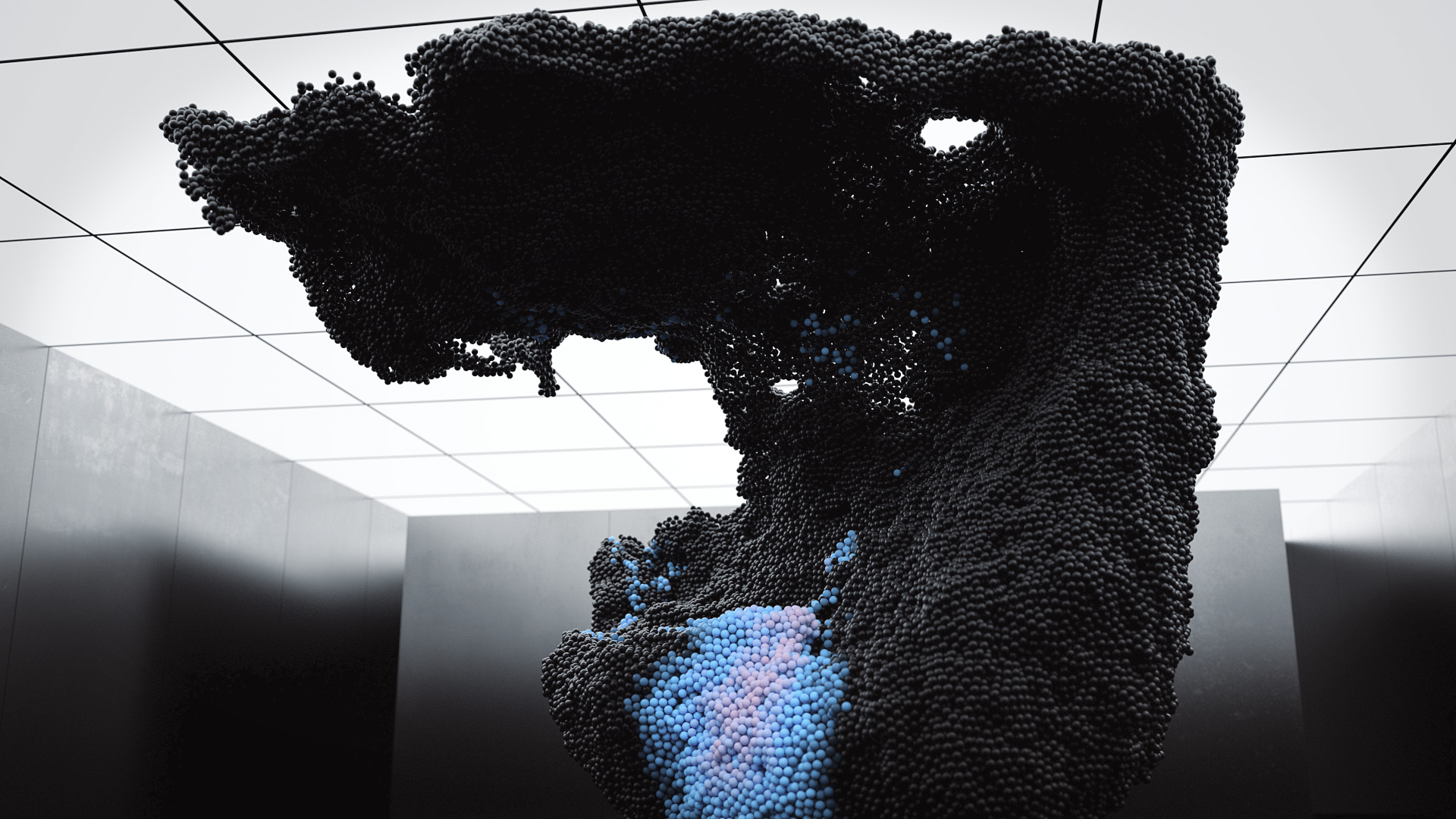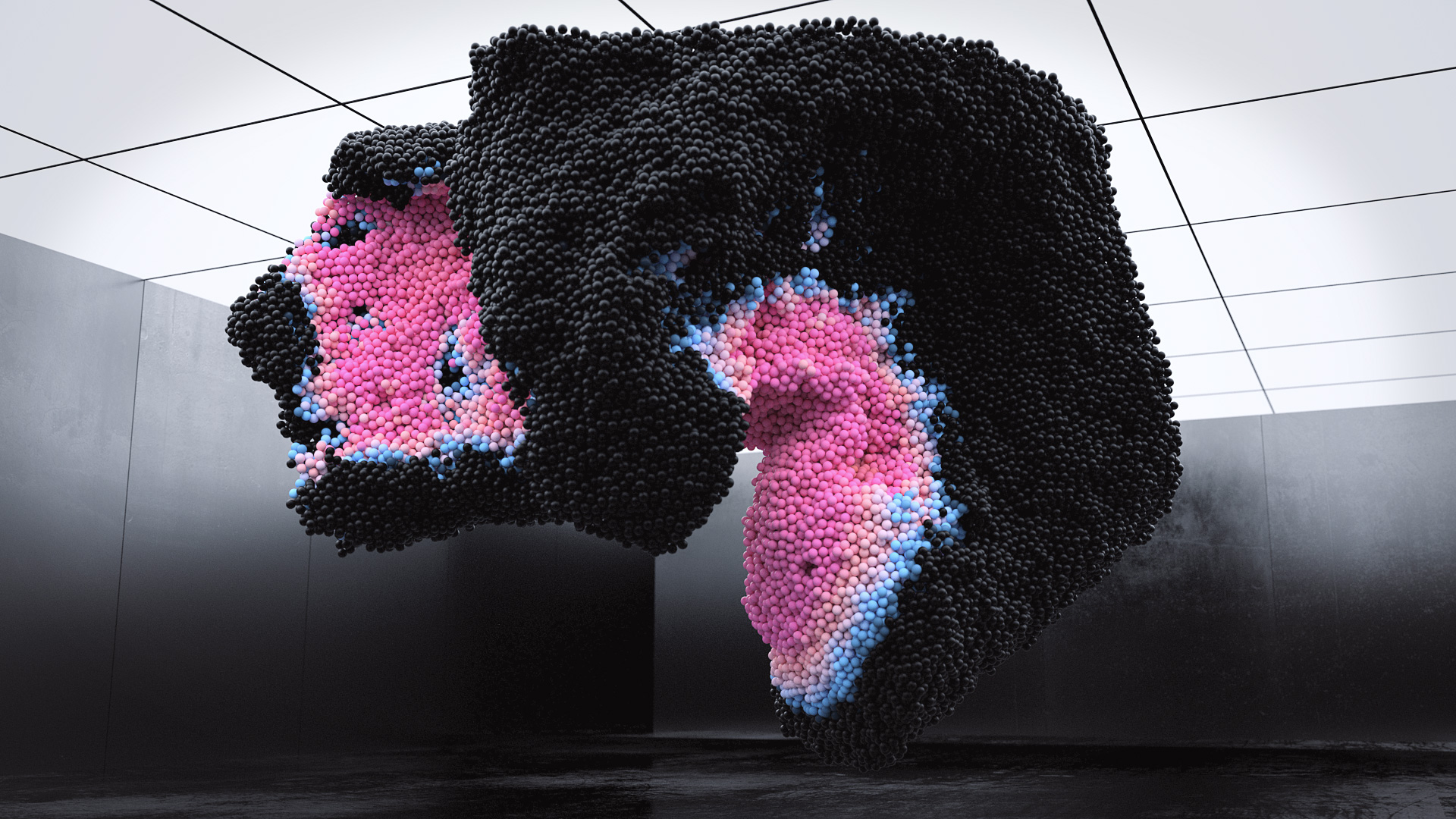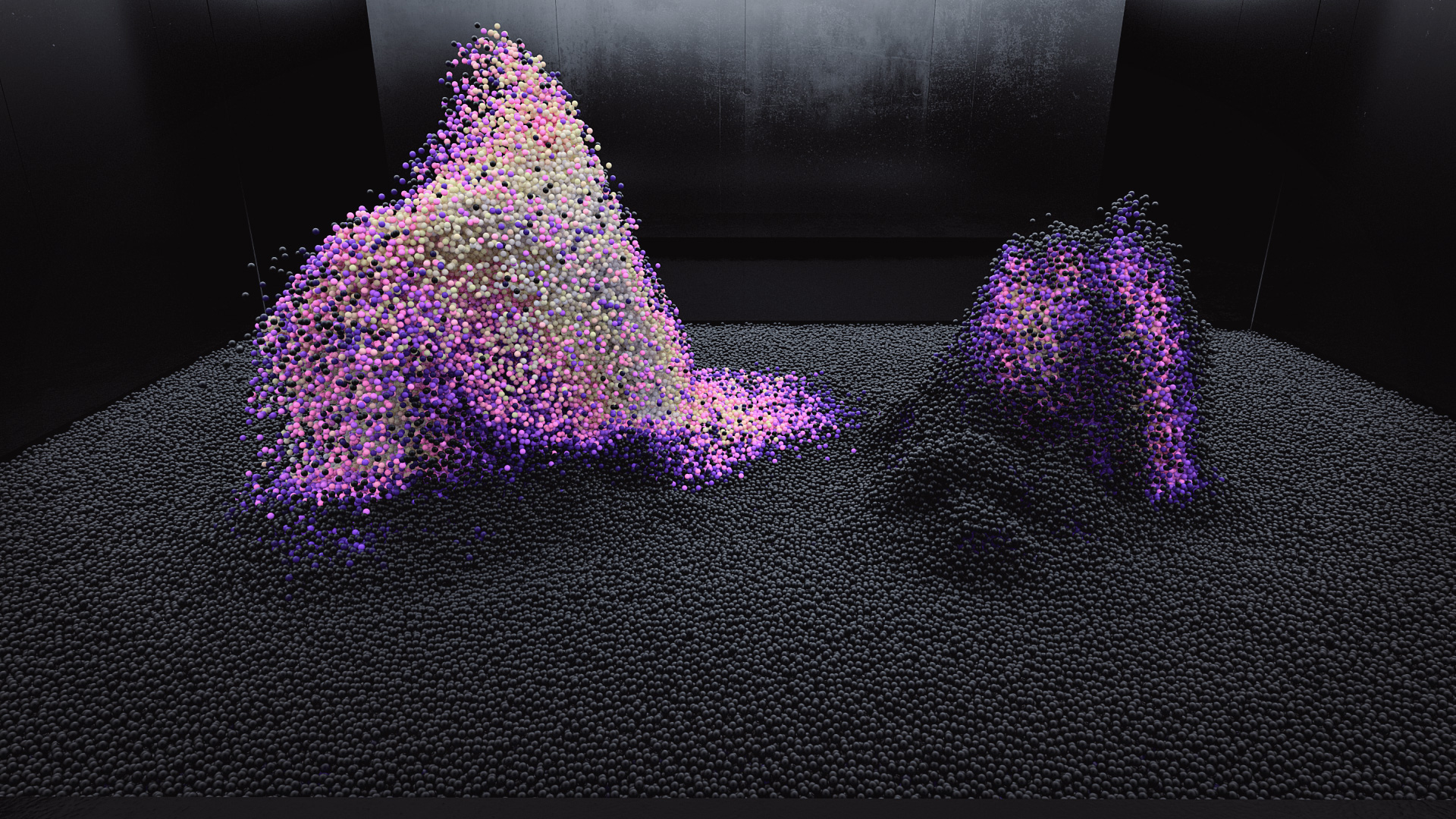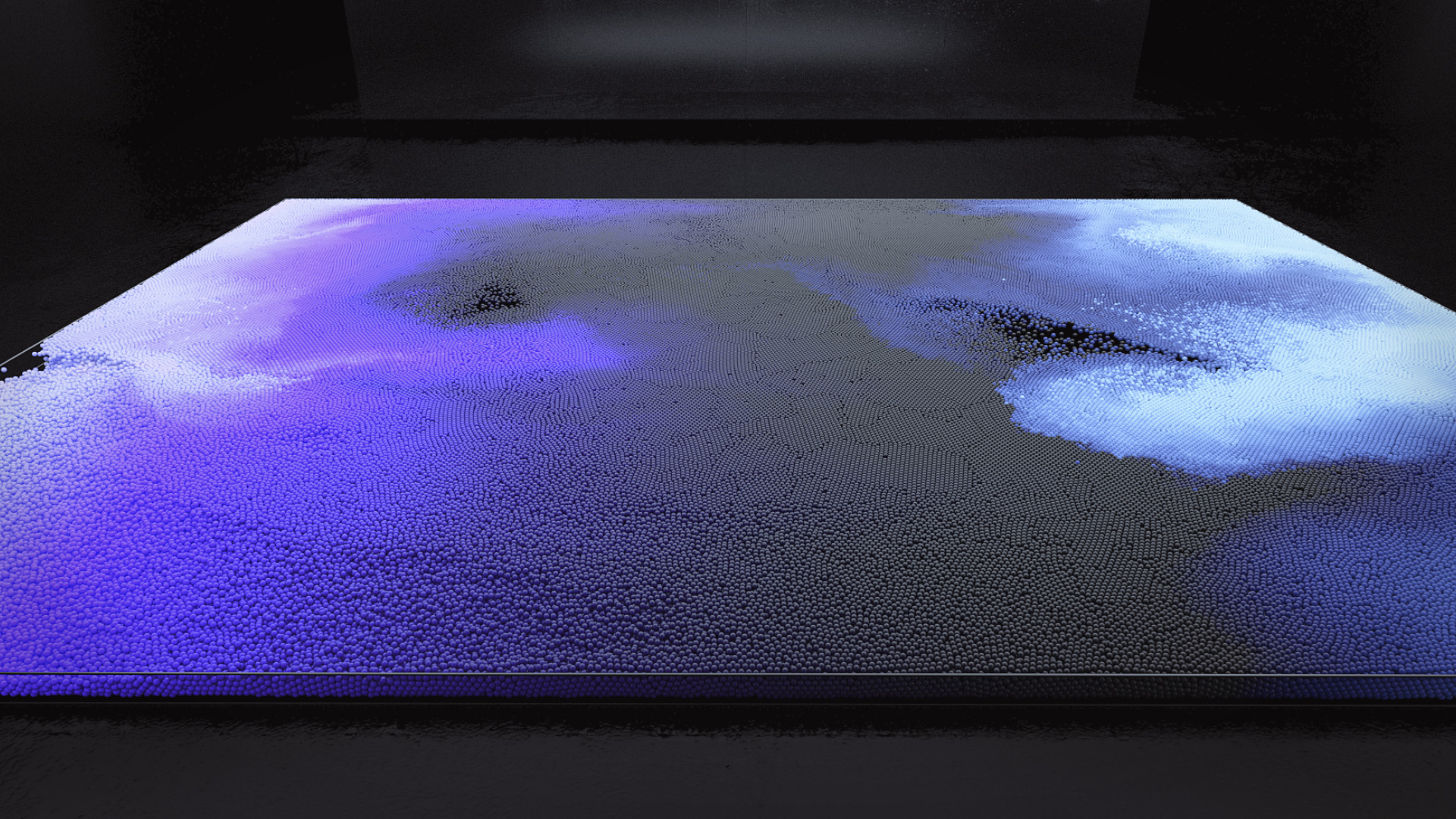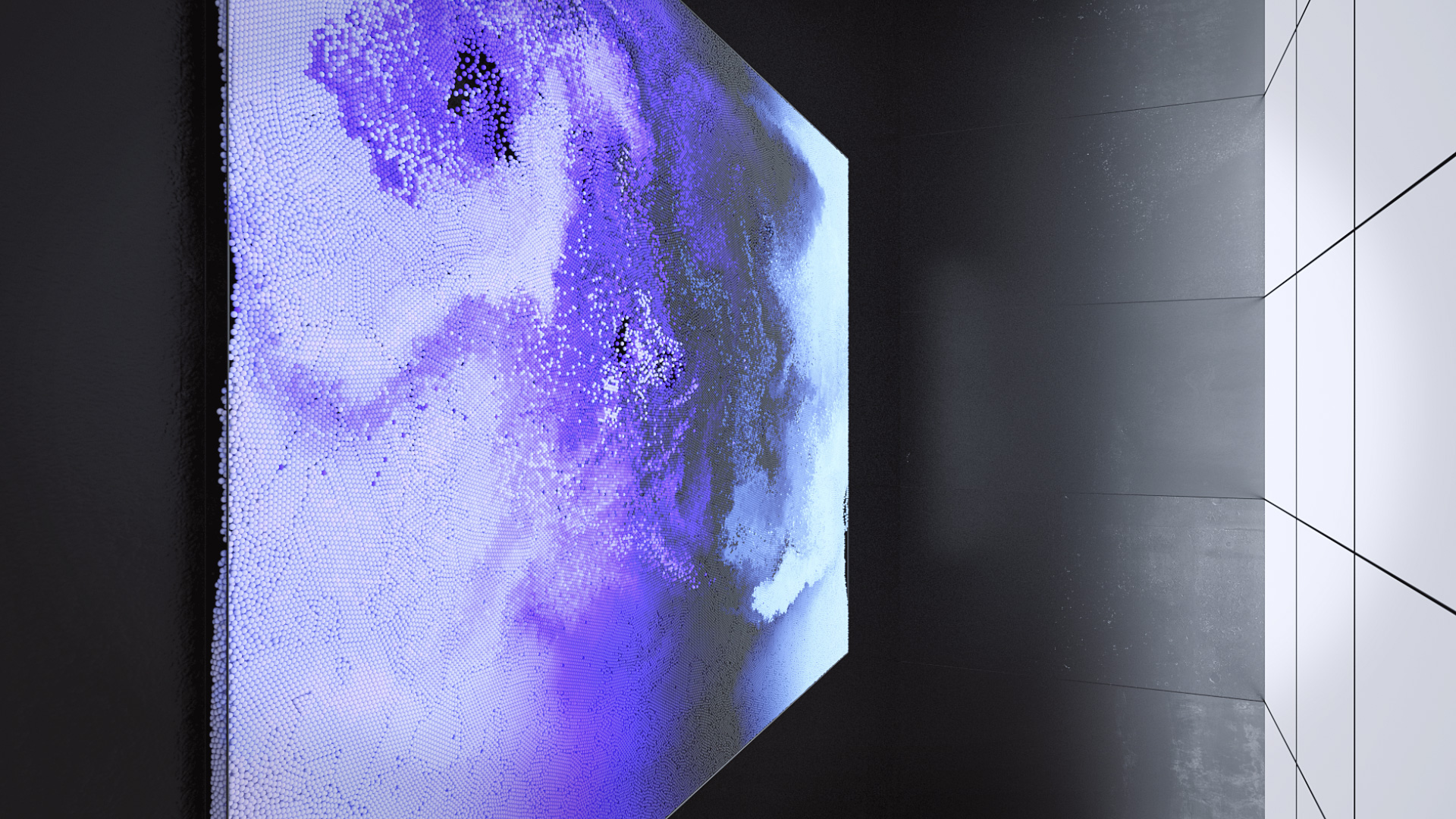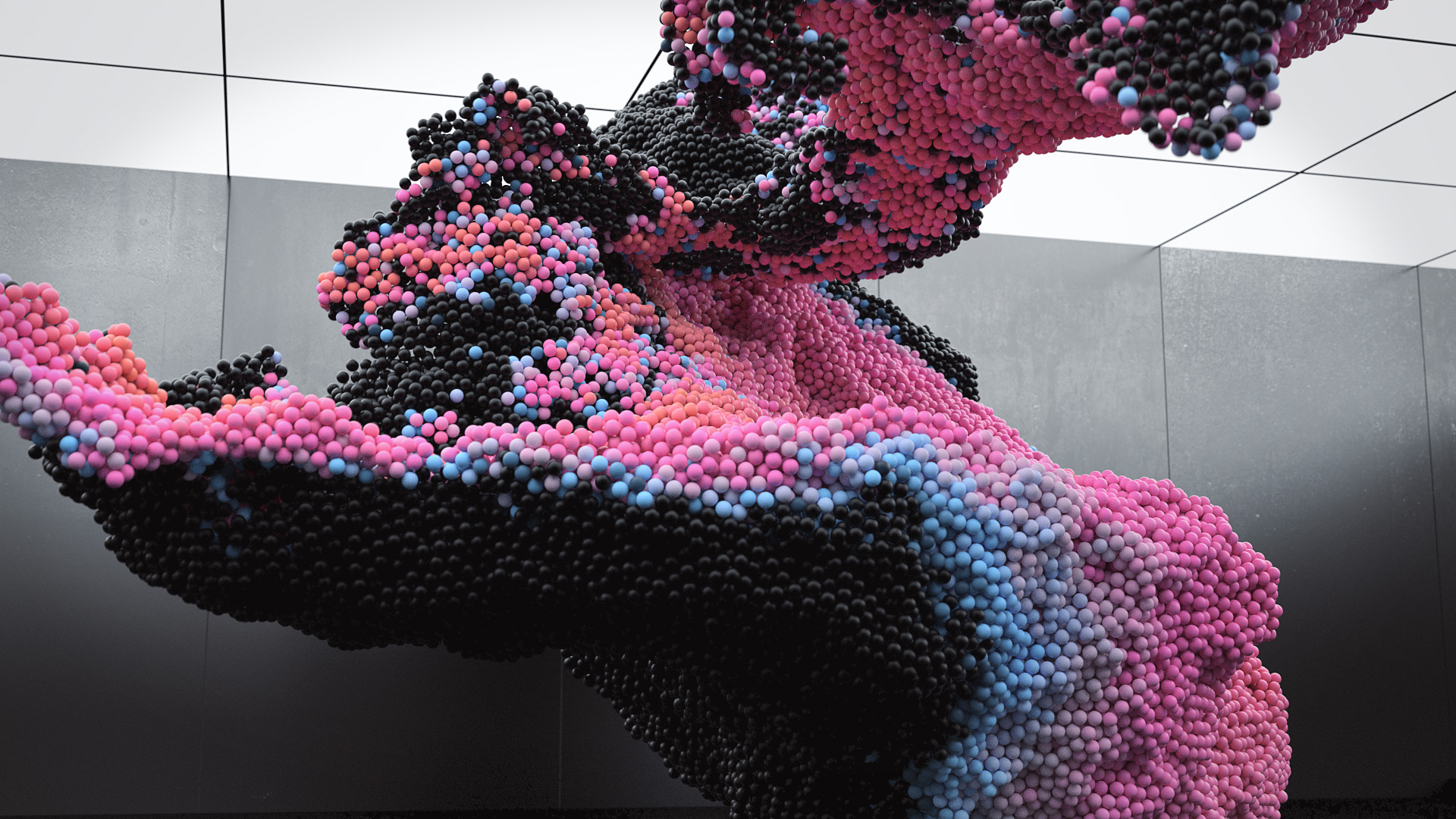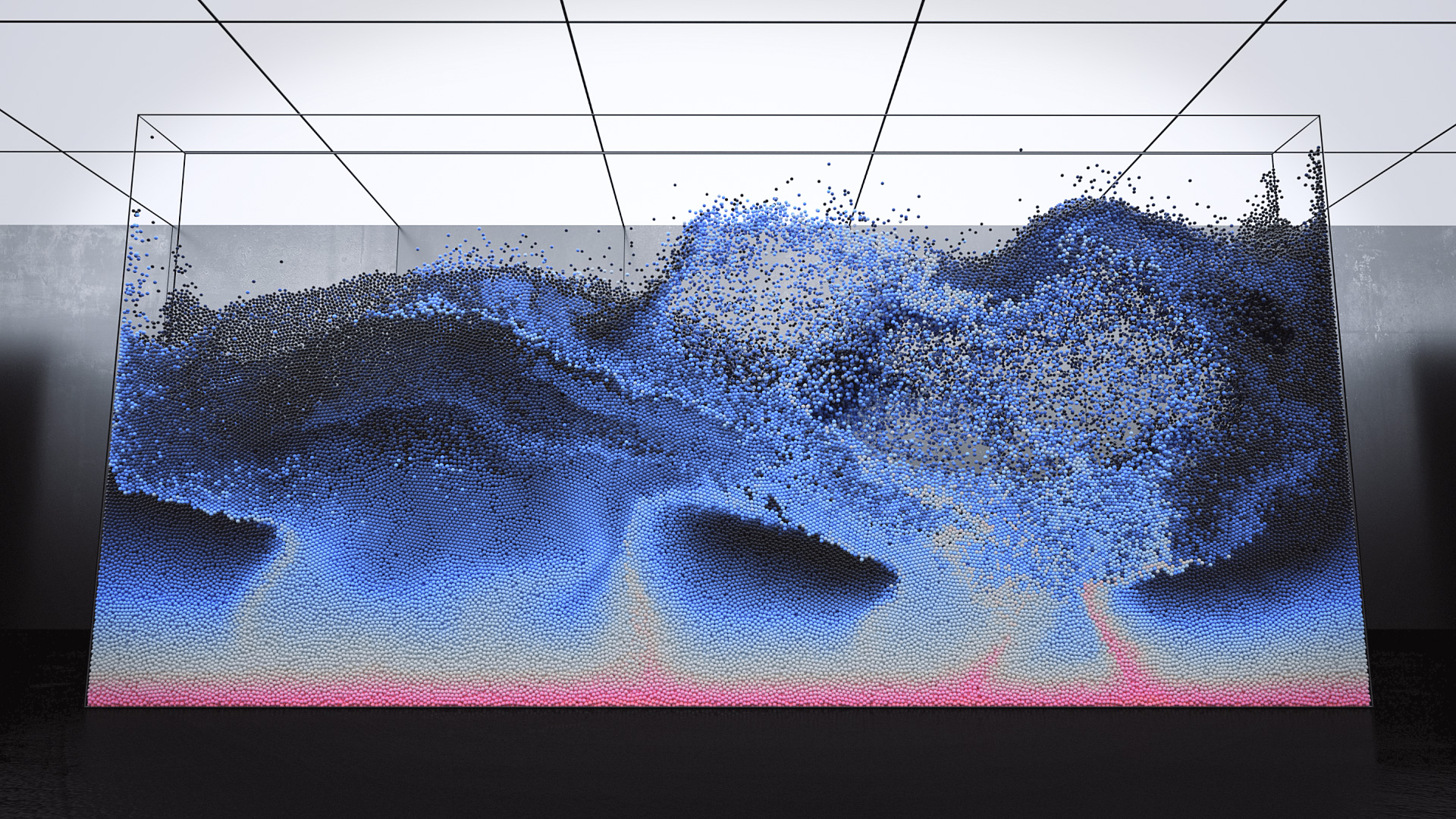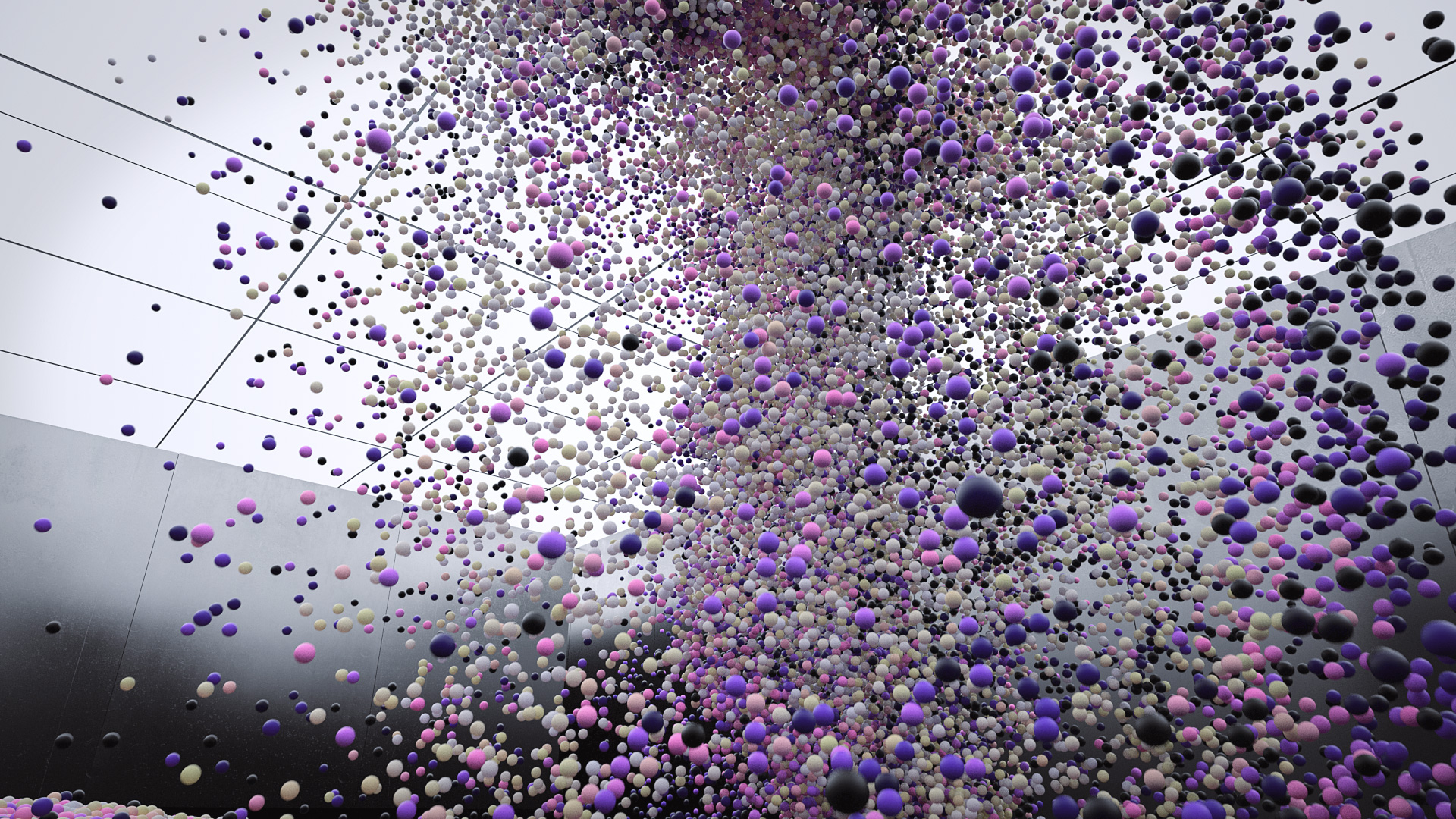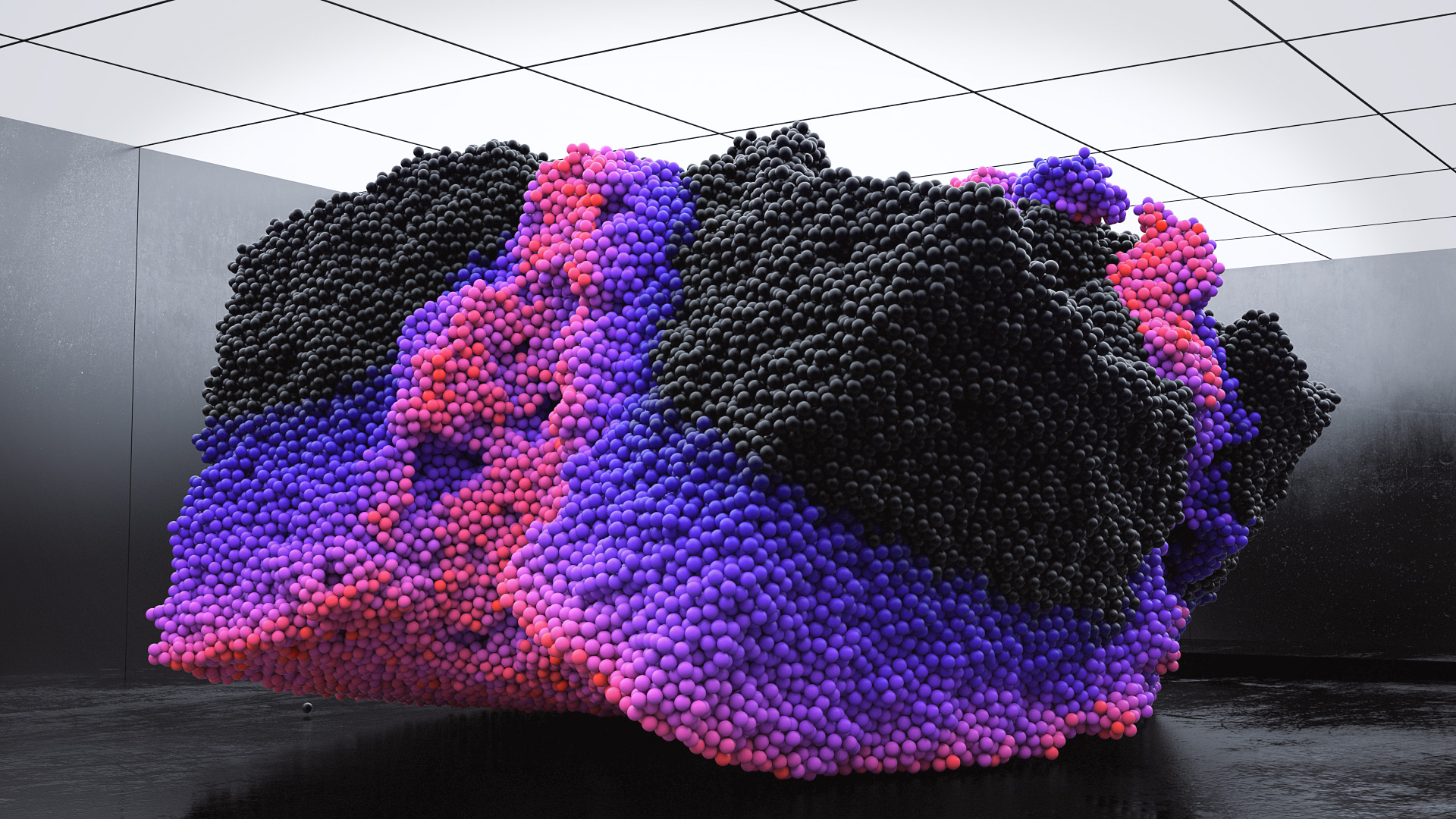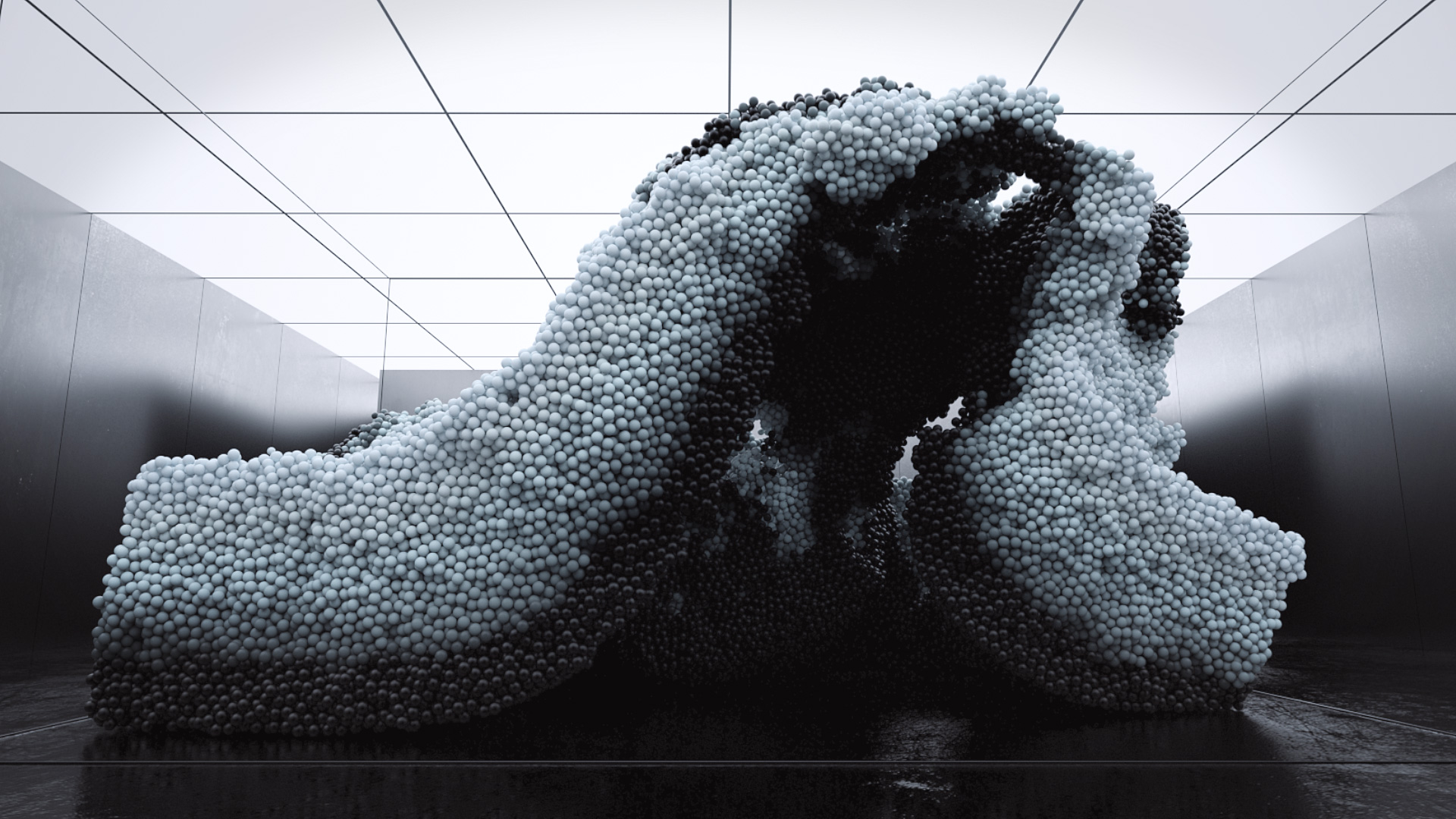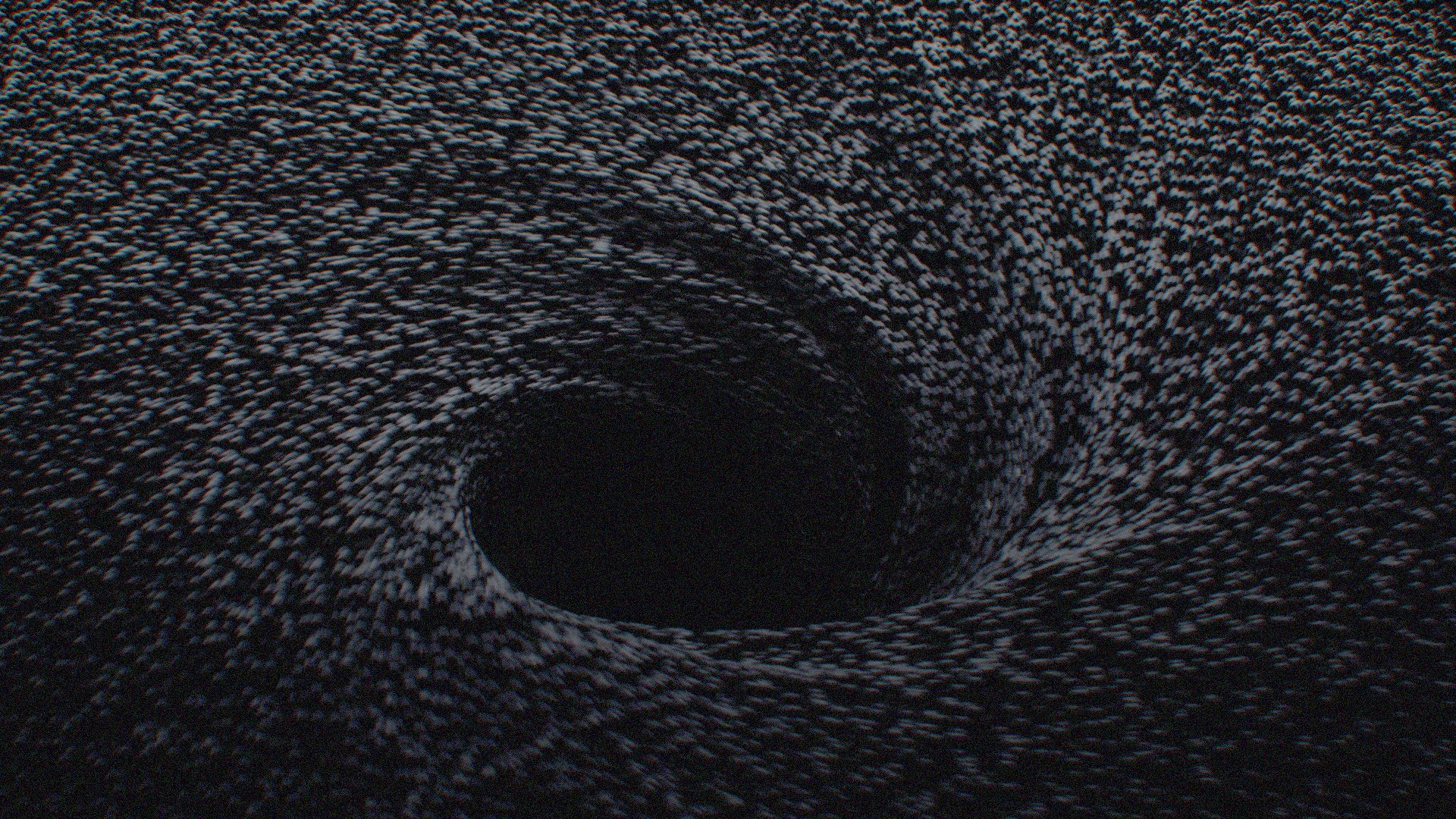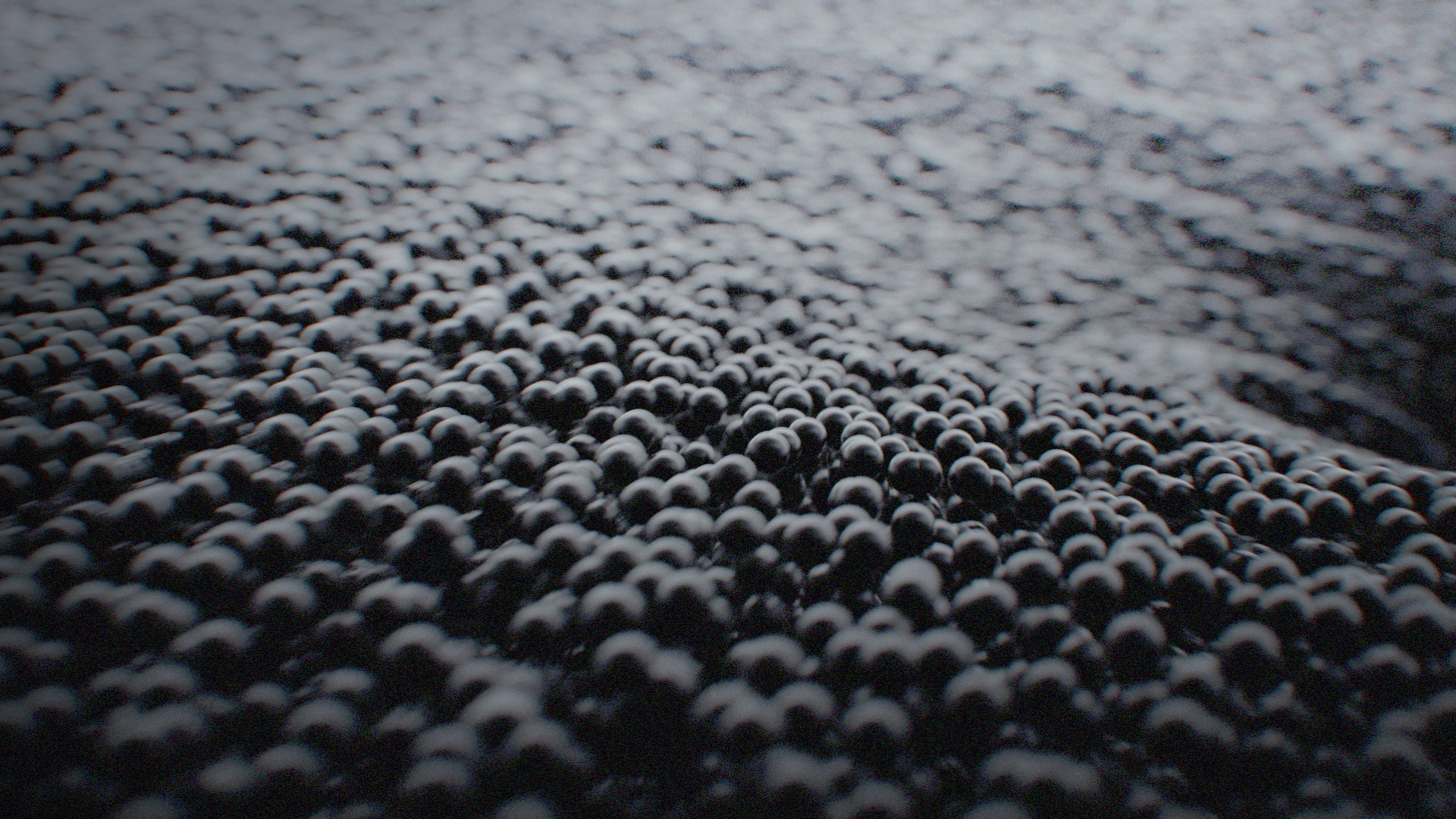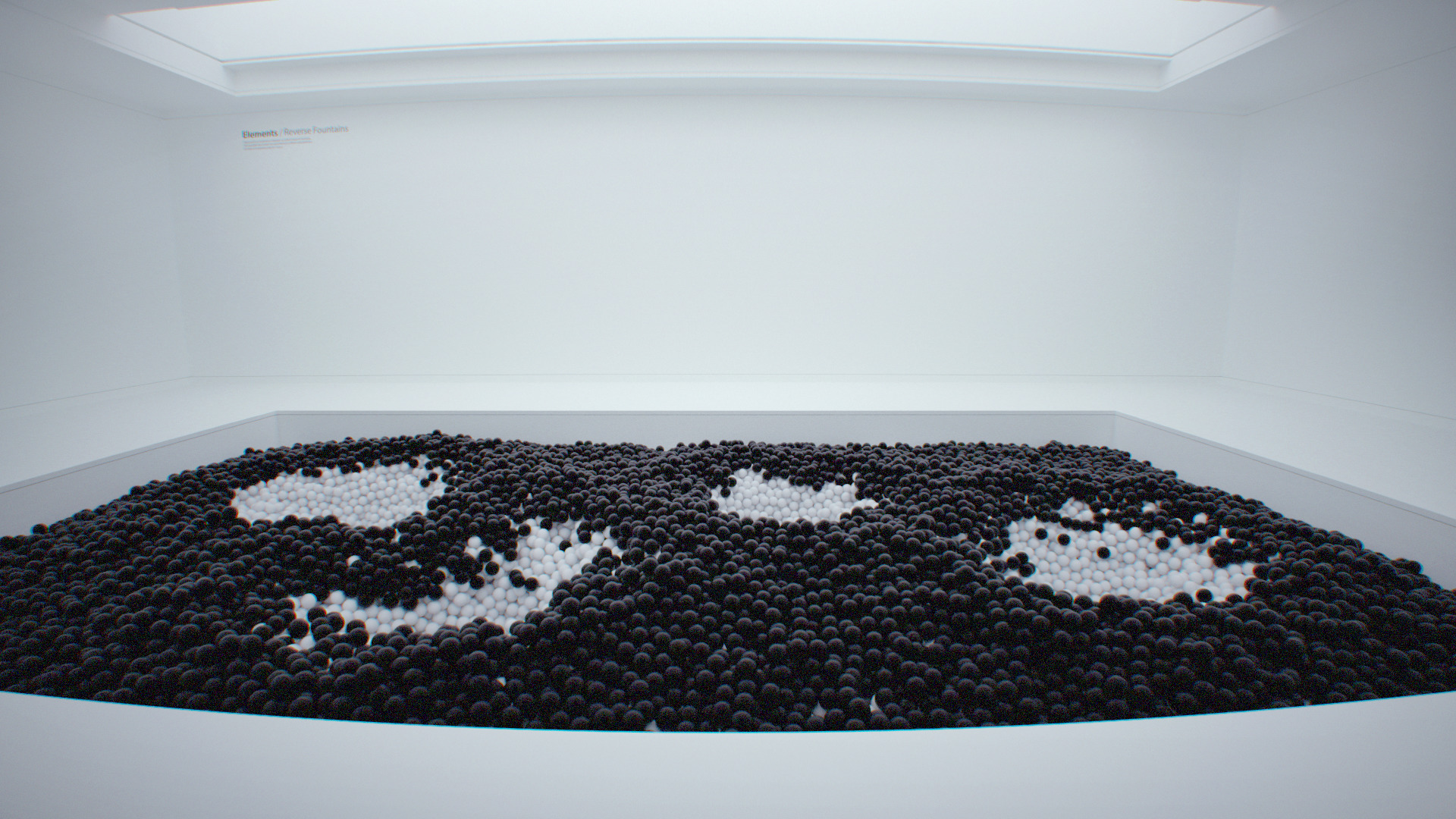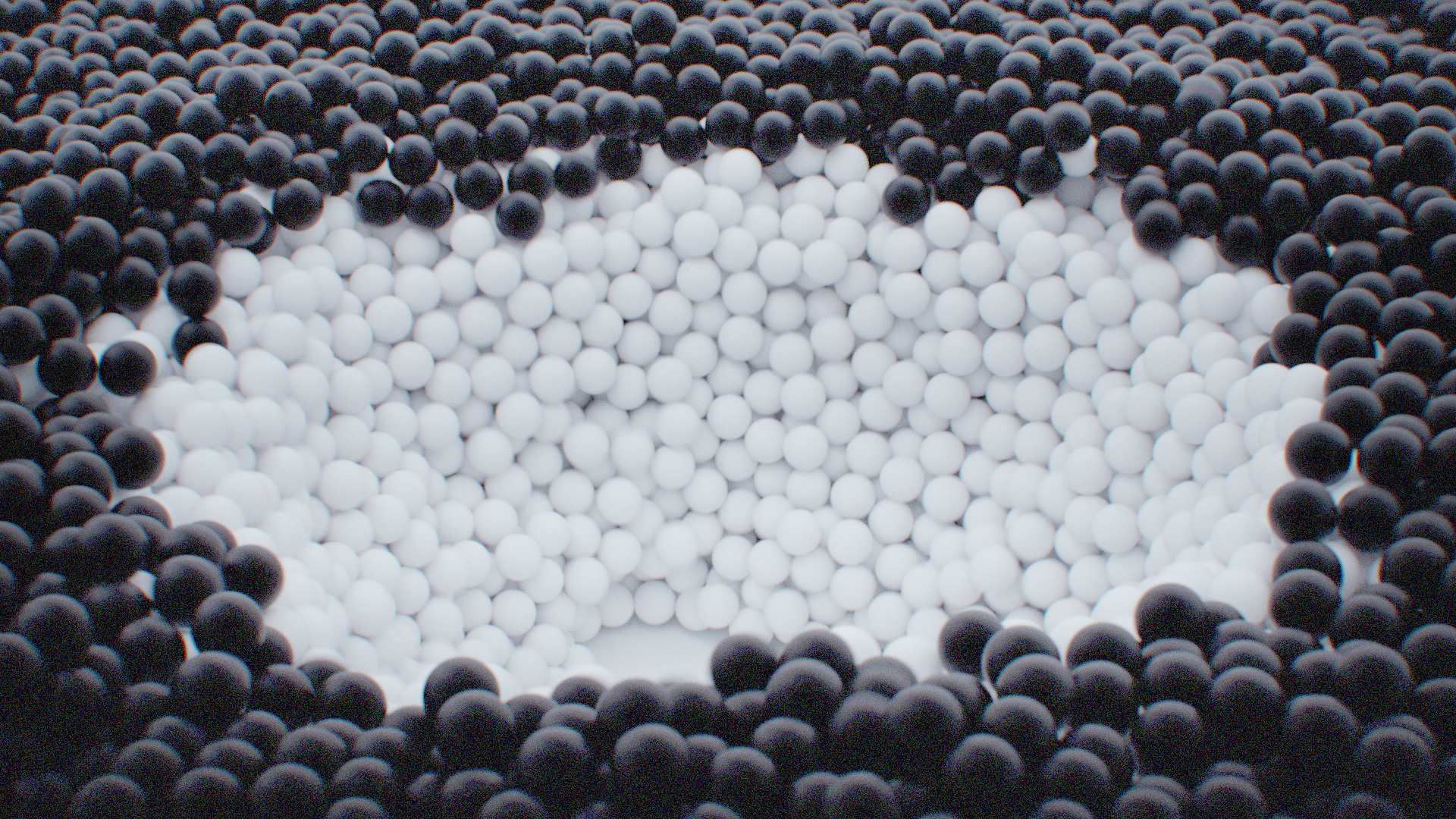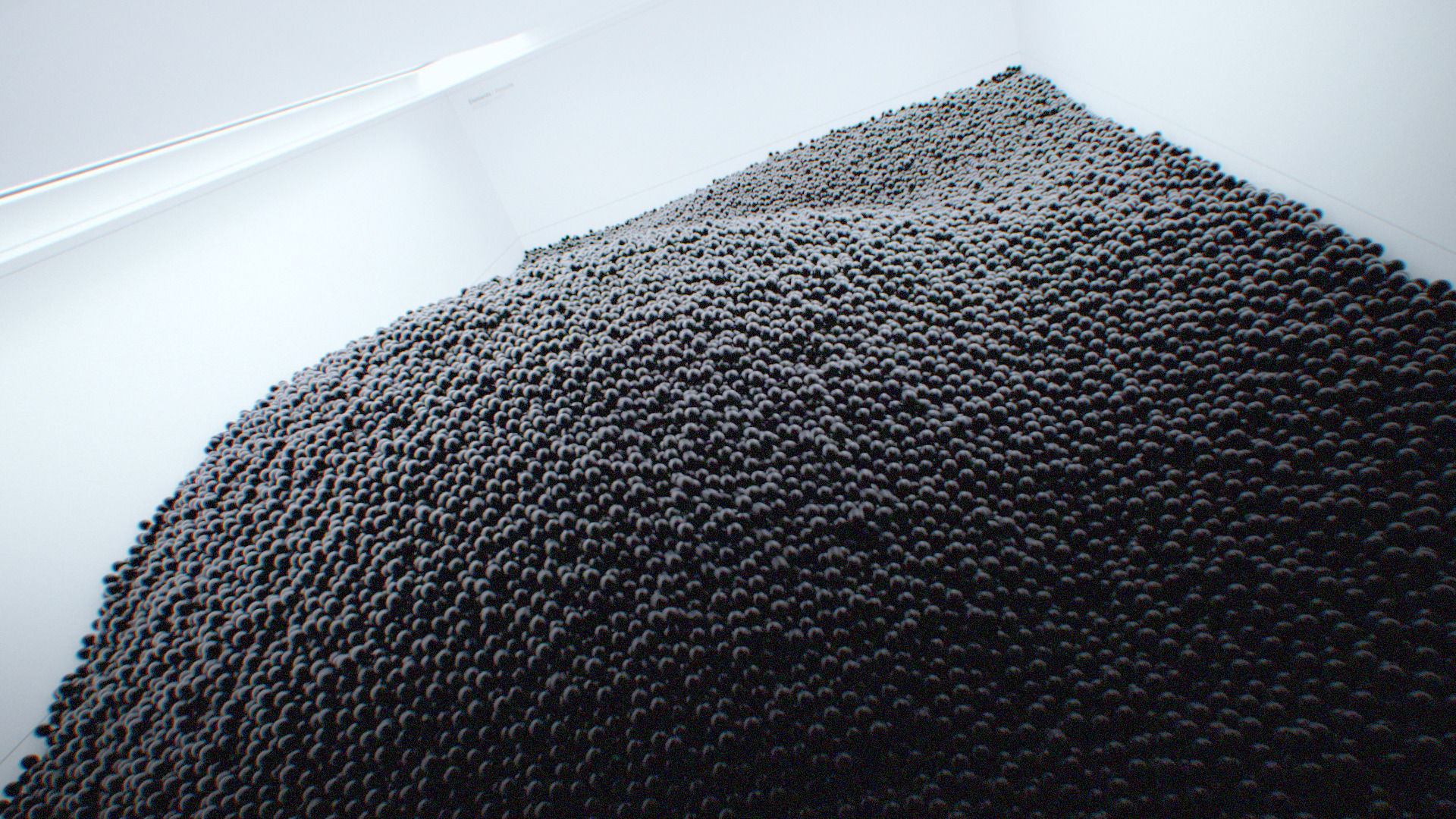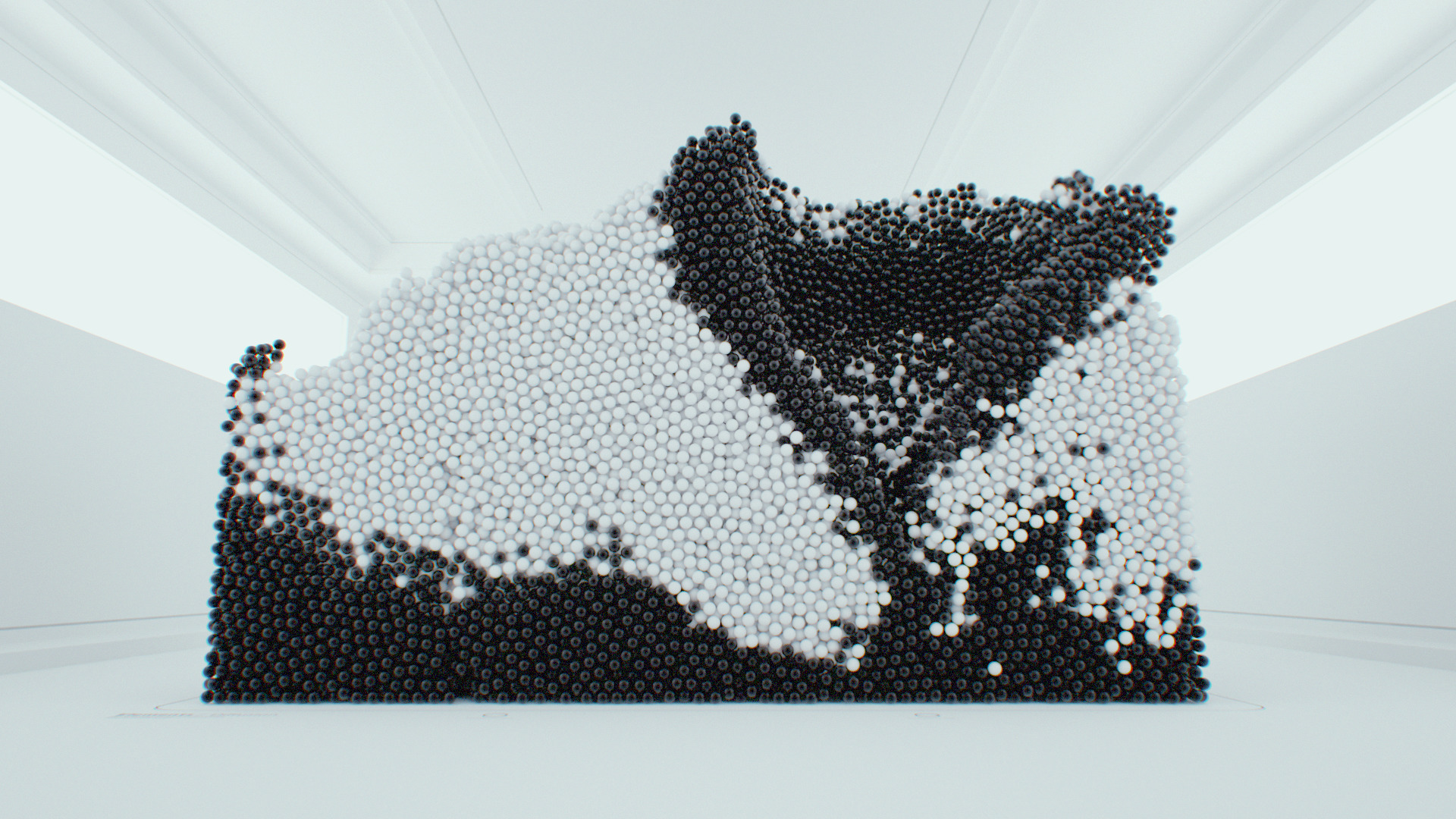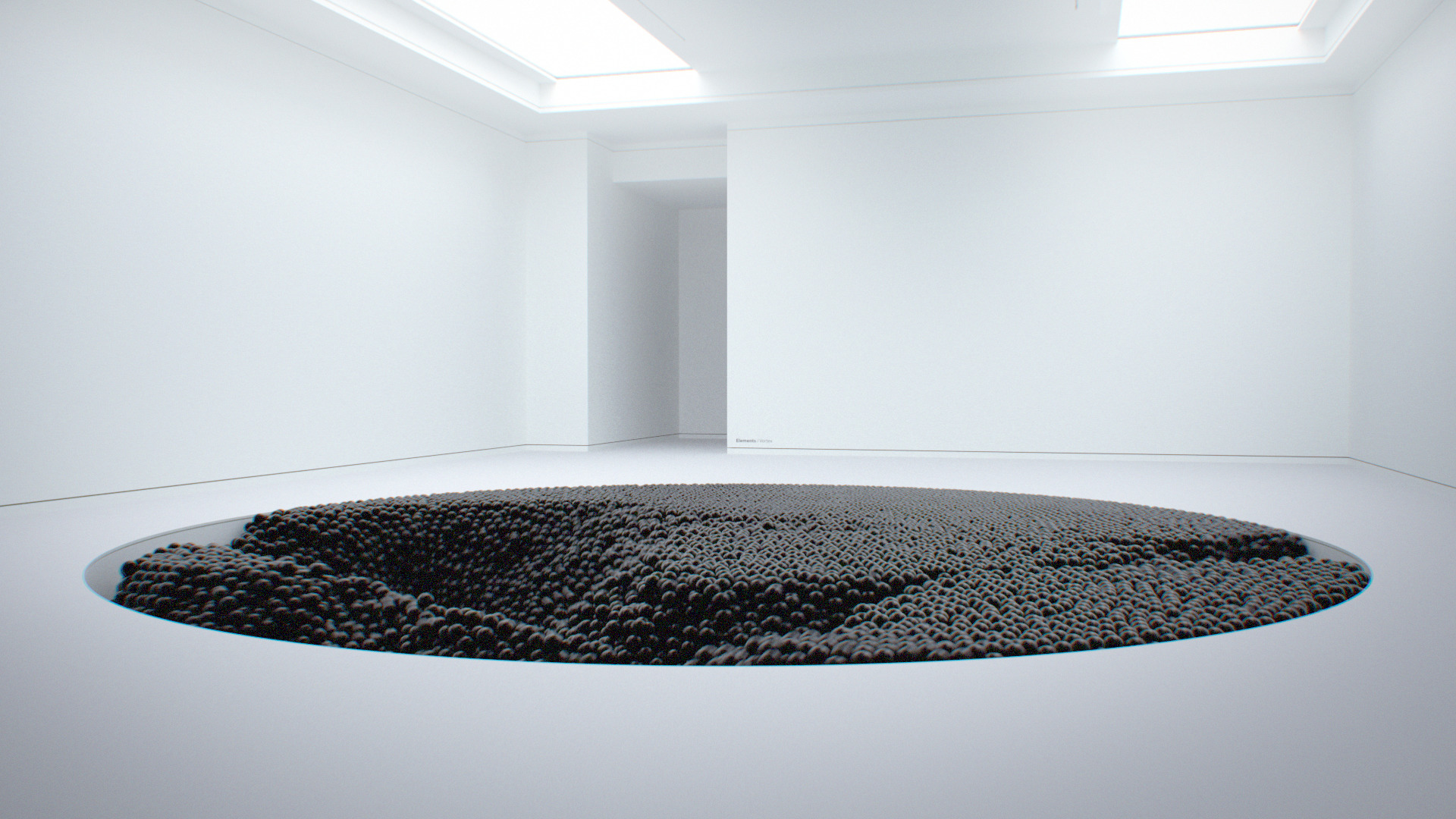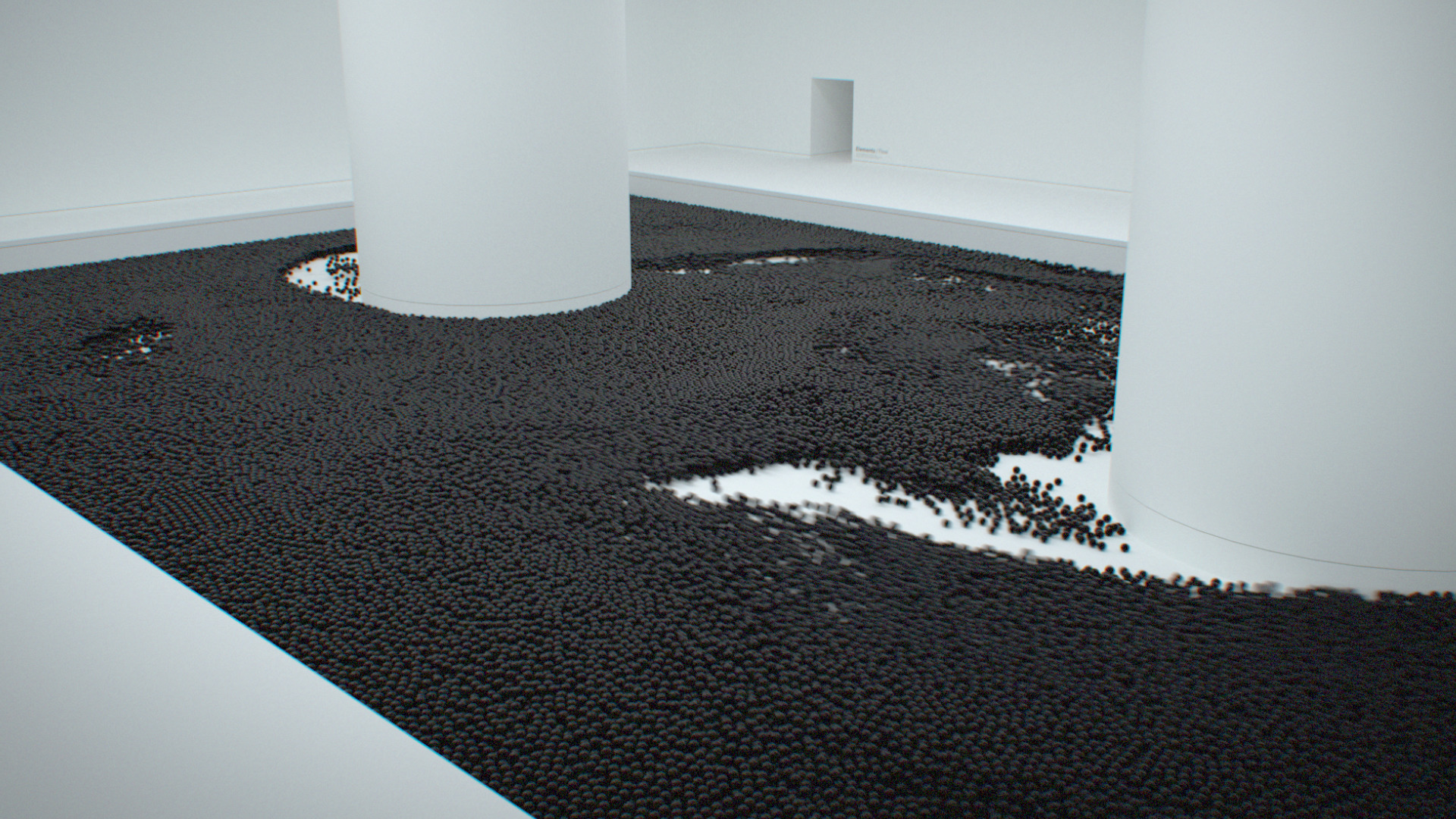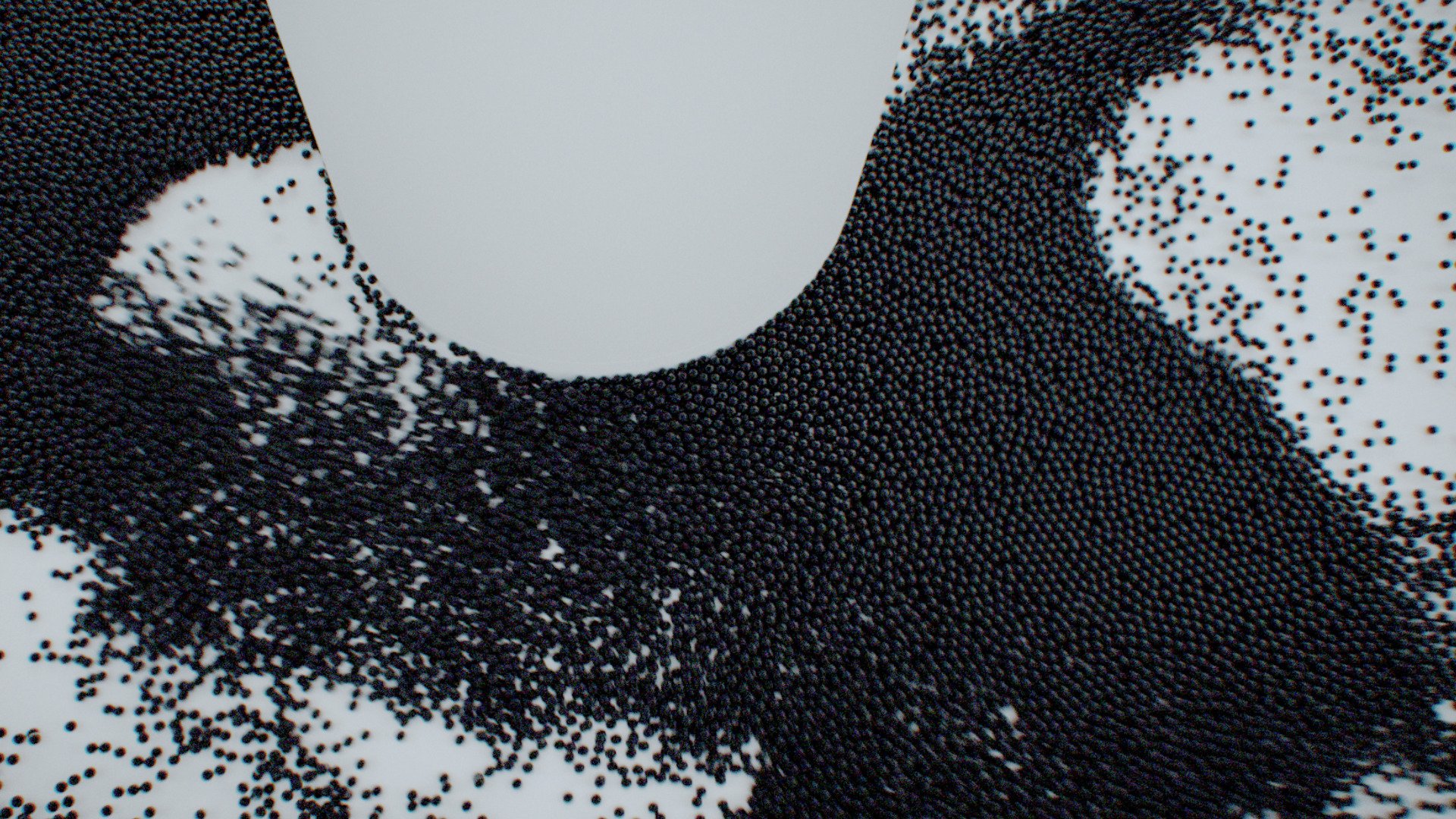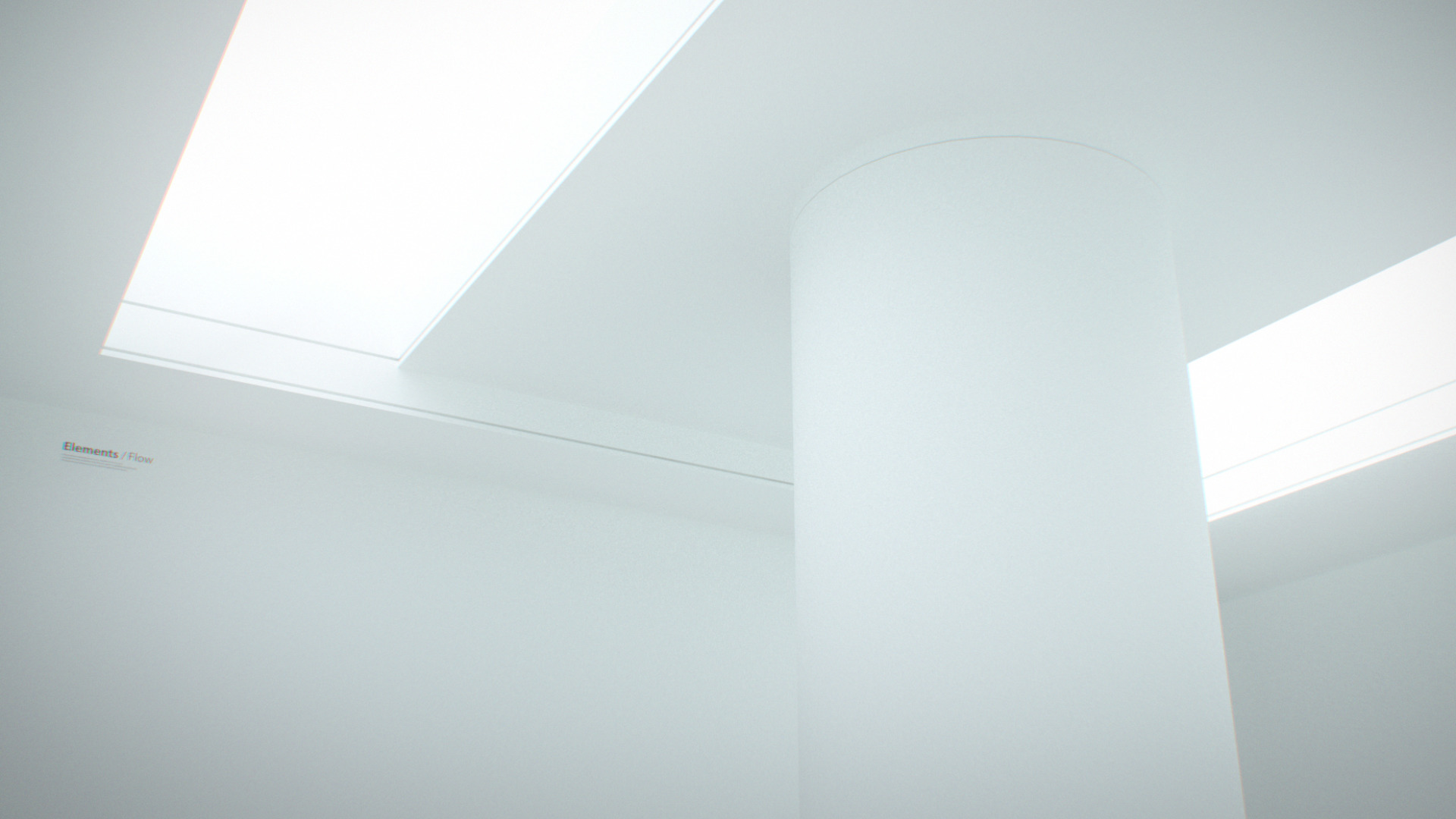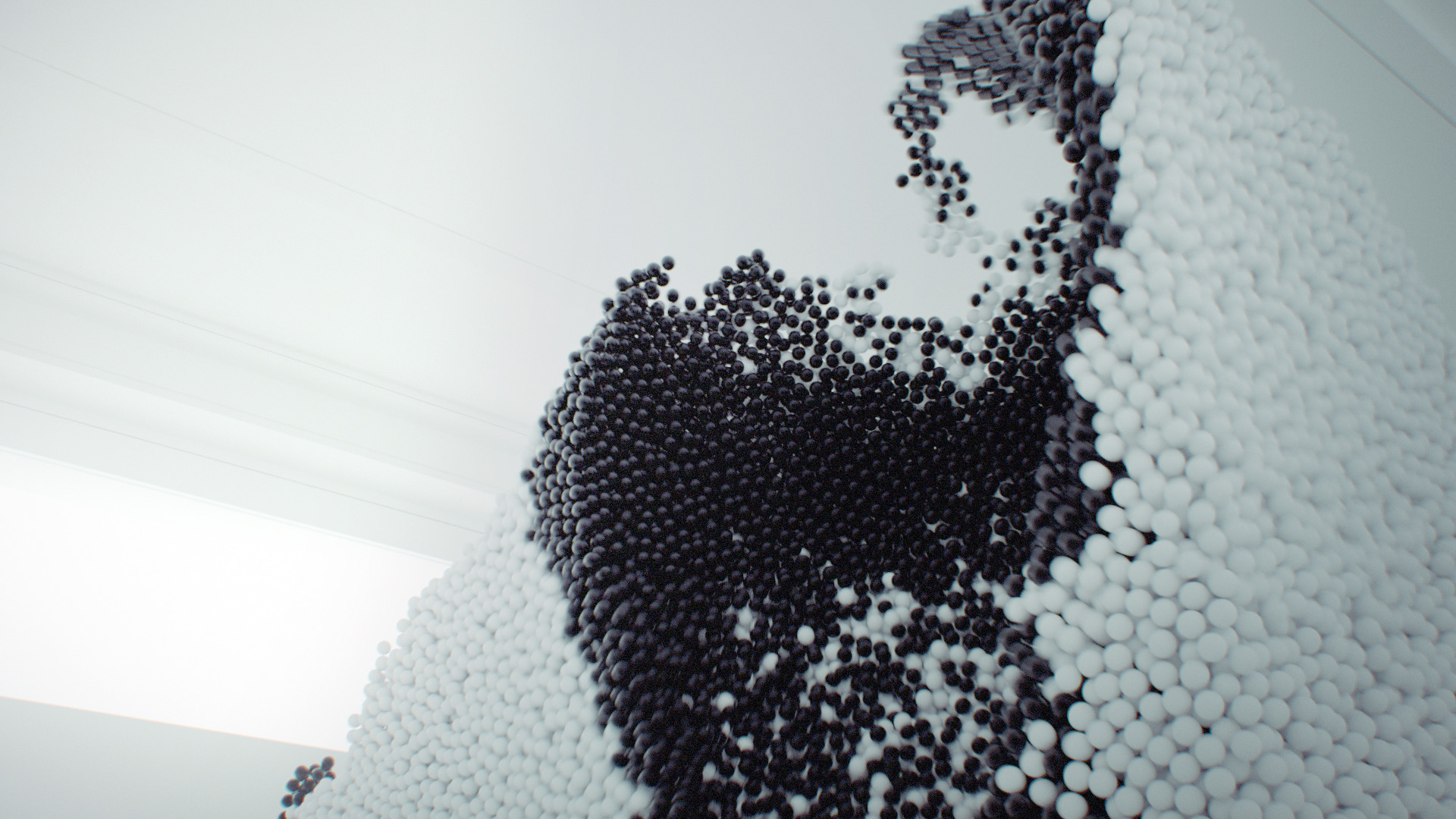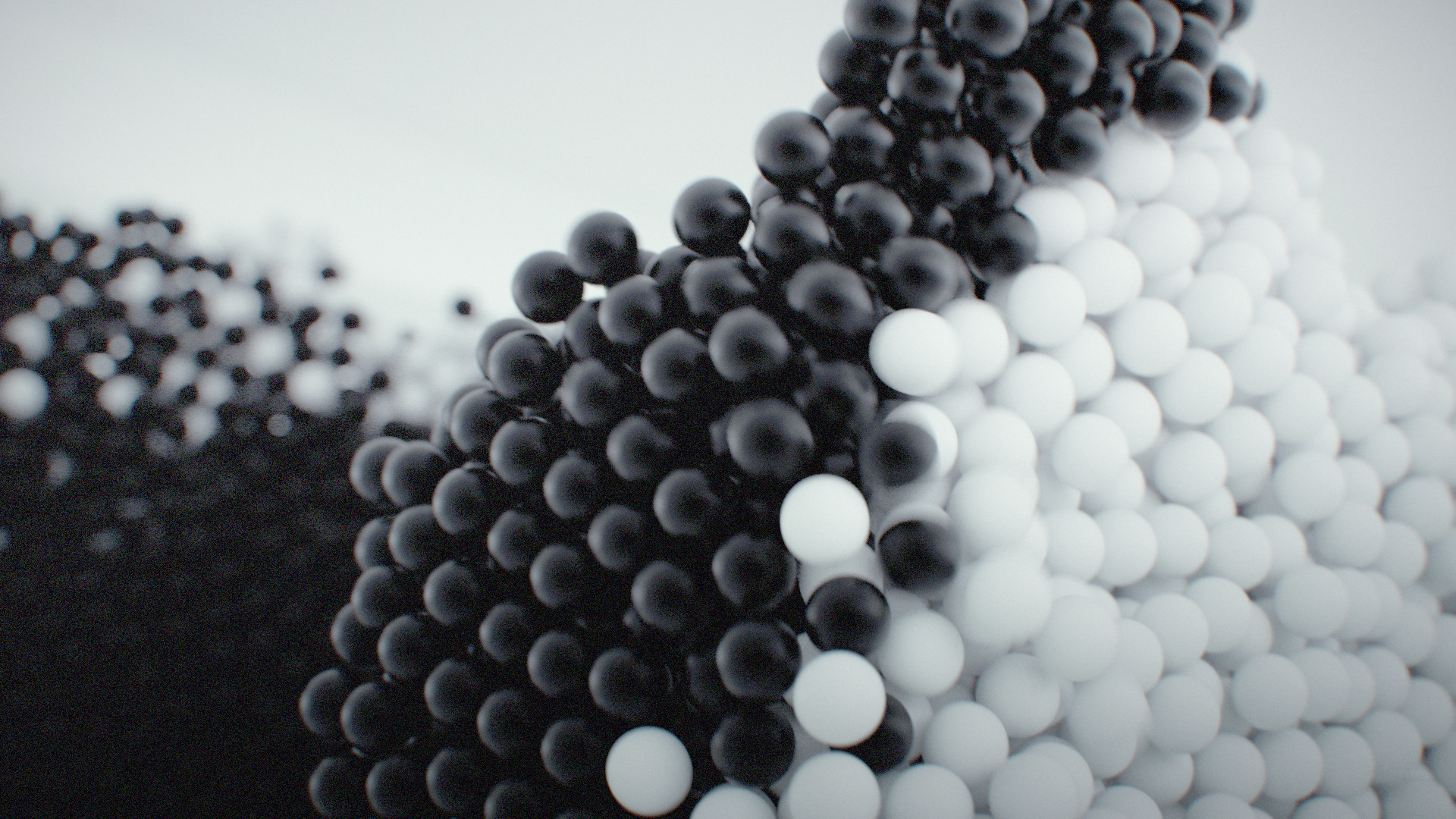Computations
Computations speculates a future when computation moves from the opaque ‘black boxes’ of our laptops and devices out into the world.
Art film, 2019
In the film, Zhestkov boldly envisions these decentralized machines as lush dynamic systems, which he compellingly describes as “floating networks of small transistors—some kind of a strange computing organism.”
The complex systems at the heart of Computations sway and undulate in perfect synchronization. Comprised of billions of particles, they are more than the sum of their parts—they are thinking machines that visualize, calculate, and communicate through coordinated movement and coloured illumination.


Evoking both supercomputers and synaptic structures, the shapeshifting forms are serene and enigmatic. Performing in space, they demonstrate how each tiny element contributes to the construction of an elegant, emergent whole. Particles rise and fall, clusters lock into place, and there is an underlying sense of order governing the ornate spatial choreography.


Graceful and rhythmic in their movement, the systems capture a convergence of biological and technological systems. Spread across space, all the elements are senders and receivers at the same time, self-sufficient yet astoundingly potent when connected with its counterparts.
Sensitive to external impact, they detect every change in their surroundings and analyze them on the spot, transforming humanity's relationship with the information and asserting the computing structures as an independent agent in the environments shared with humans.



The forms are artfully embedded in the architecture—the structures are not simply contained within the spaces, they are merged with the surroundings and continuously interact with them.
The artist imagines this link as the transition from static buildings and infrastructure to the ever-changing and adapting systems that account for the altering needs of their inhabitants. Revealing only the inside of these constructions, Zhestkov leaves the viewer a space for fantasising about how the entire world existing in a paradigm of total connectivity might look.

This amalgamation manifests itself not only as a part of the narrative but also as a way of storytelling: the whole story is told through the unity of architecture, movement, and sound, all meticulously composed by Zhestkov. The deliberate minimalism of Computations is a part of the artist's language, imbued with pure astonishment over the intricacy secreted in habitual.
An exquisite embodiment of a futuristic idea, Computations depicts a scene that might be as well interpreted figuratively. Seen as an abstract representation of contemporary interconnected reality, it is a representation of the information flows passing through our environments at any given moment and an artistic search for the equilibrium between humane and machine.

Simulation Hypothesis
First gallery solo show finding elements of universe creation in human culture and art.
View the projectMetaphysics
A series of artworks experimenting with material in the digital vastness.
View the projectArtificial Organisms
A combination of biological symmetry and impeccable digital matter, they are a representation of budding artificial intelligence.
View the projectModules
Modules is a VR art experience, where architecture, sculpture, film, and music blend together to immerse viewers into Zhestkov's world.
View the projectBorders
Borders is Zhestkov’s first project exploring the integration of digital sculptures into the physical reality.
View the projectWaves
Connecting particles into mighty flows, Waves is an examination of shifts of energy in complicated systems that lead to the inevitable transformation.
View the projectPoints of View
A diptych about mind and interpretation created for Christie’s charity sale.
View the projectPlayStation 5
Two bespoke artworks created for the global launch of PlayStation 5 based on Zhestkov's projects — Layers and Computations, which became embodiments of the soul of the new console.
View the projectBMW i4
An exploration of the primary physical forces behind the car and a research of forces that underlie our existence in the universe.
View the projectComputations
Computations speculates a future when computation moves from the opaque ‘black boxes’ of our laptops and devices out into the world.
View the projectLayers
Layers is an artwork dedicated to the exploration of the relationship between the inner and the outer sides of objects.
View the projectVolumes
An abstract representation of transformation and resilience, Volumes is an observation of digital sculptures consisting of millions of spherical particles.
View the project